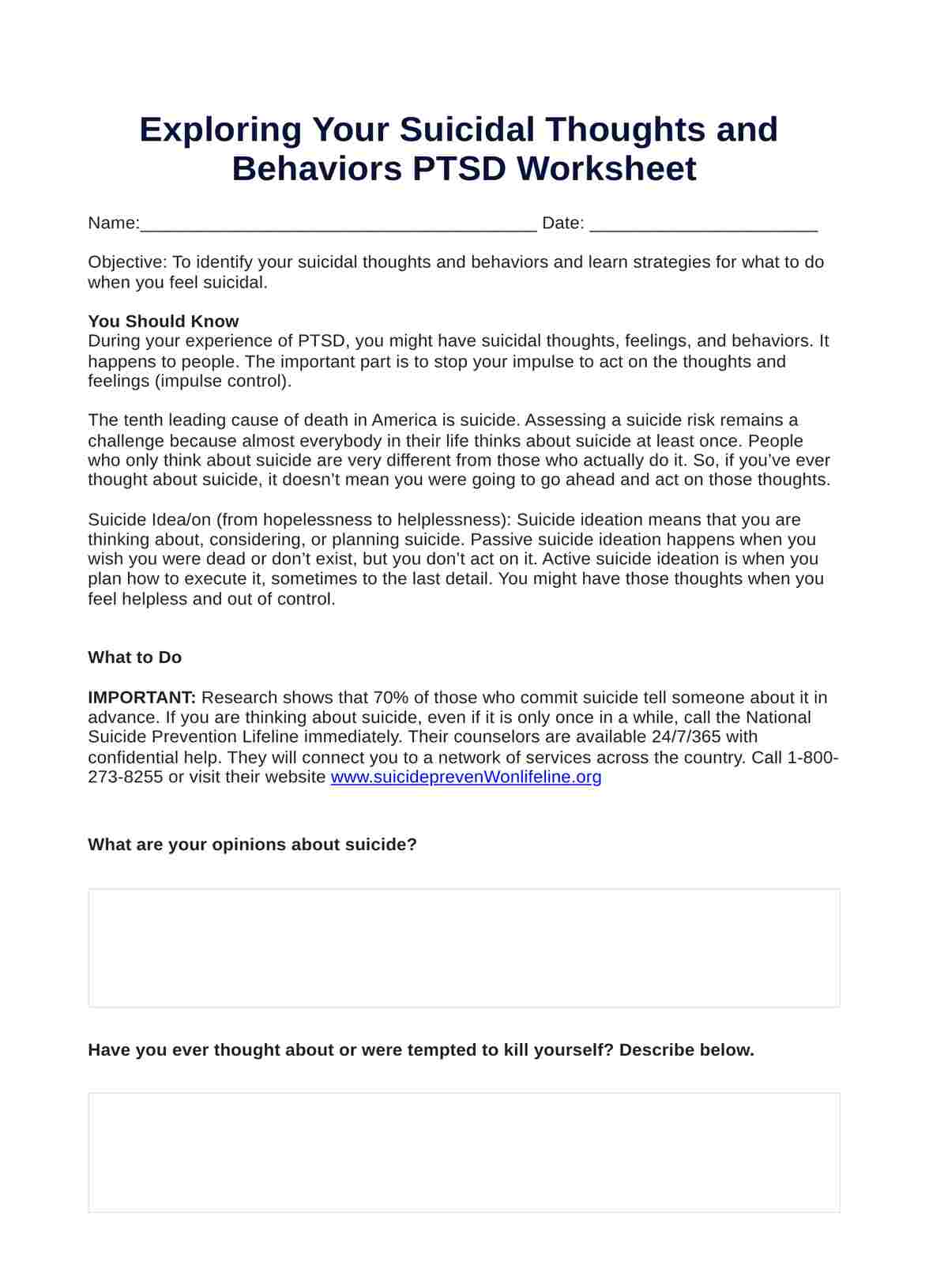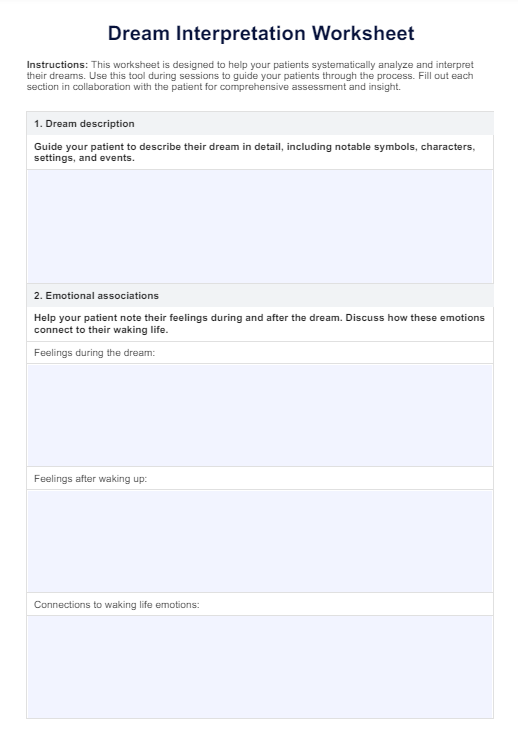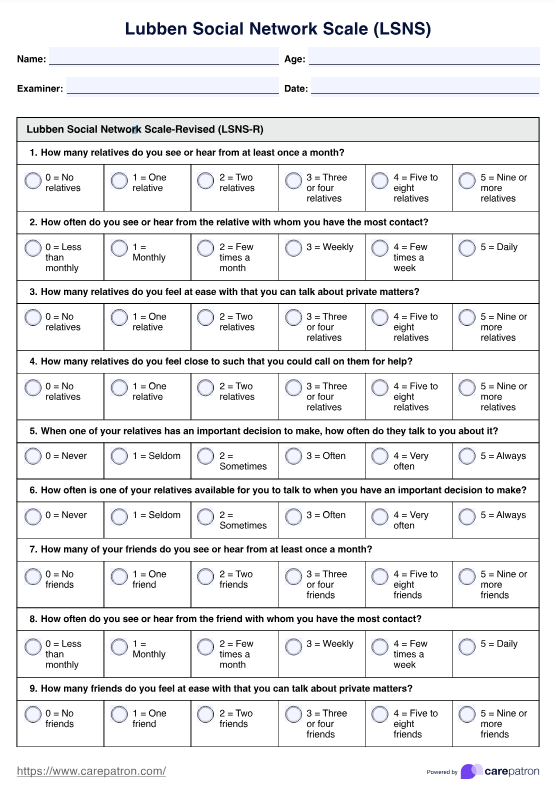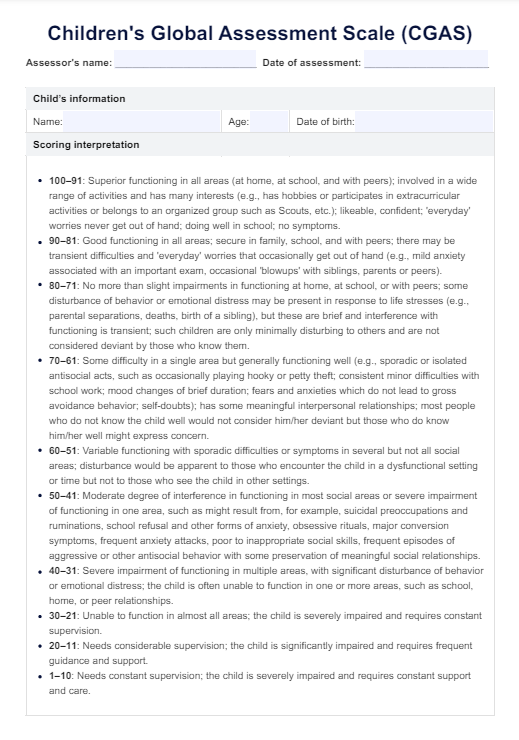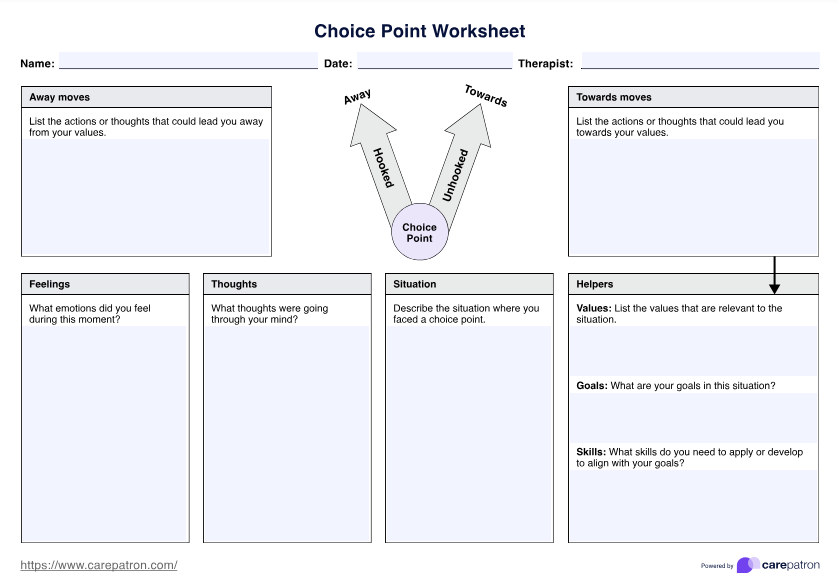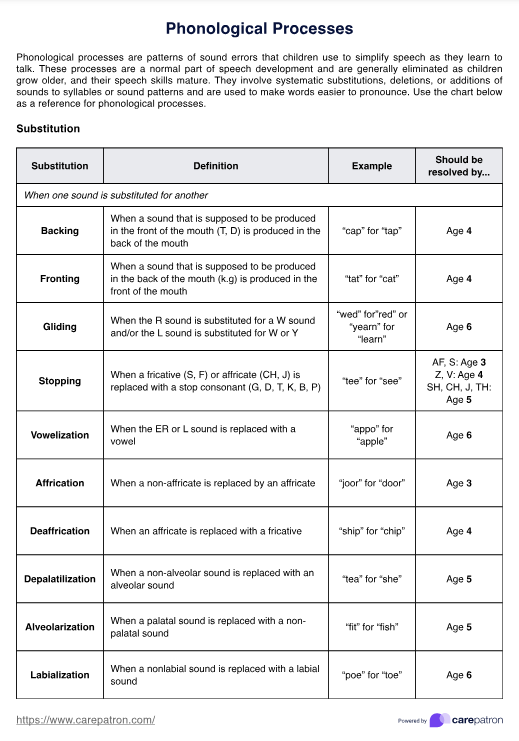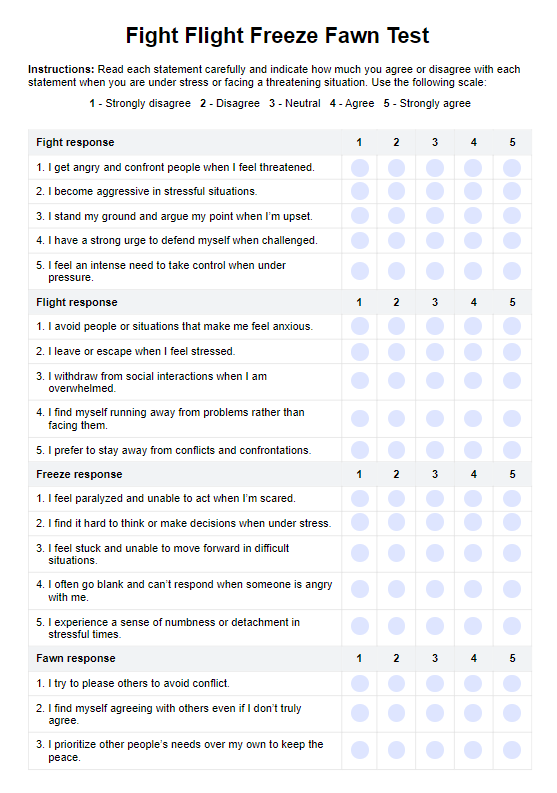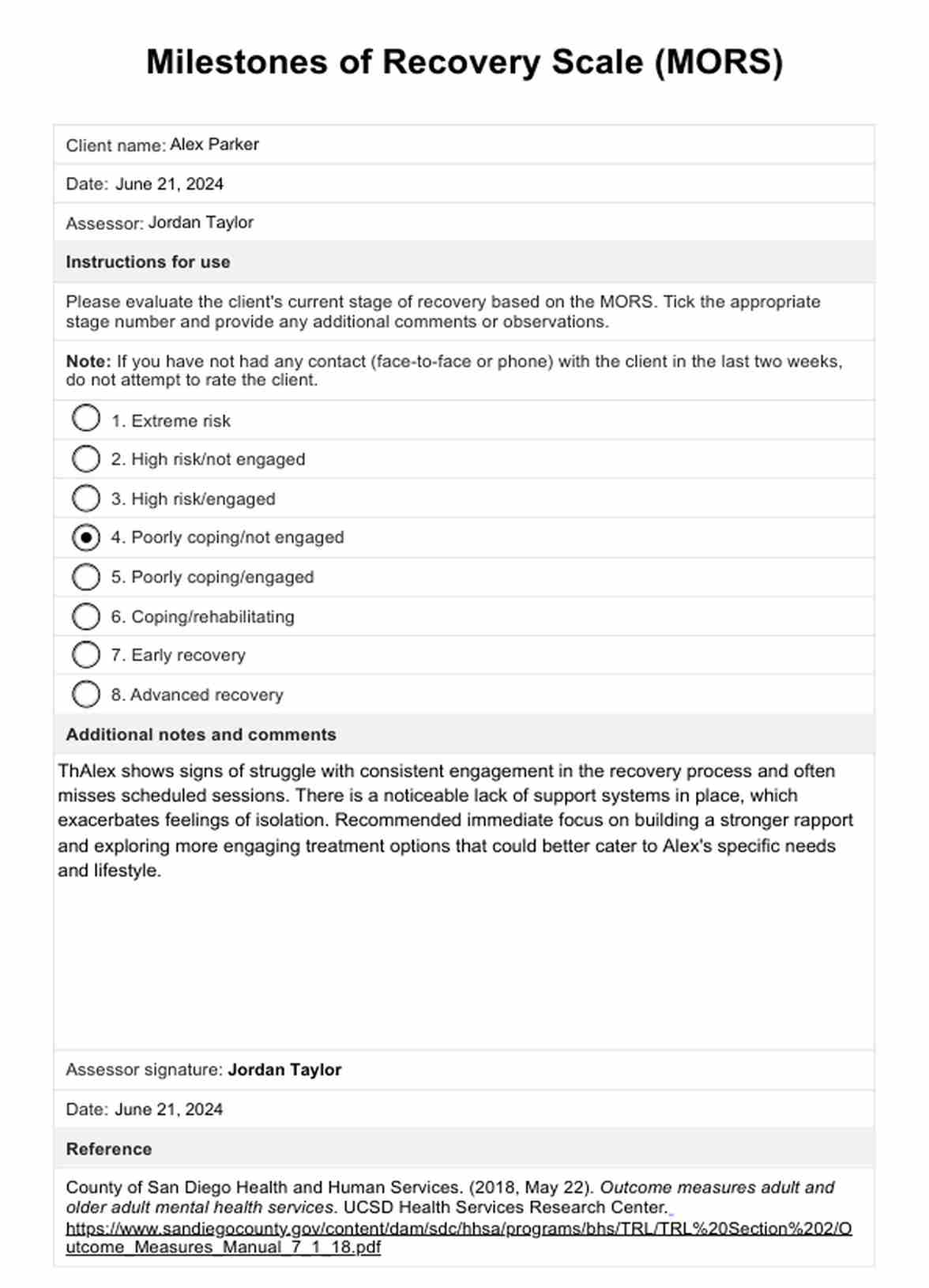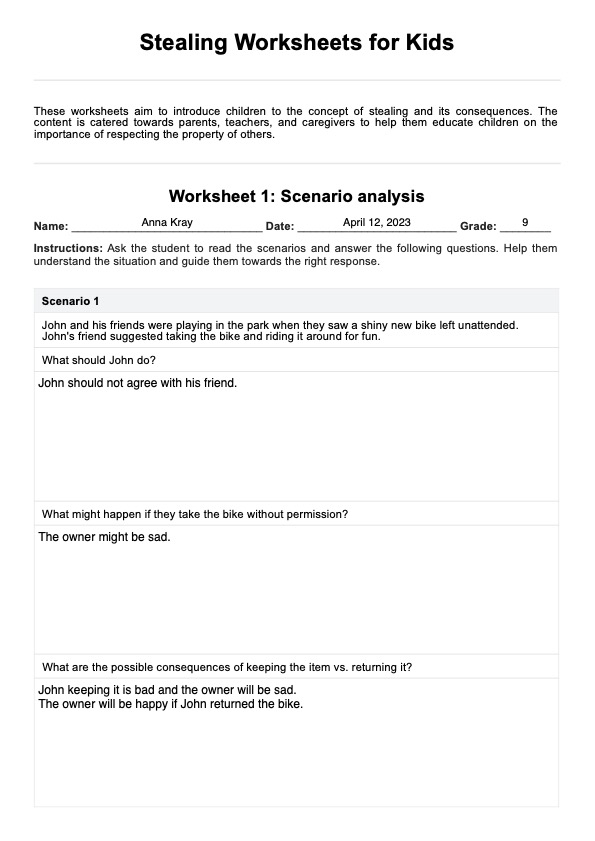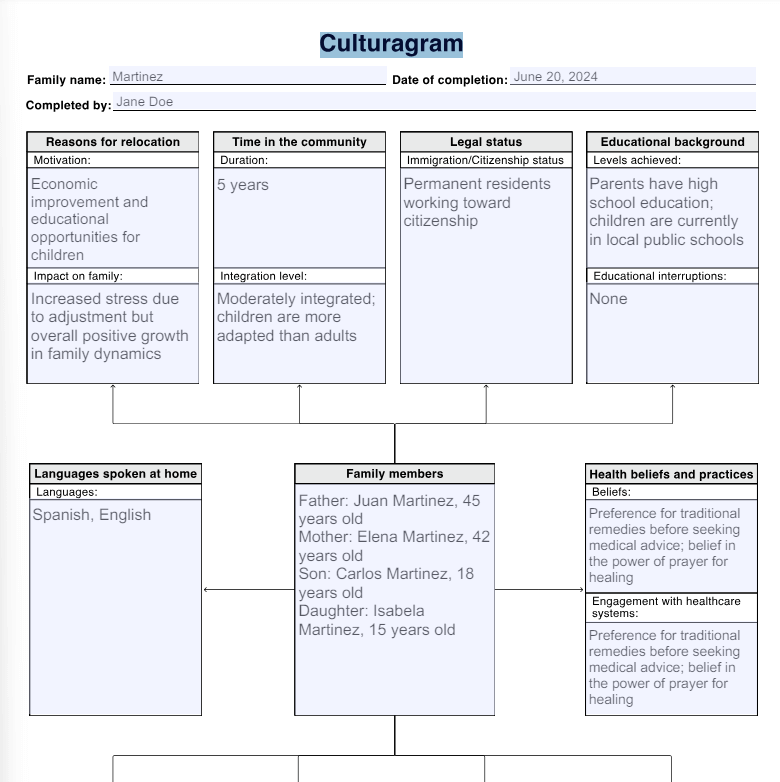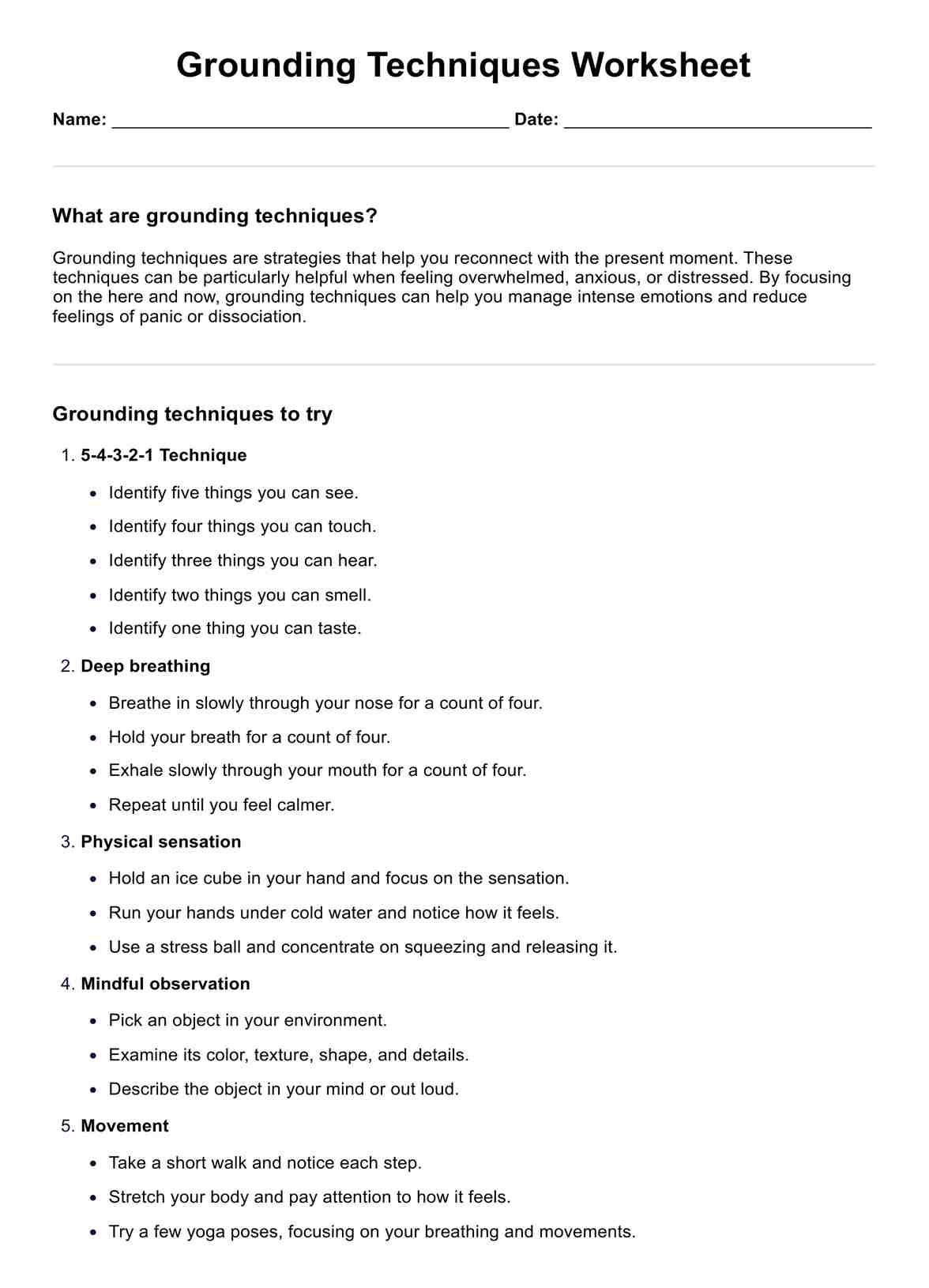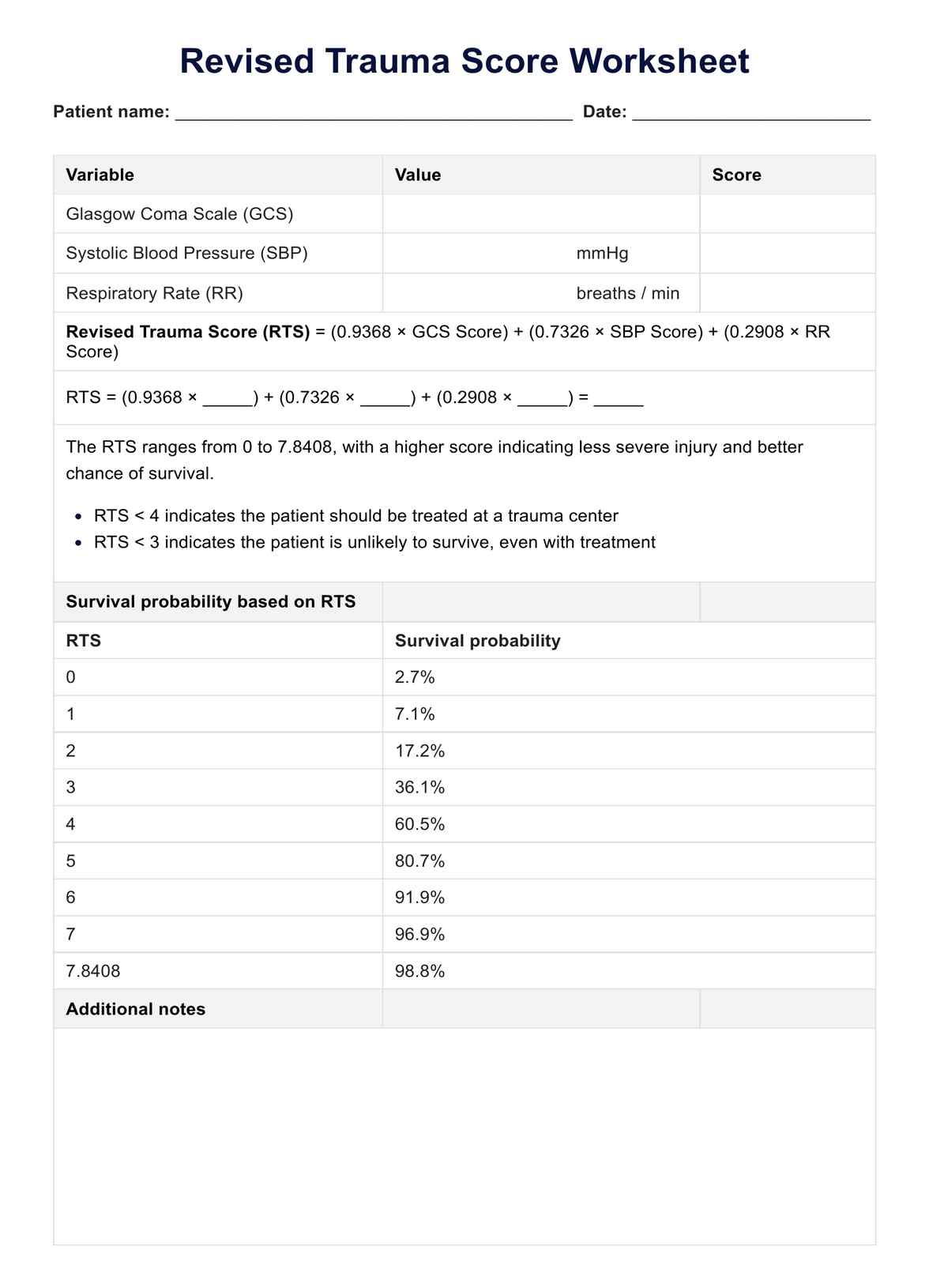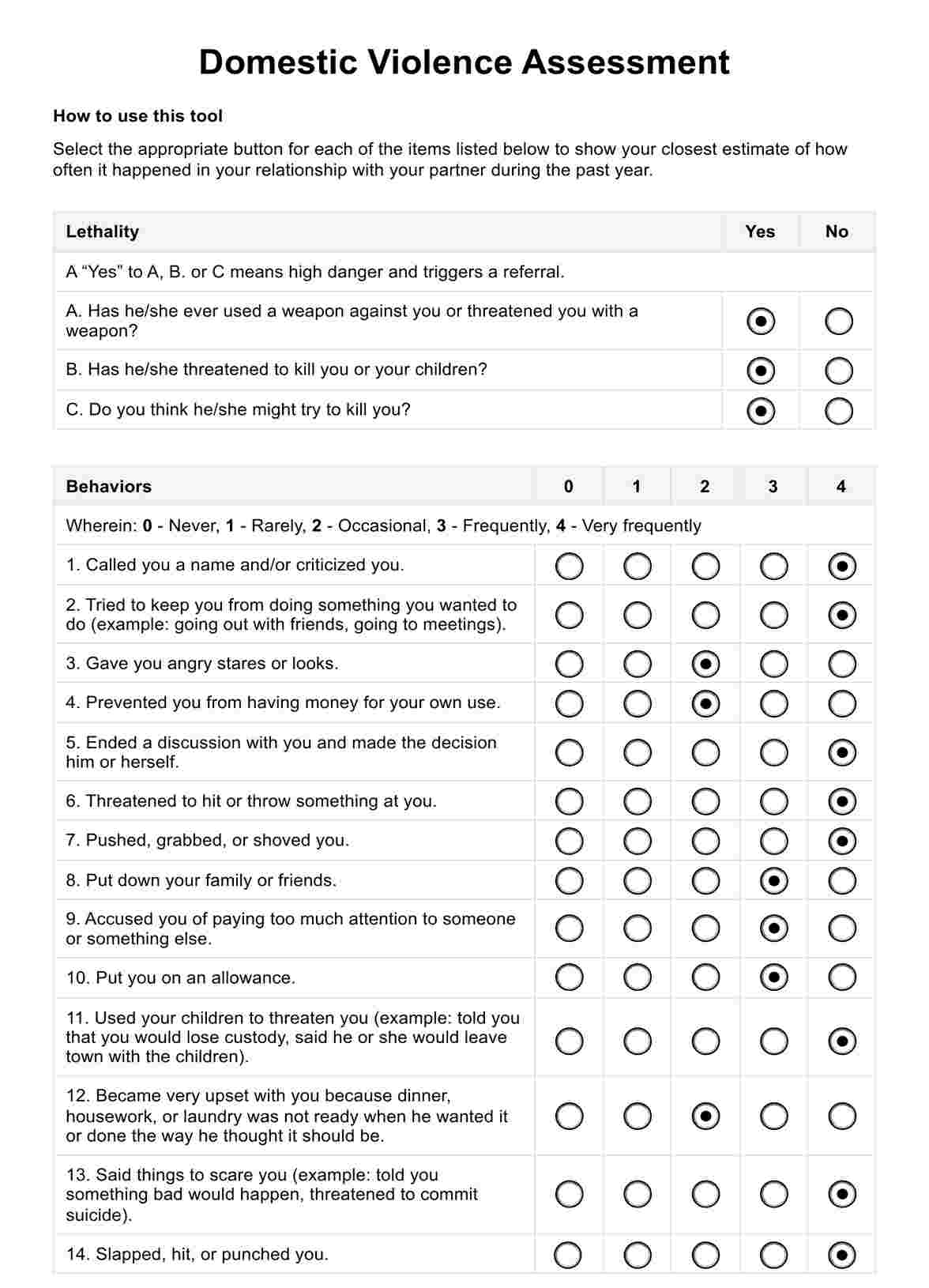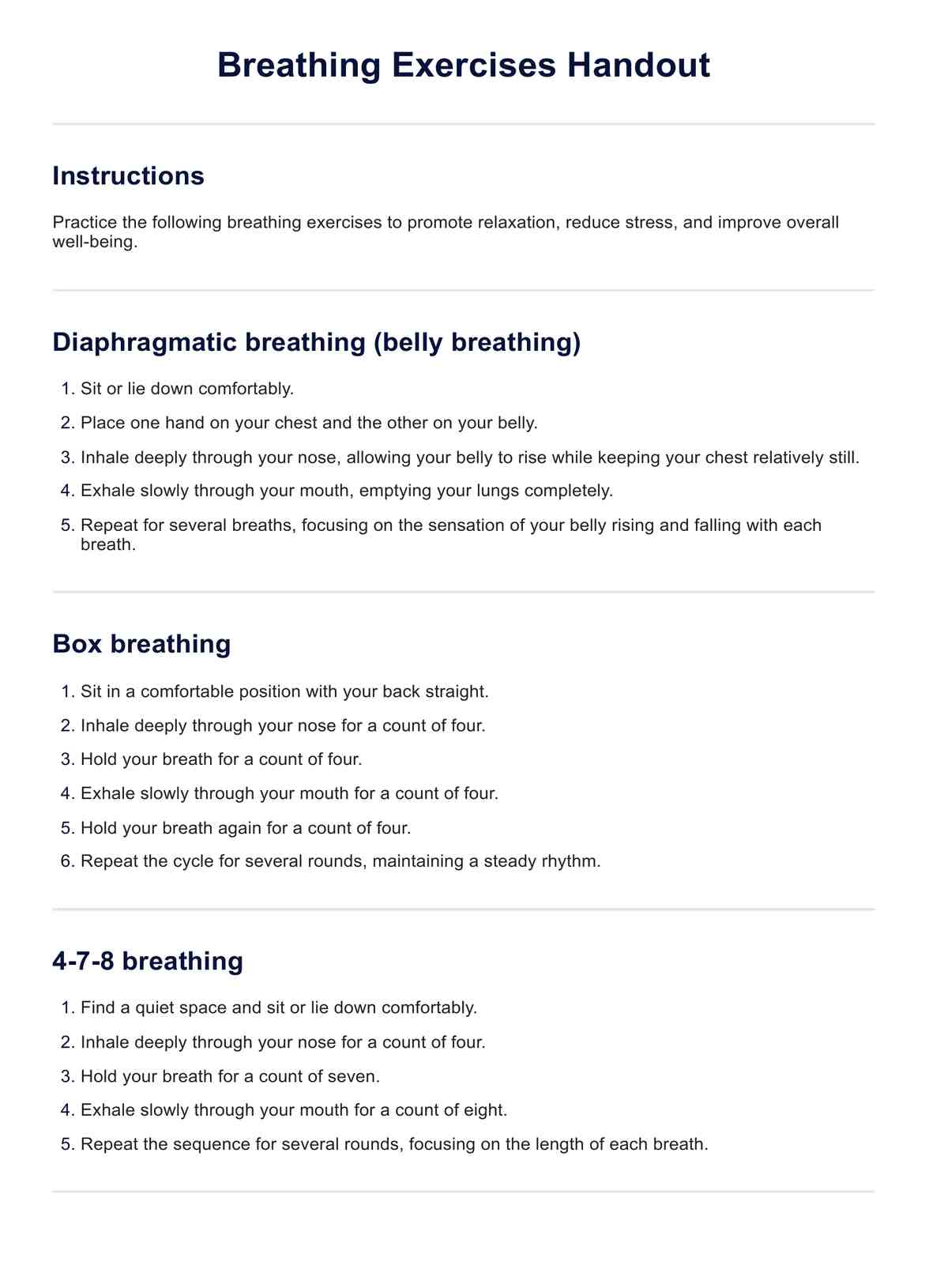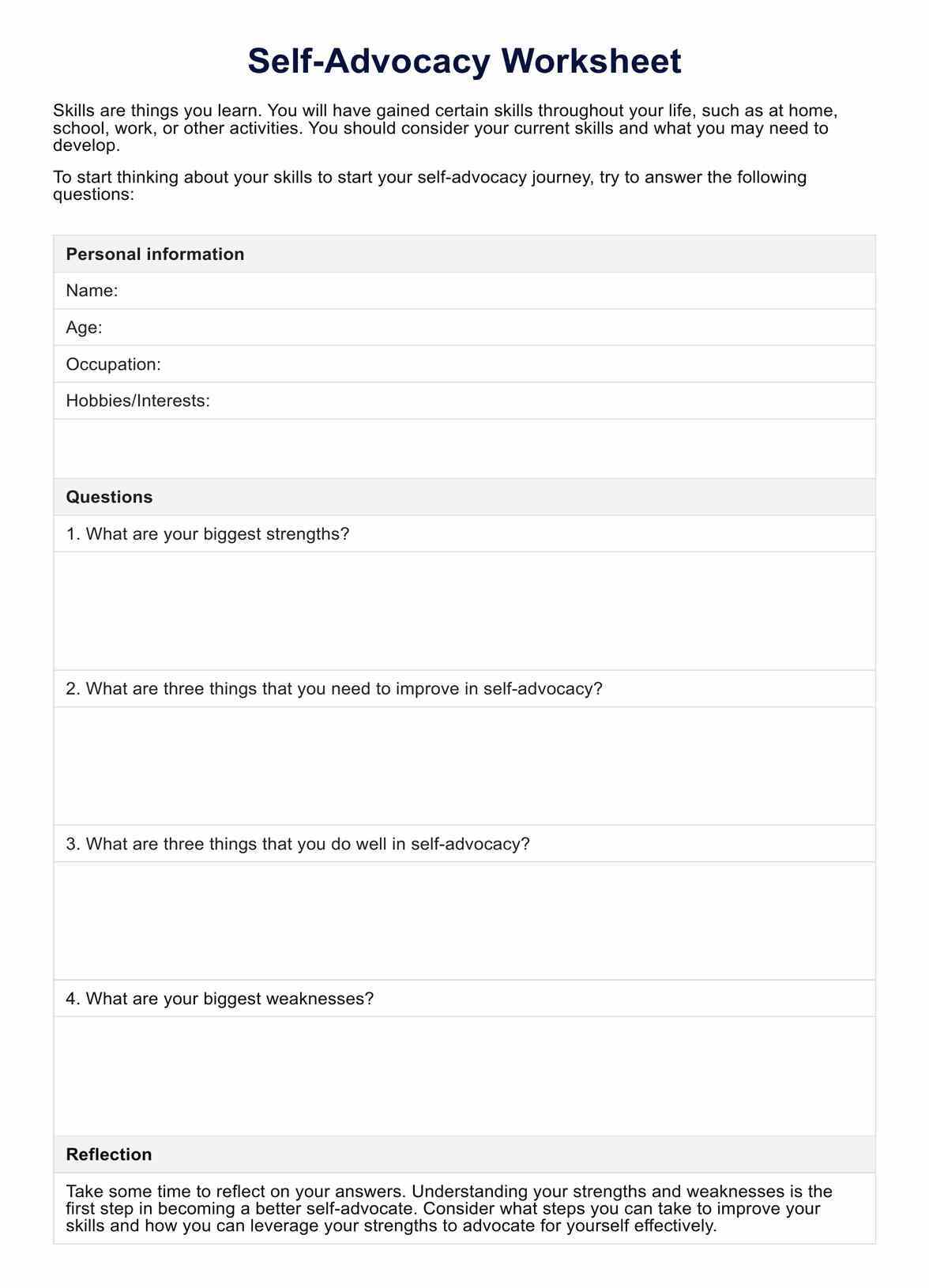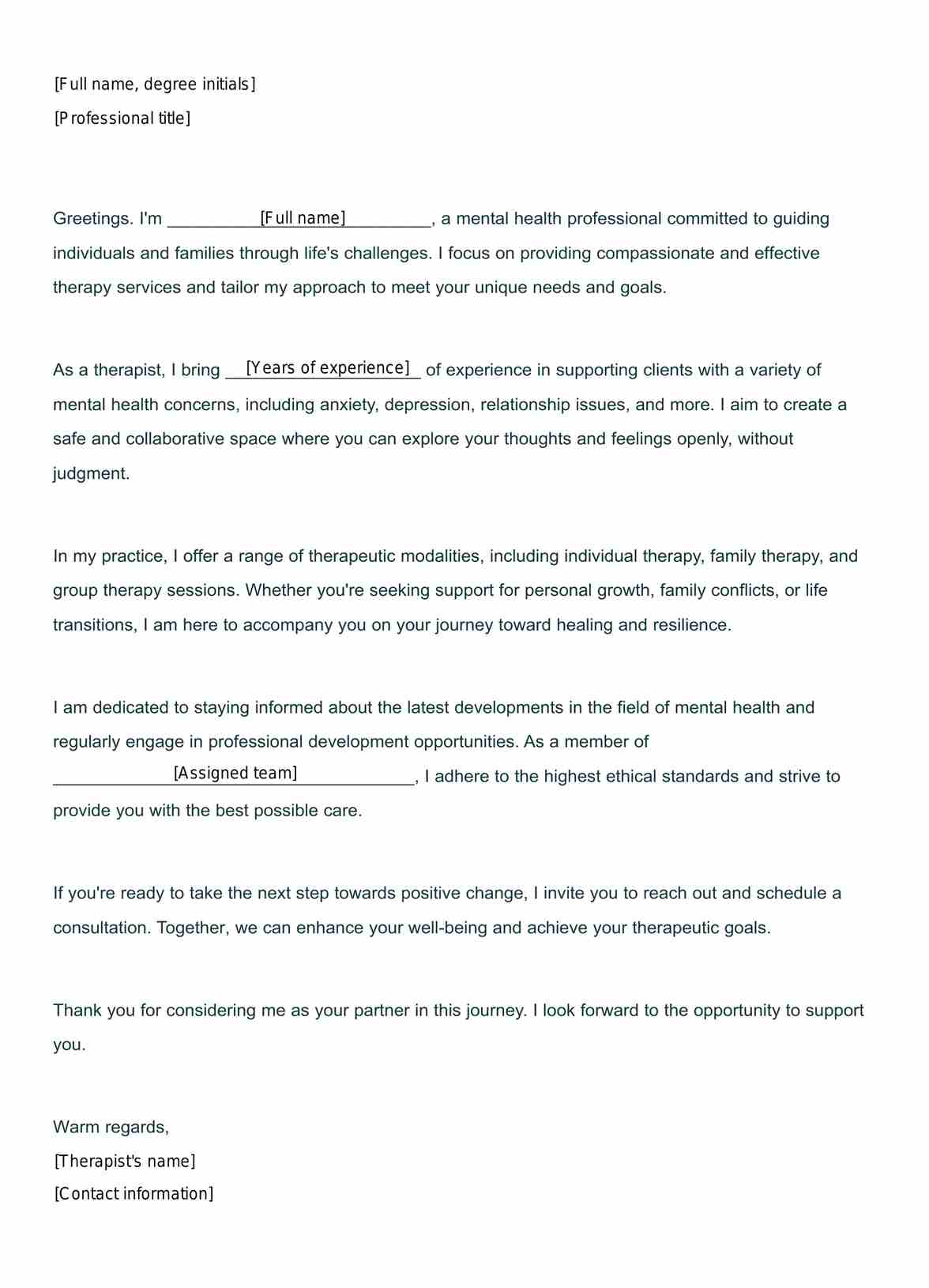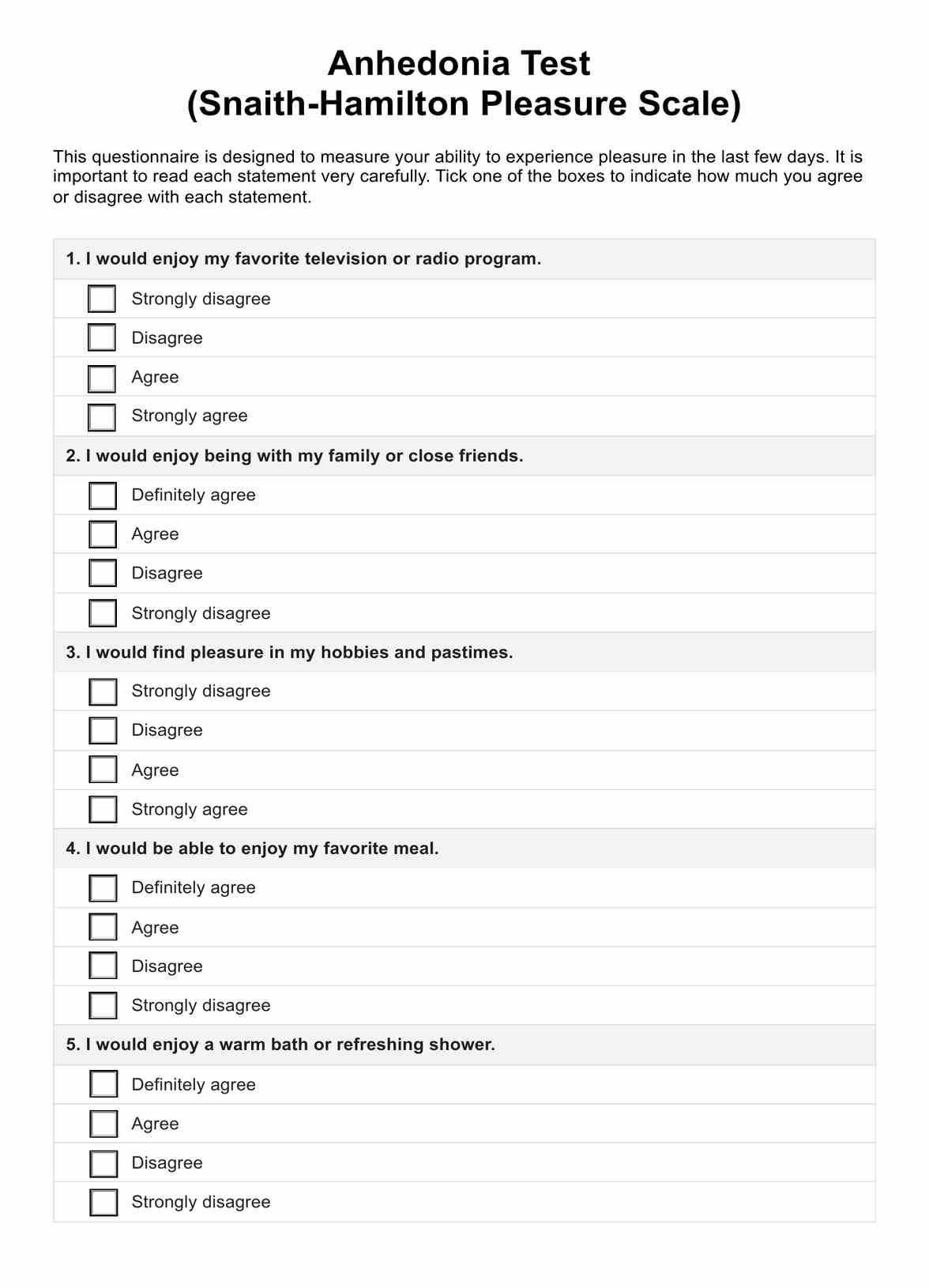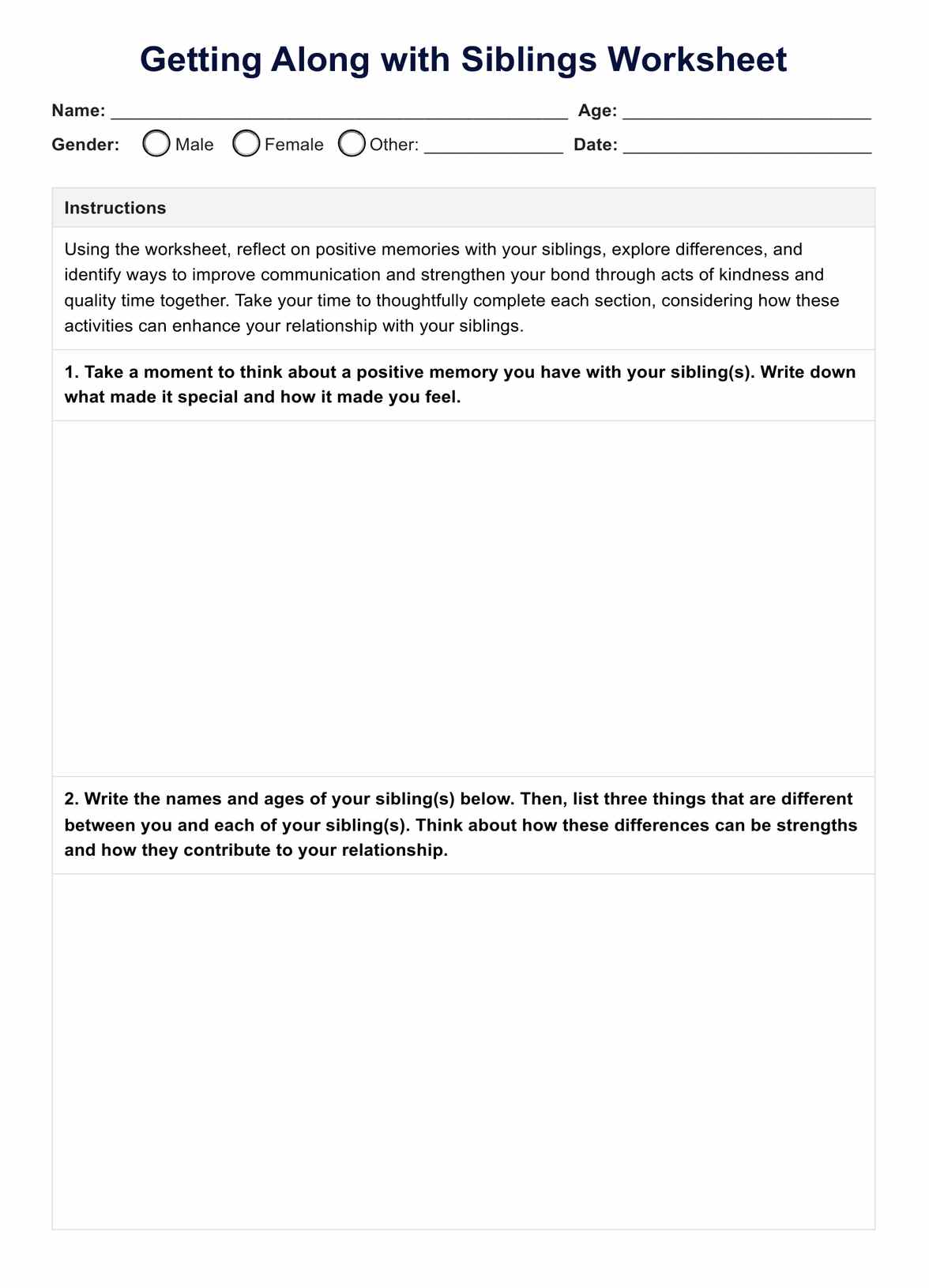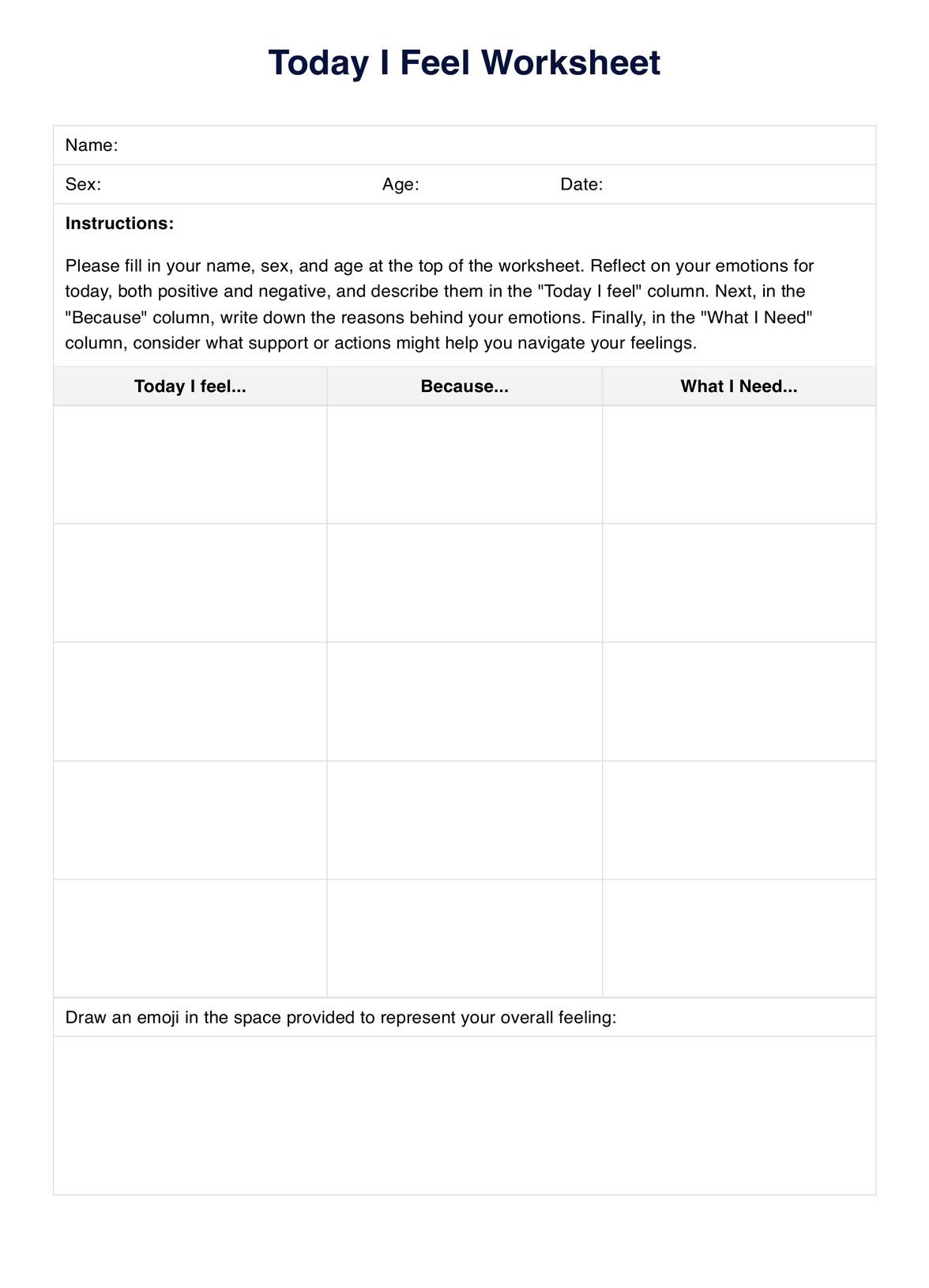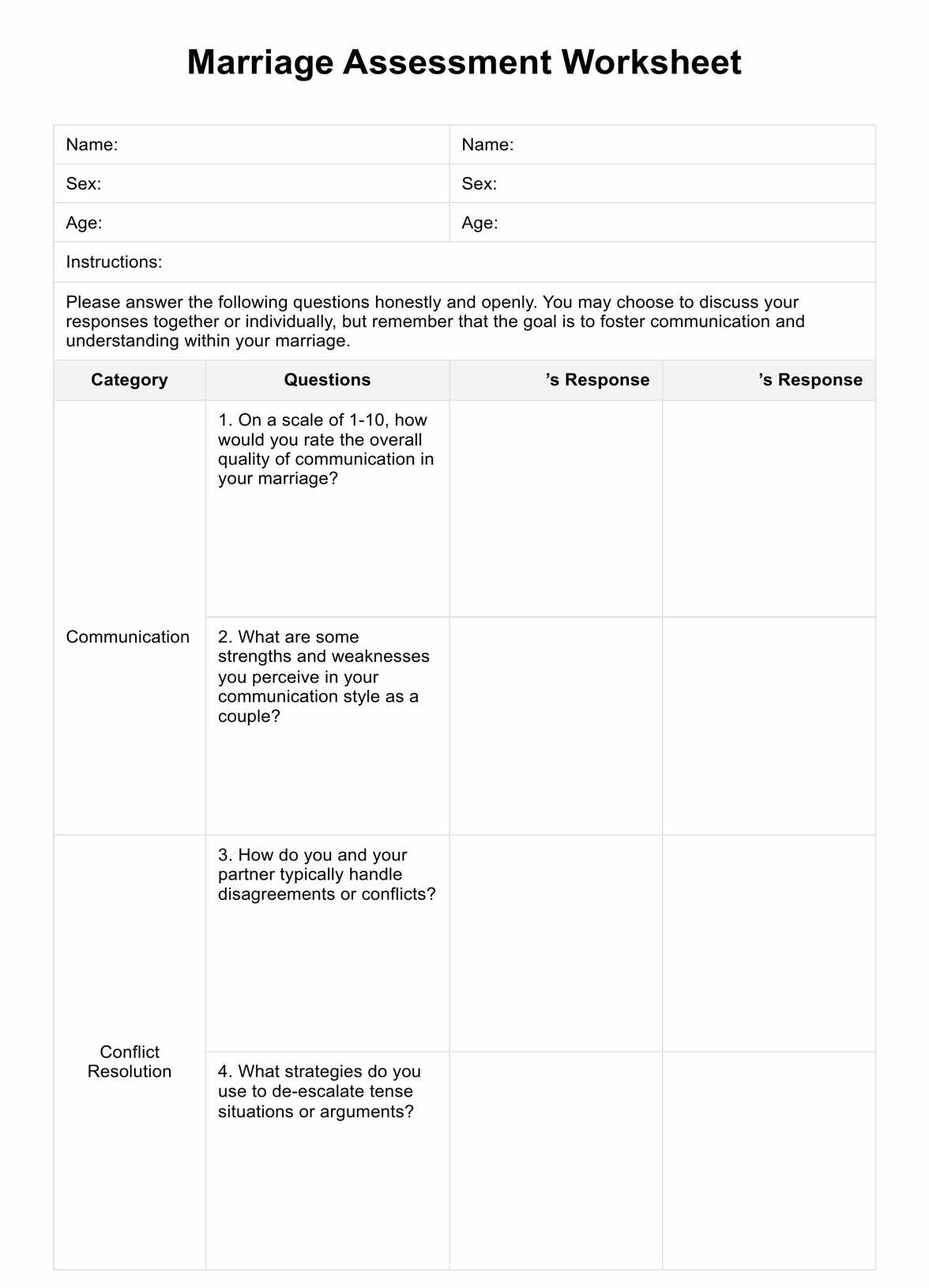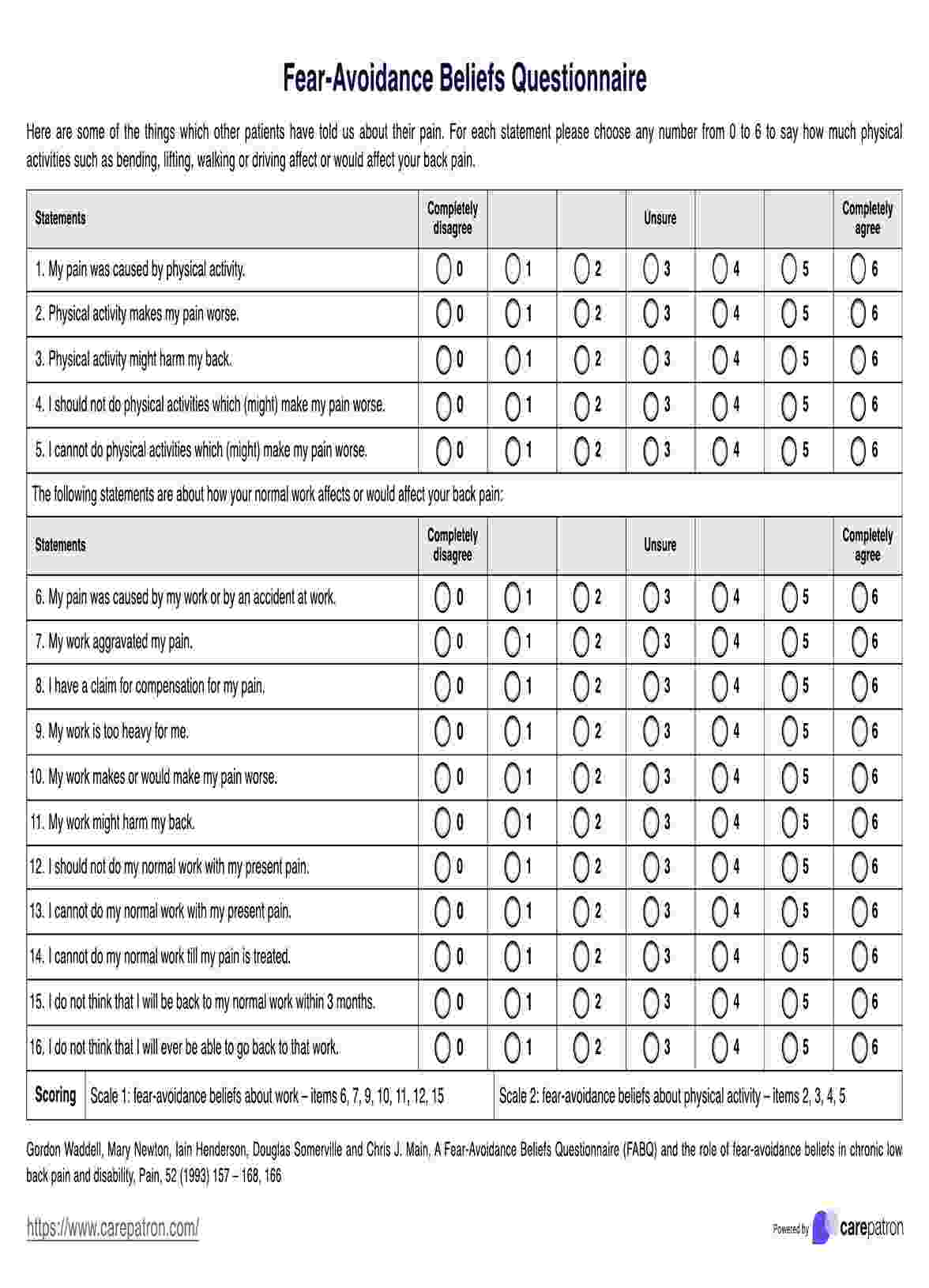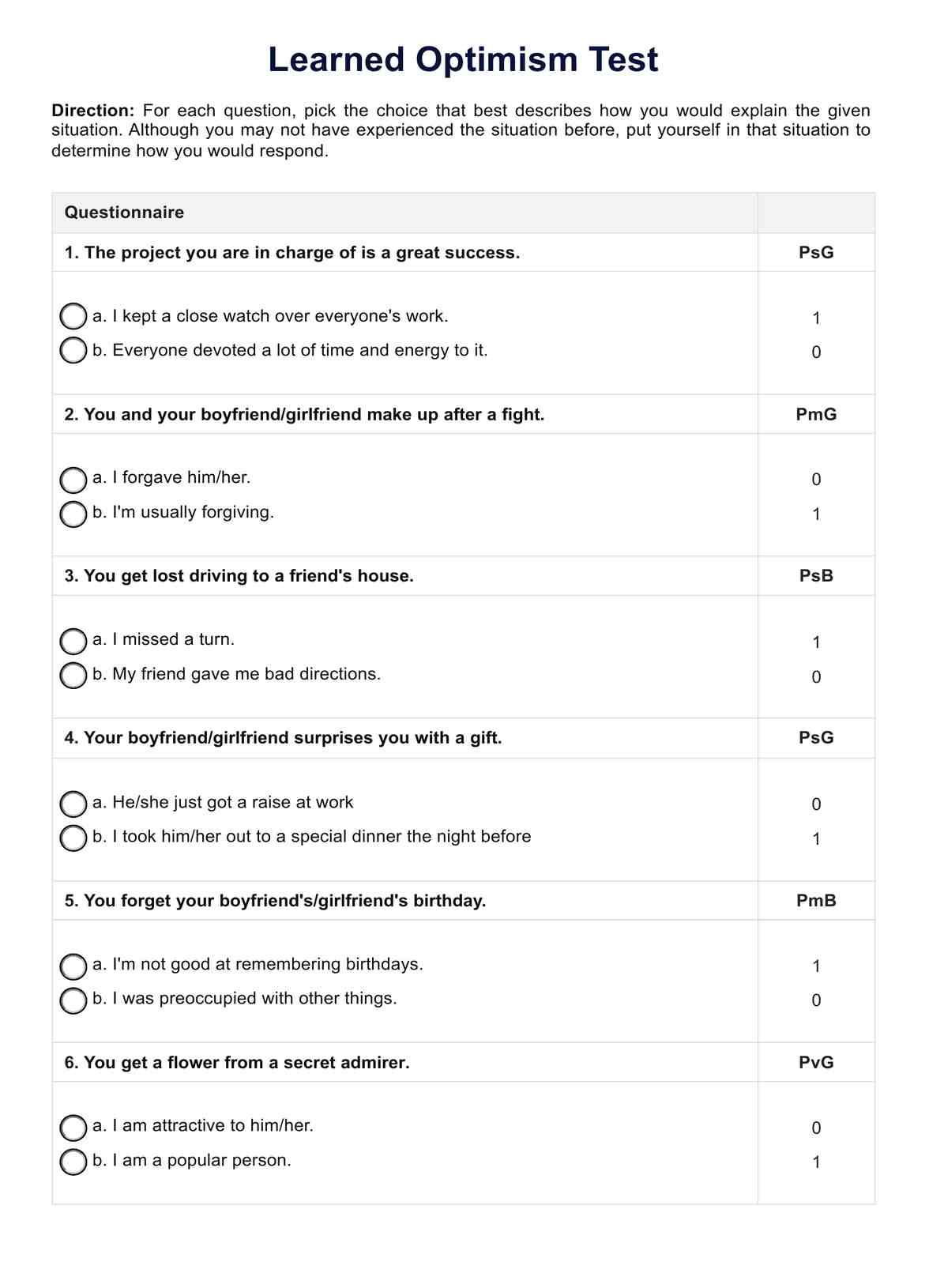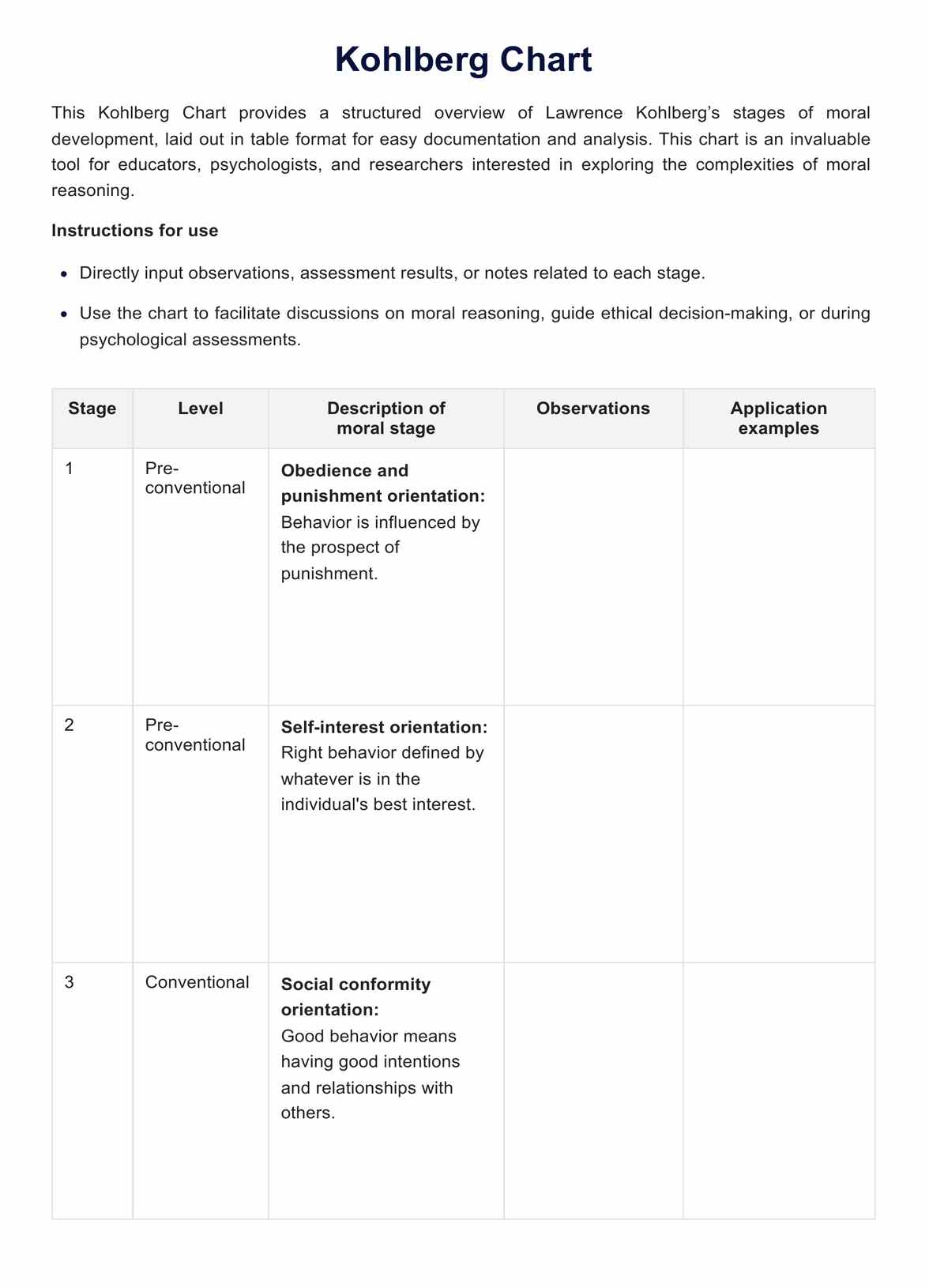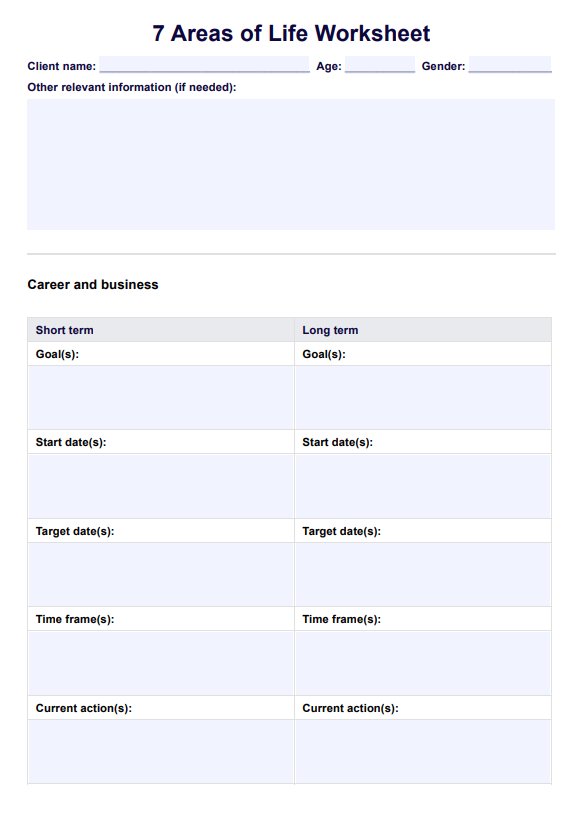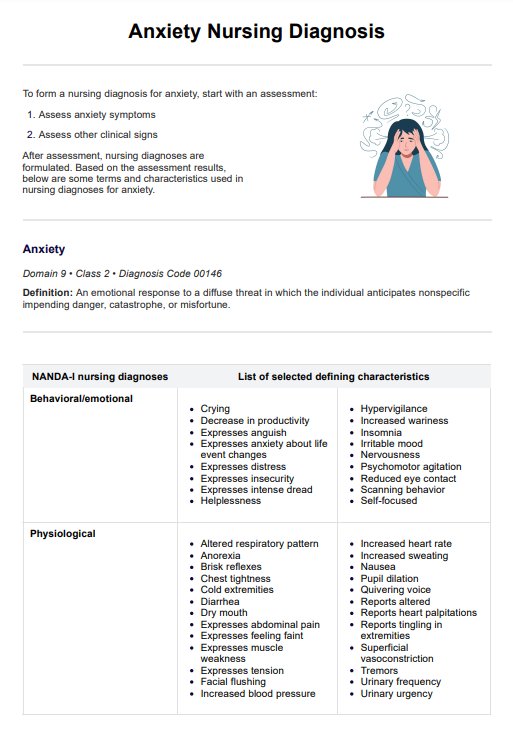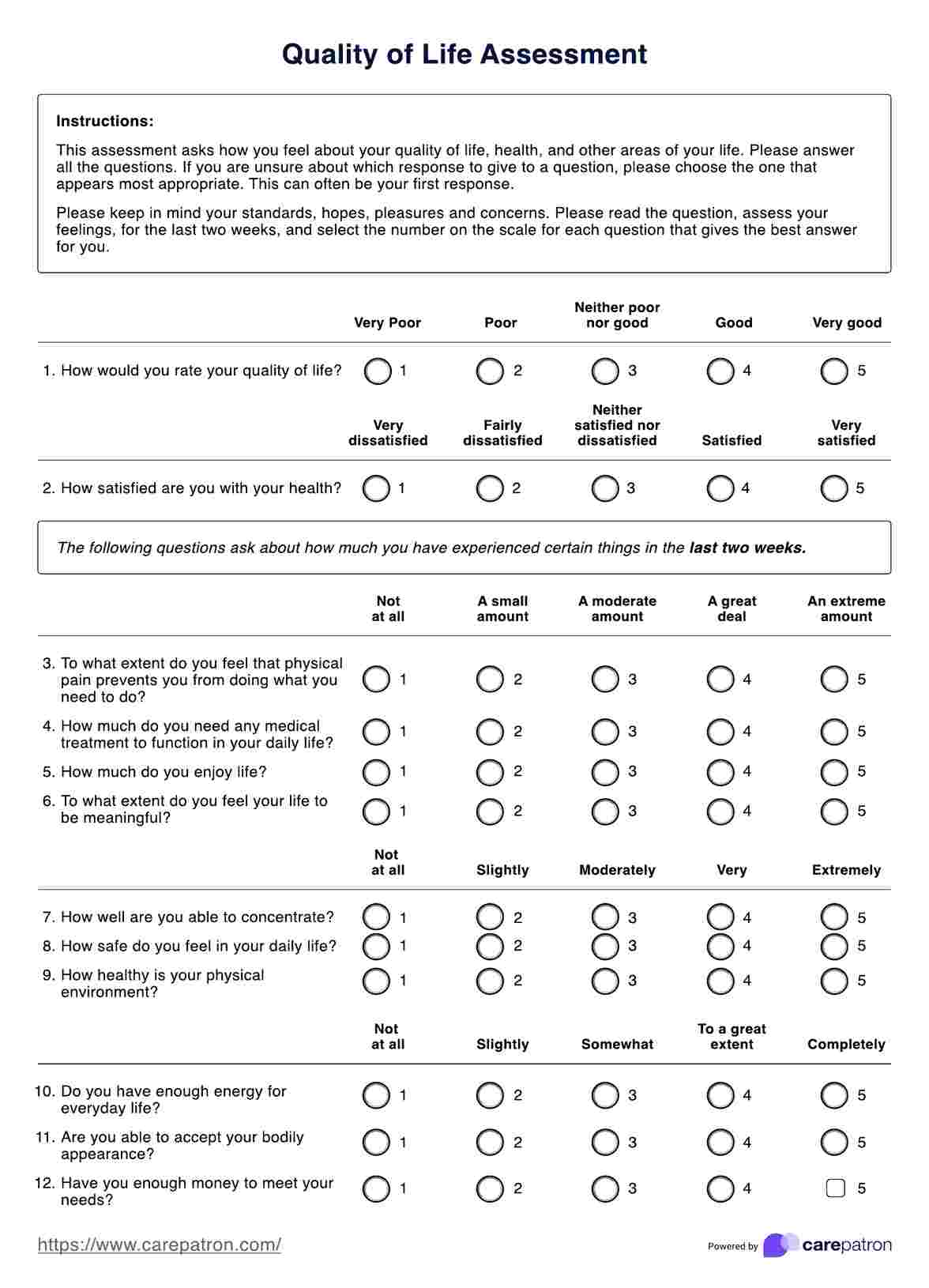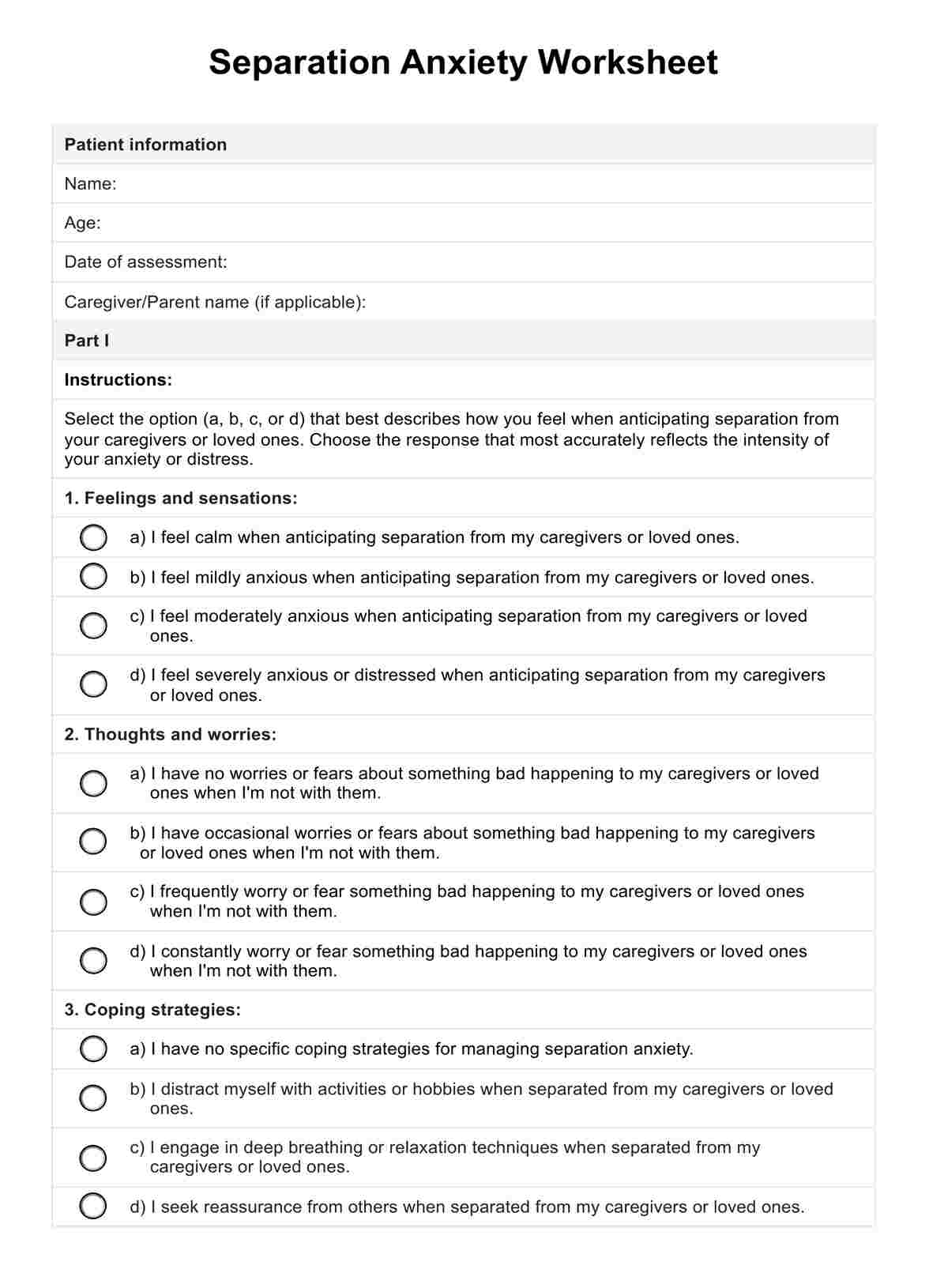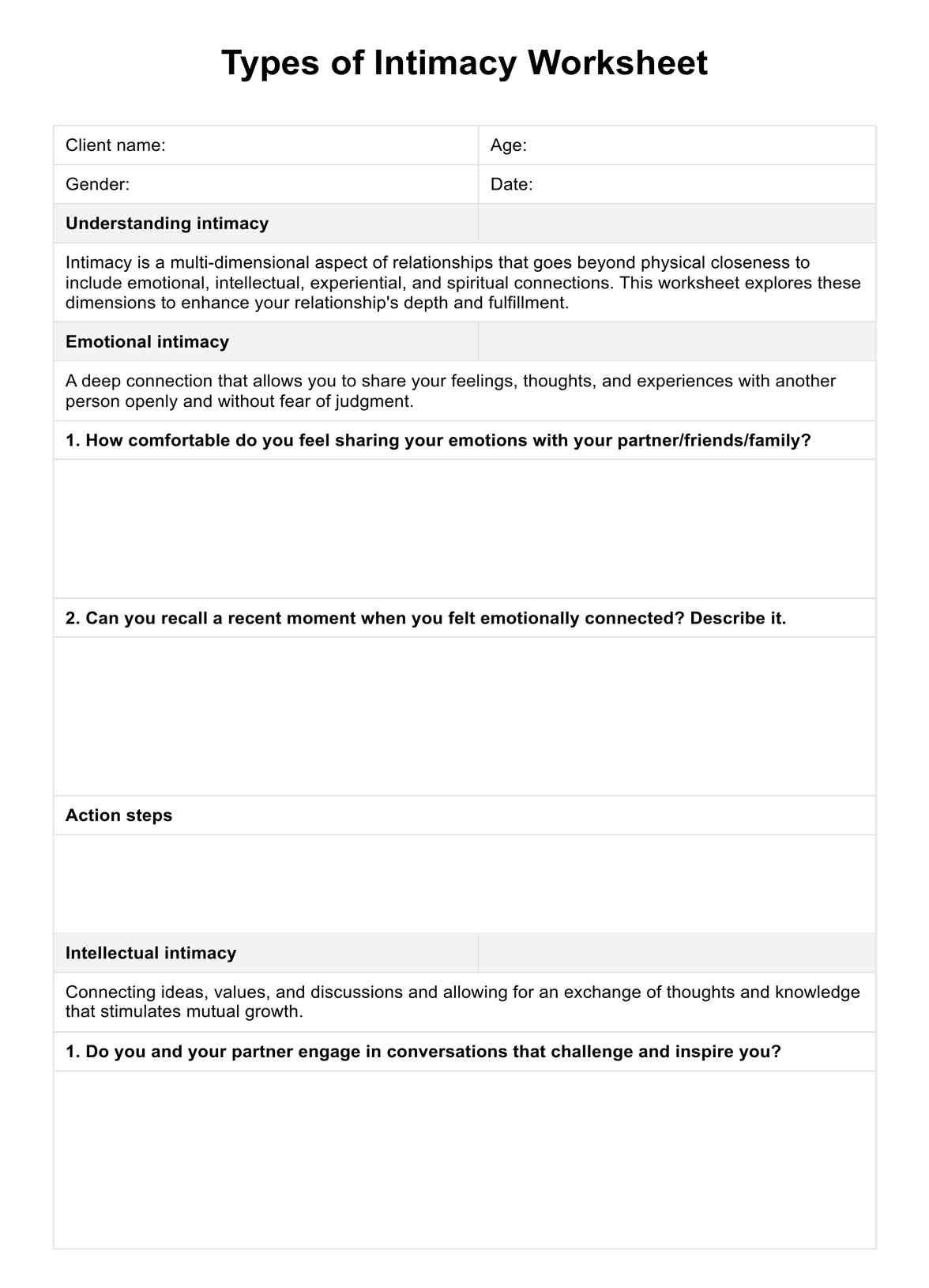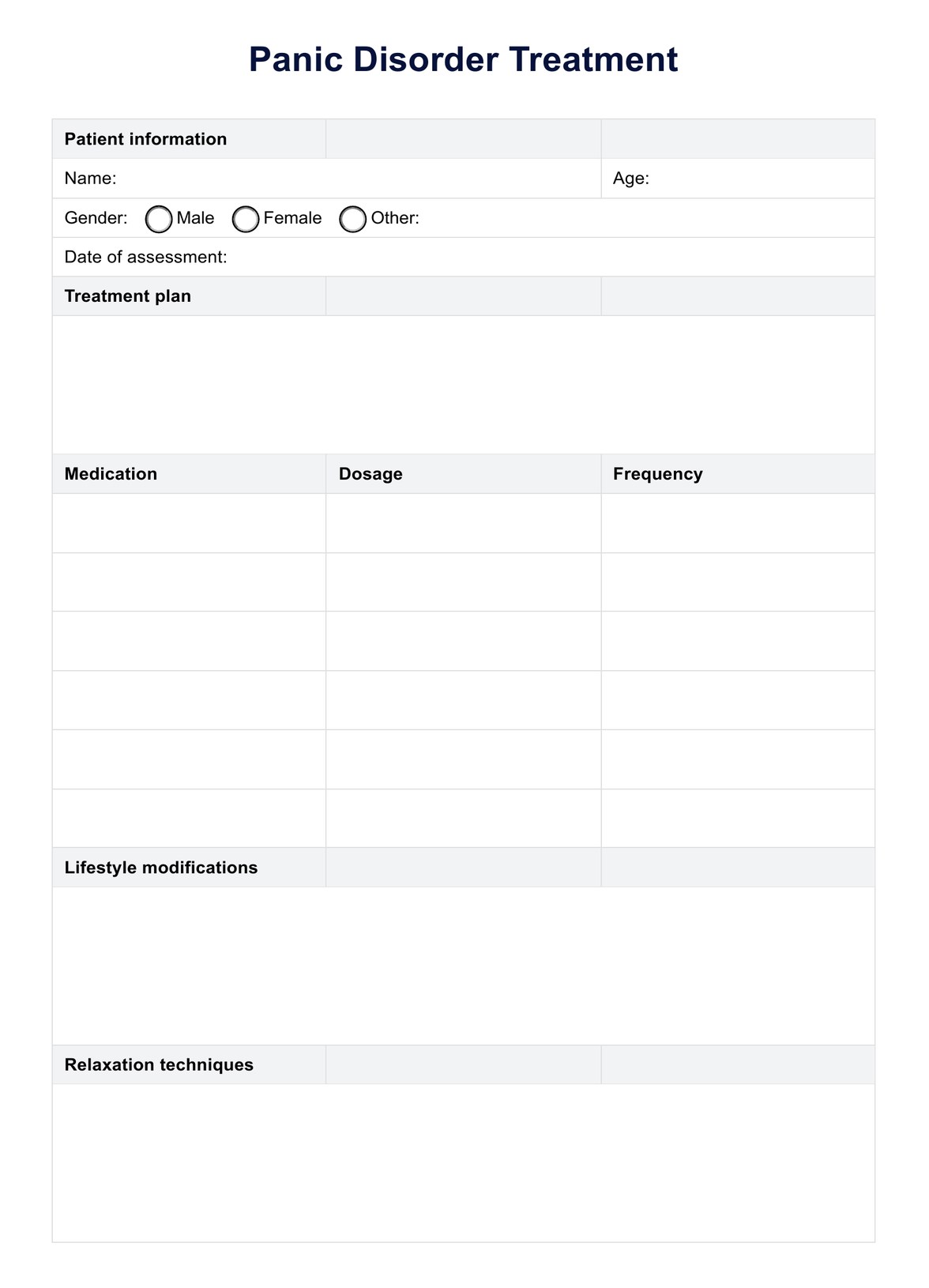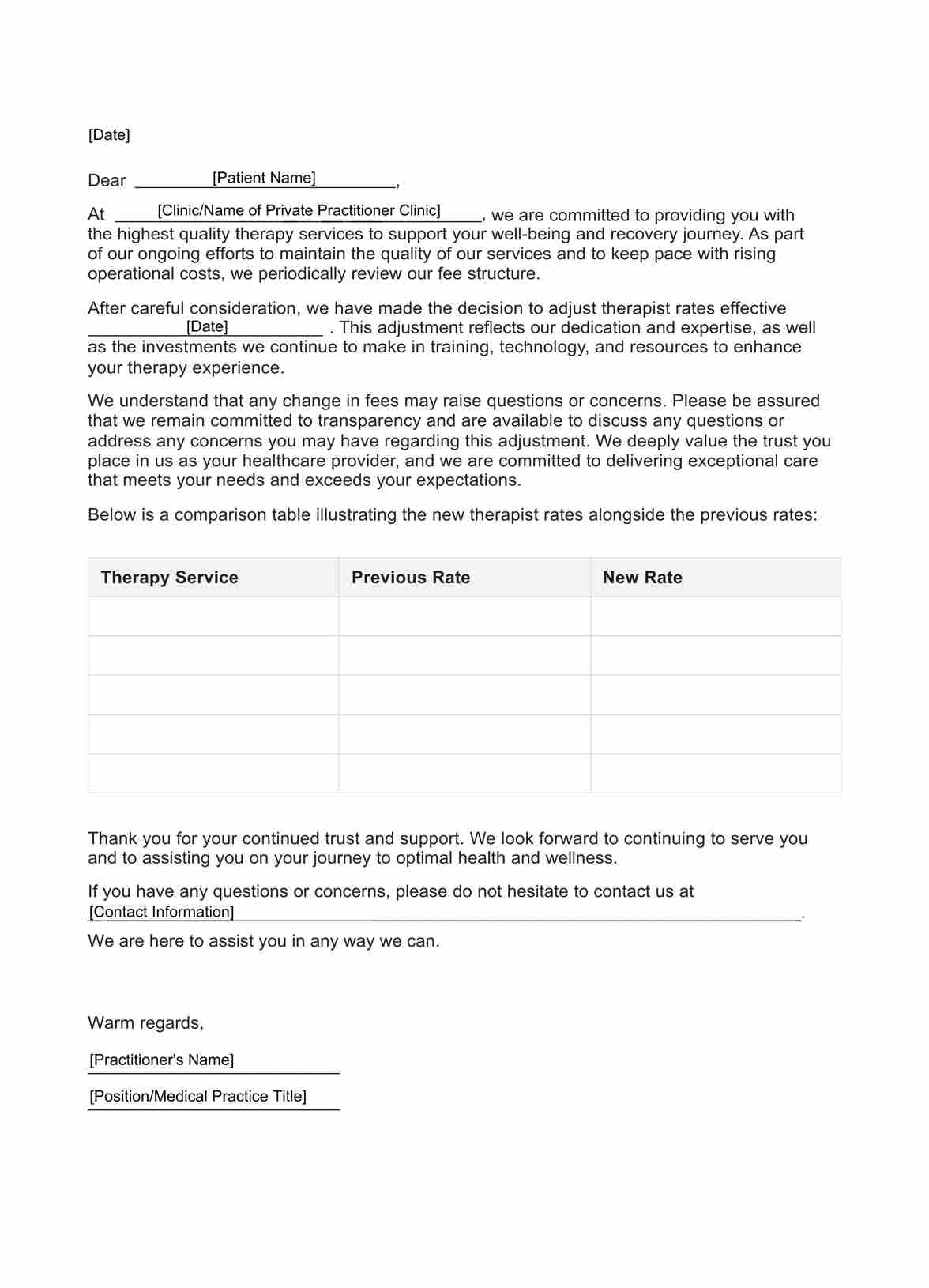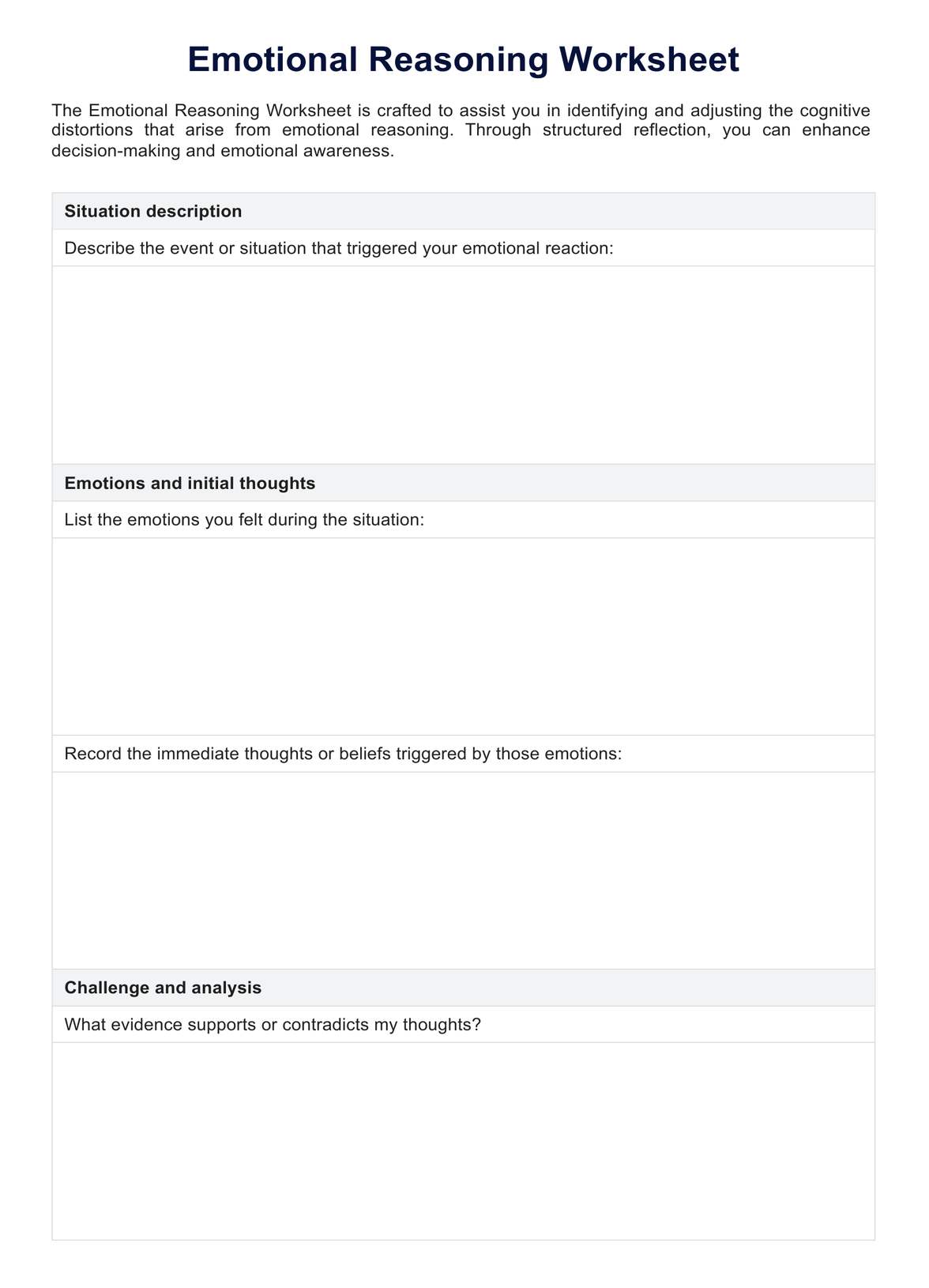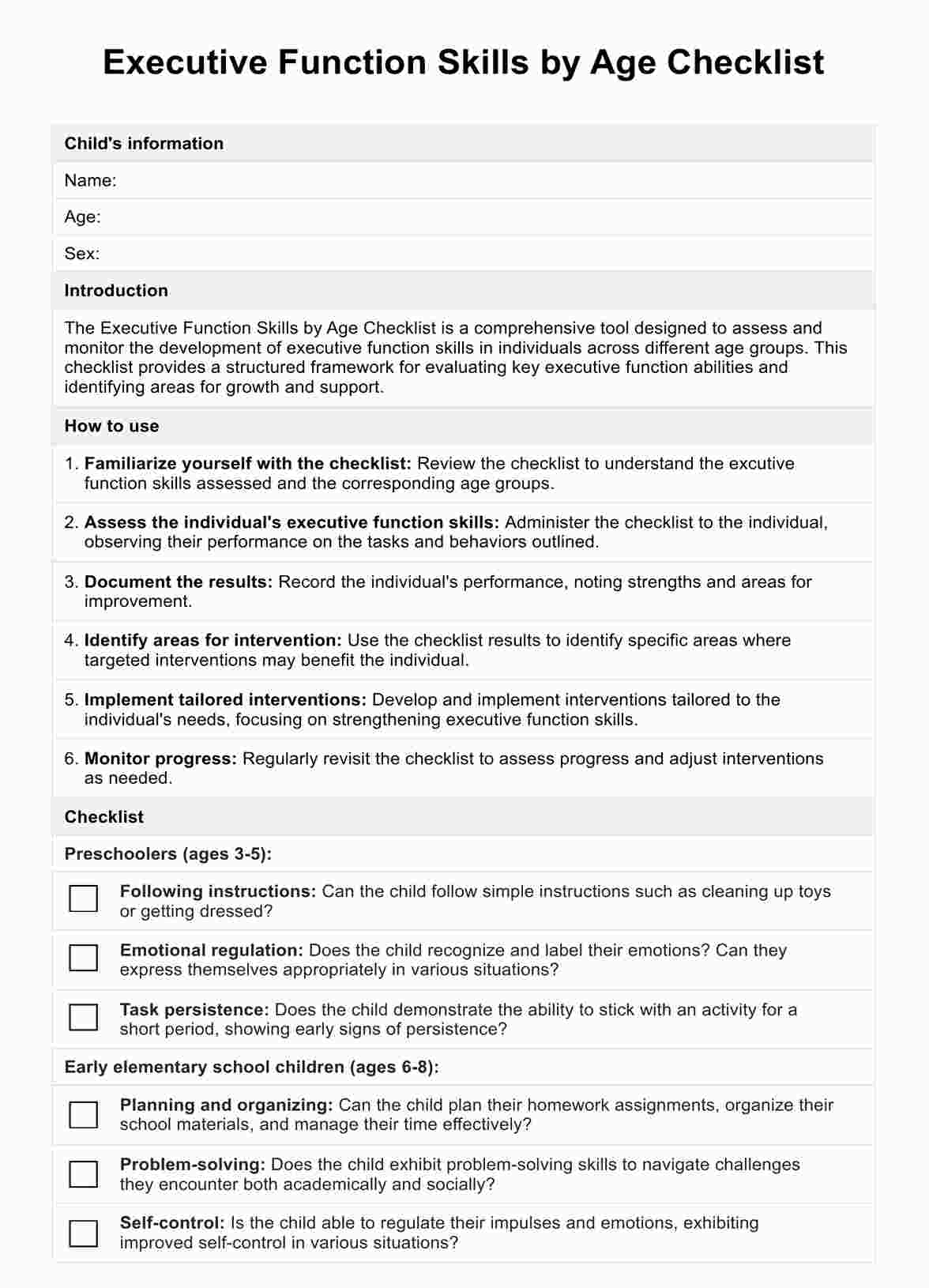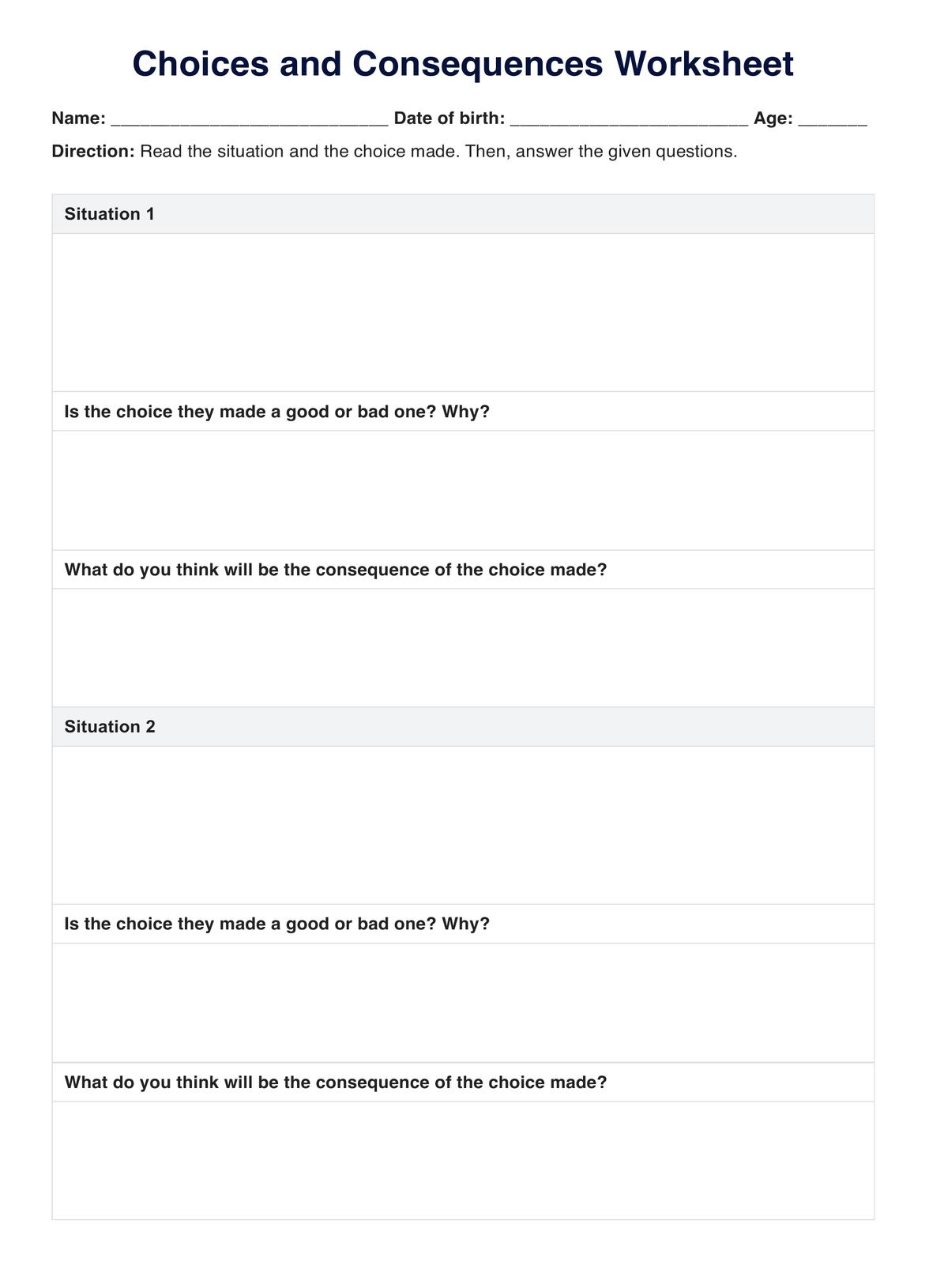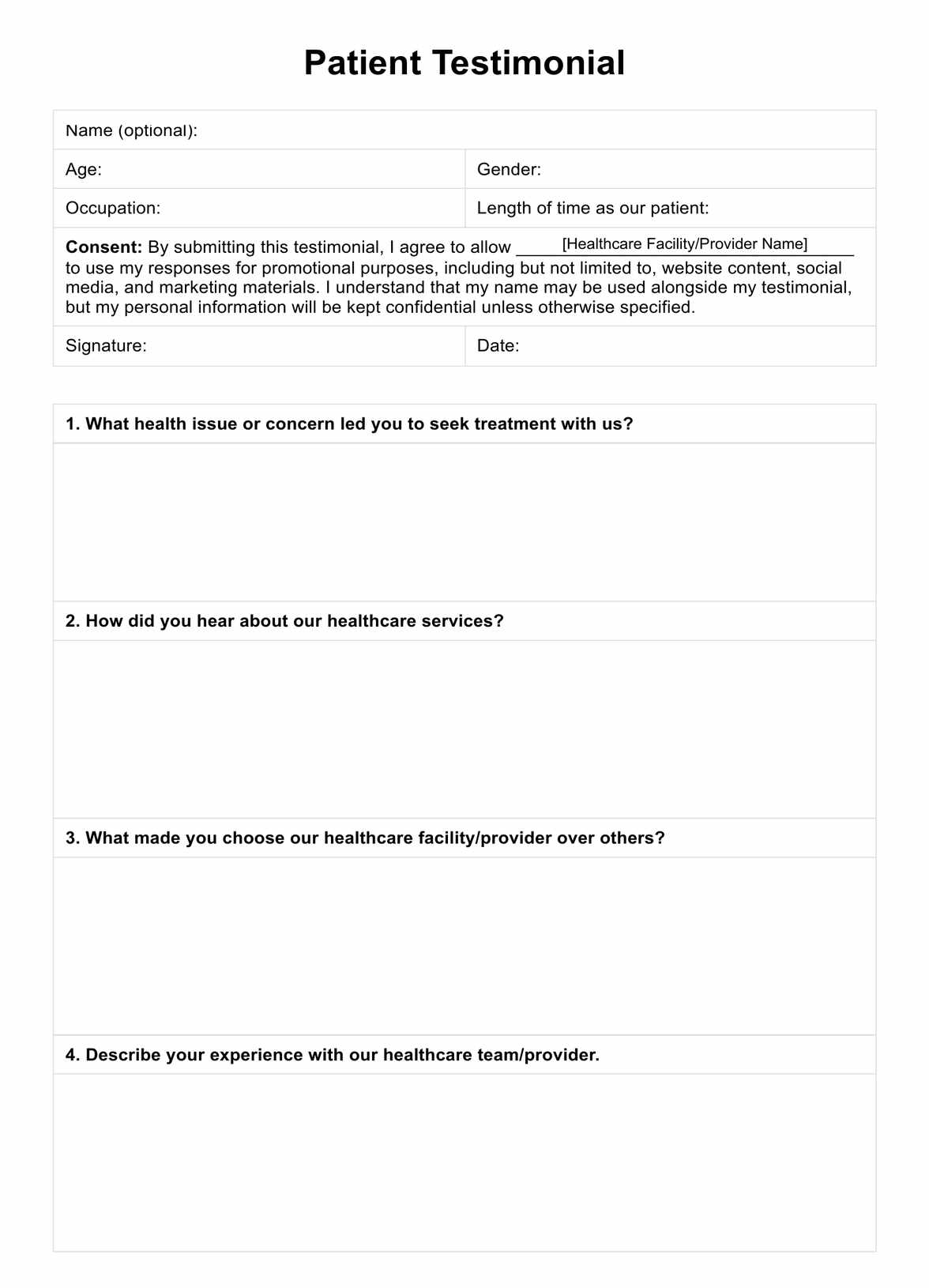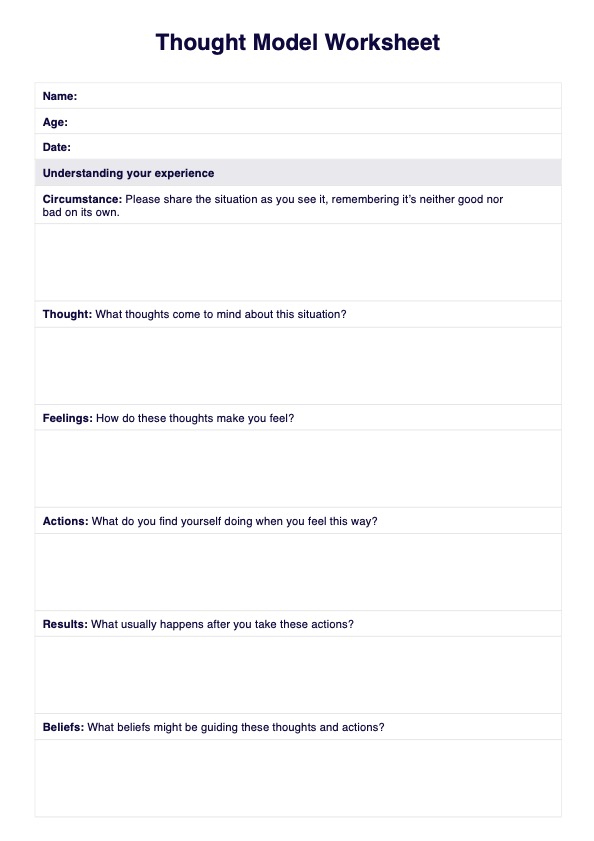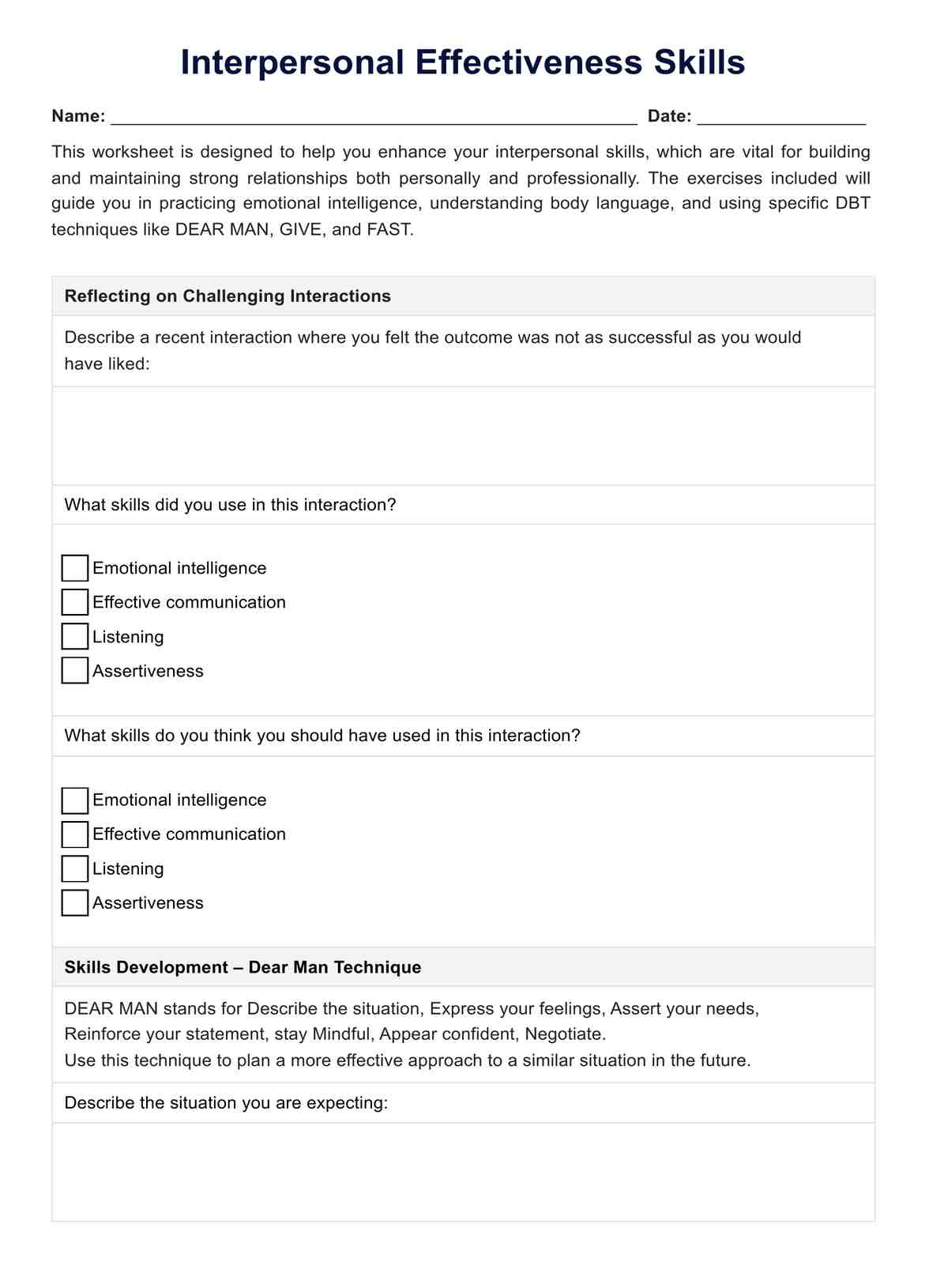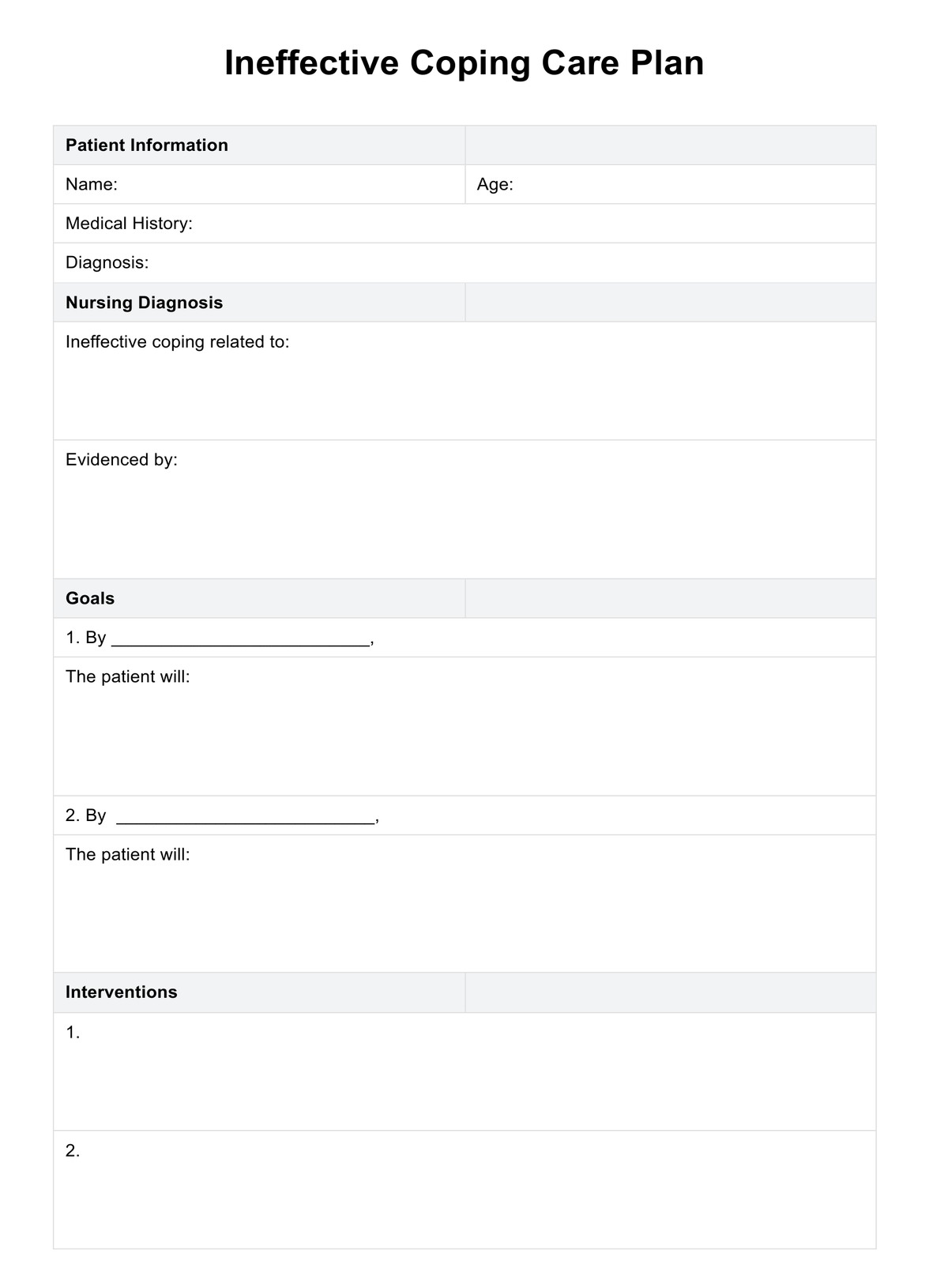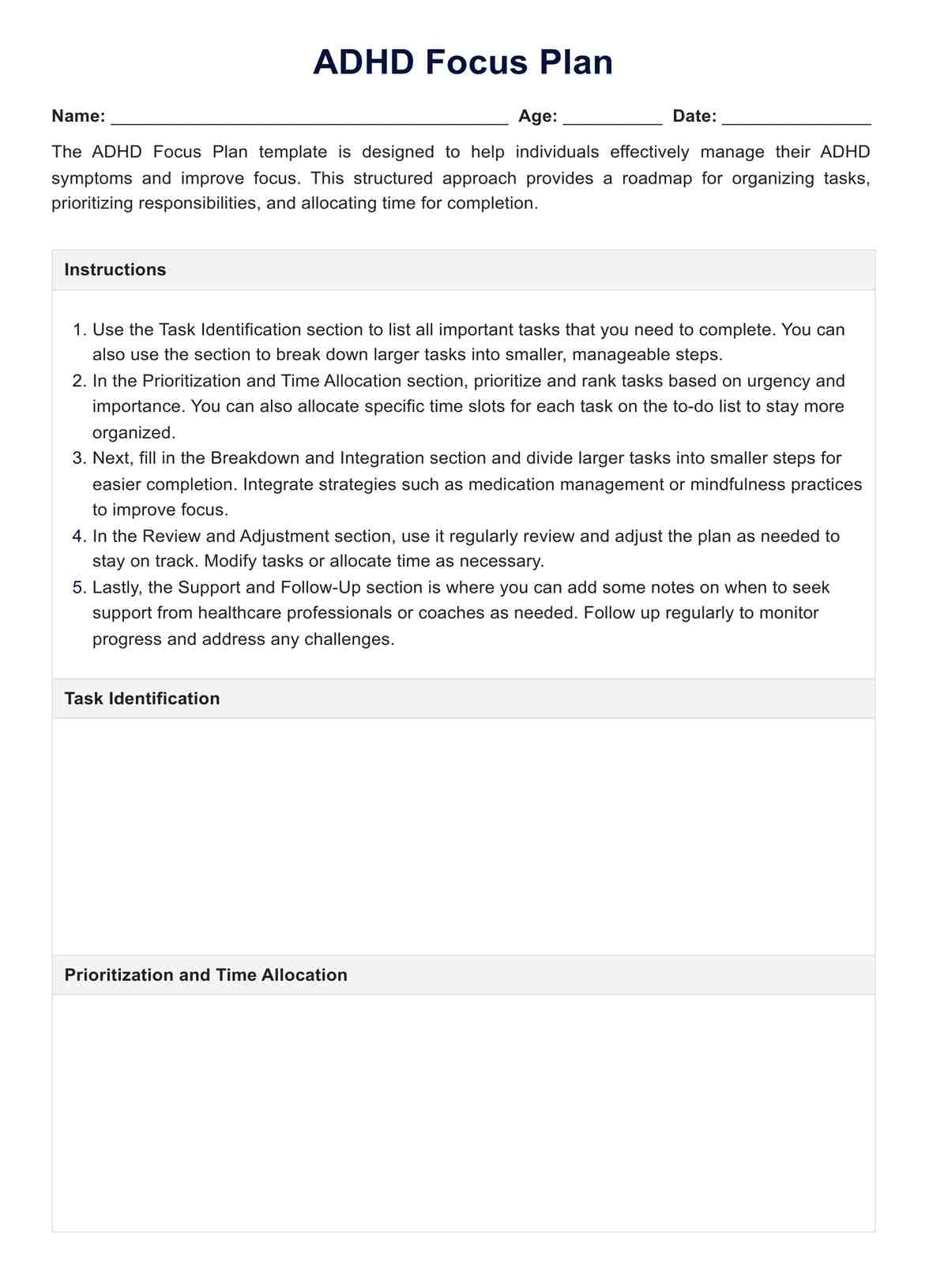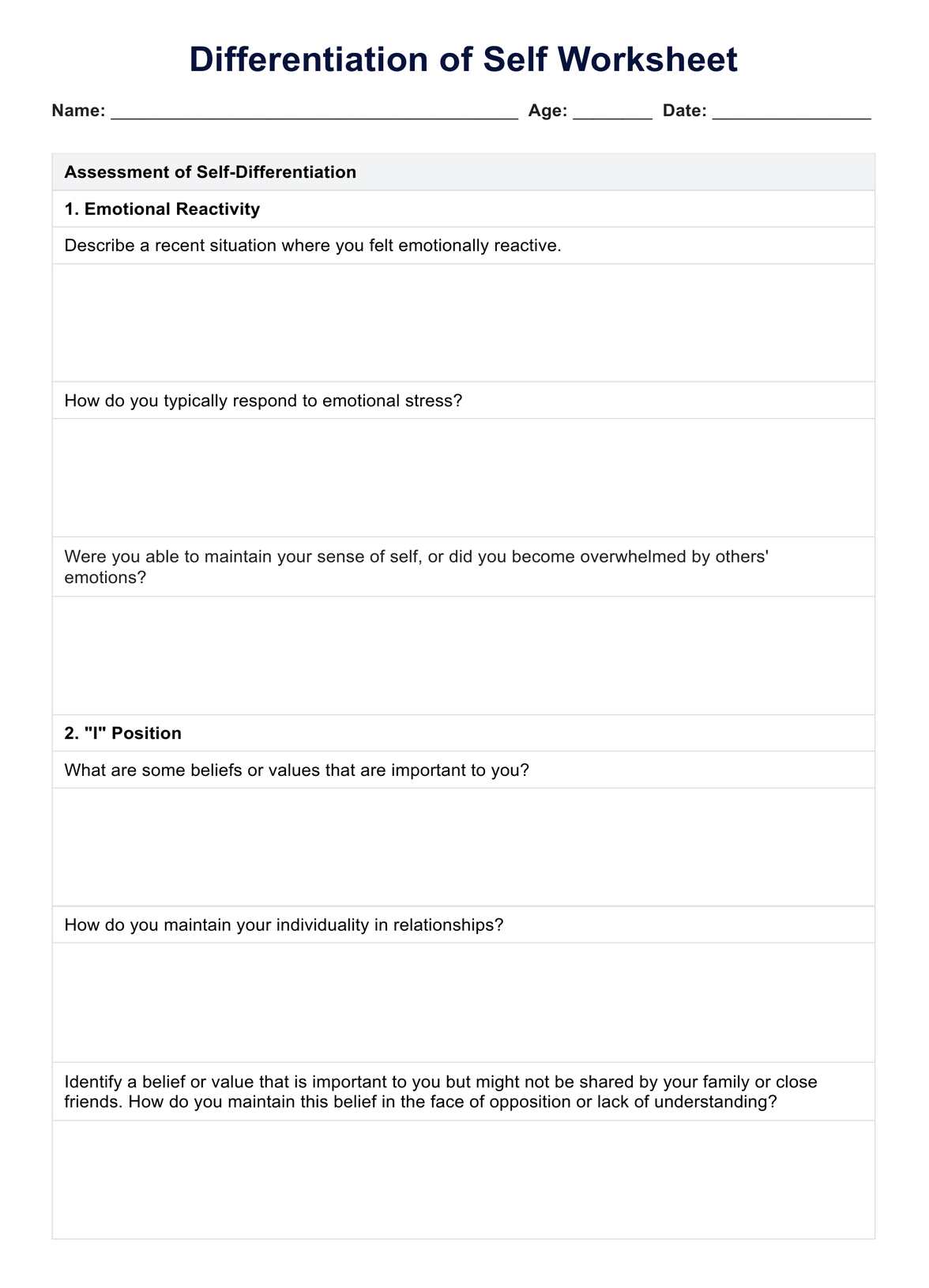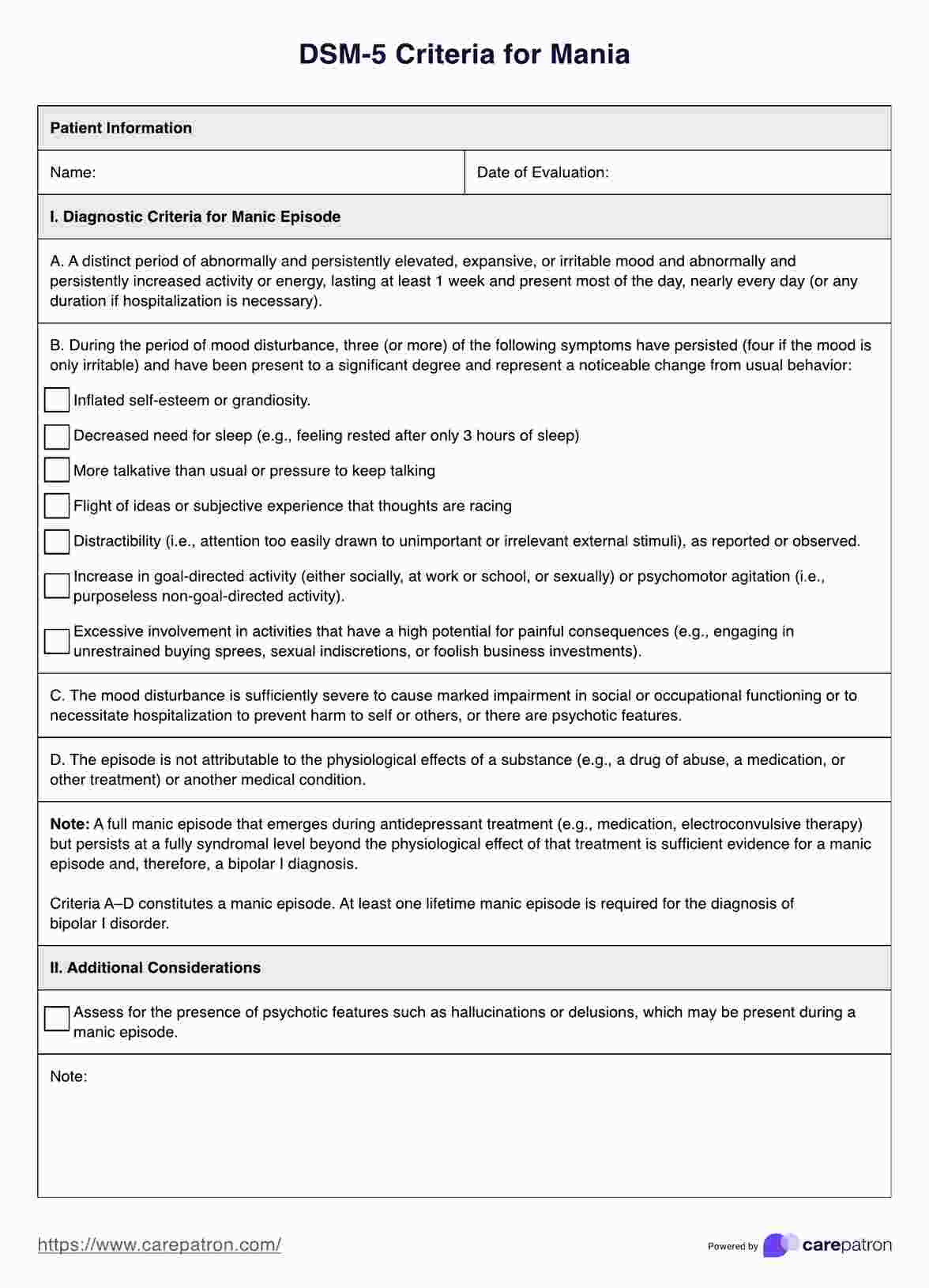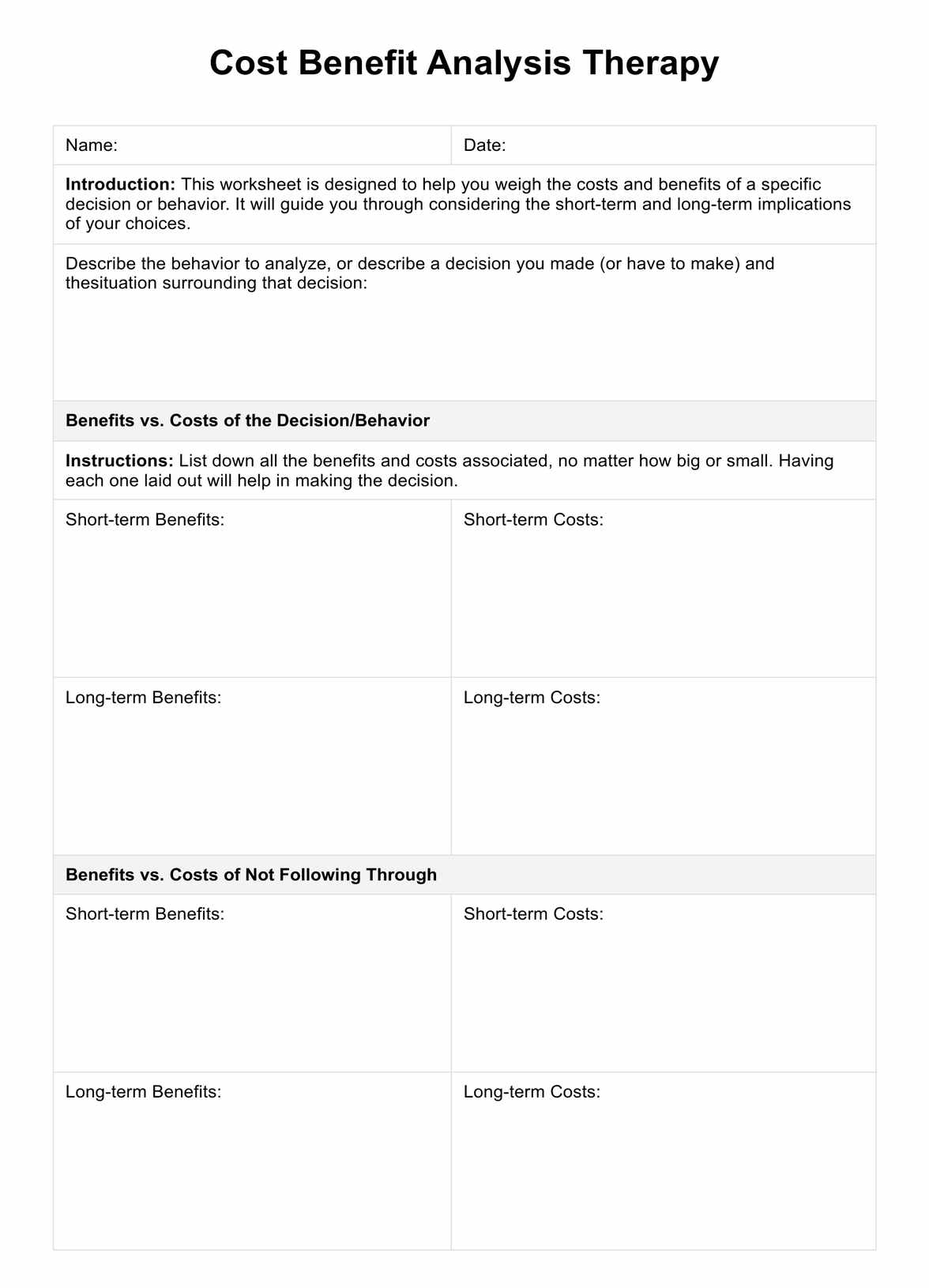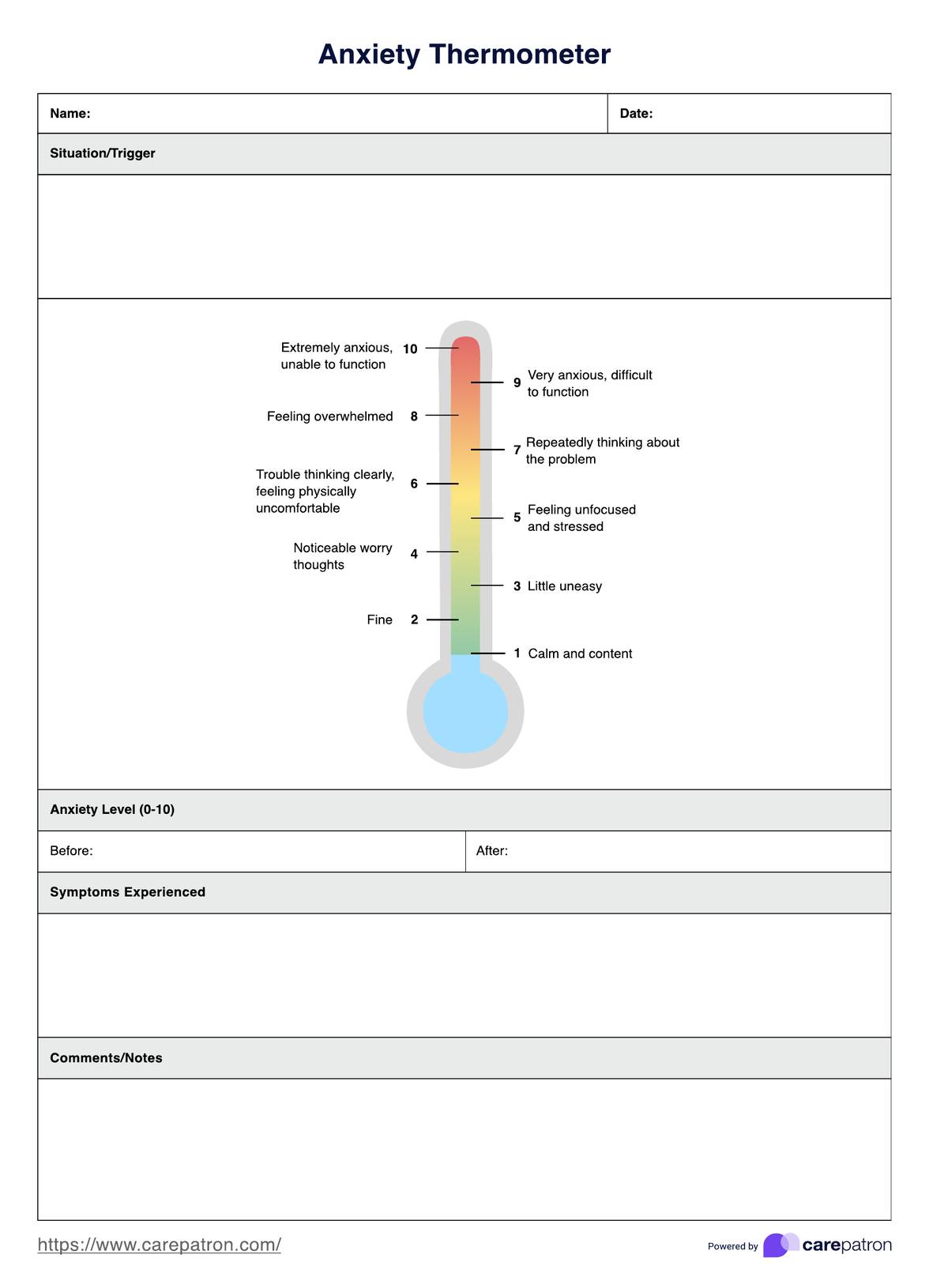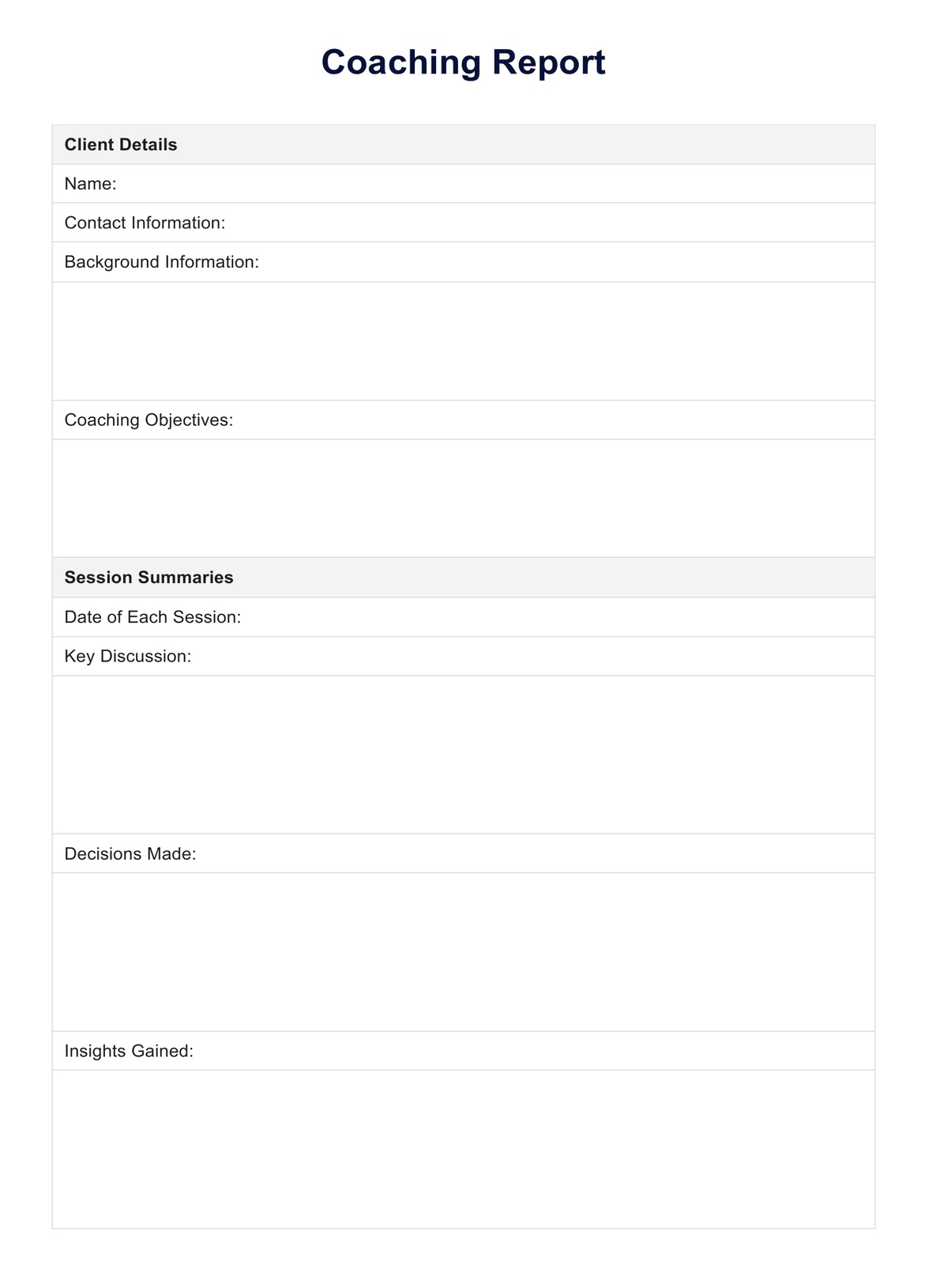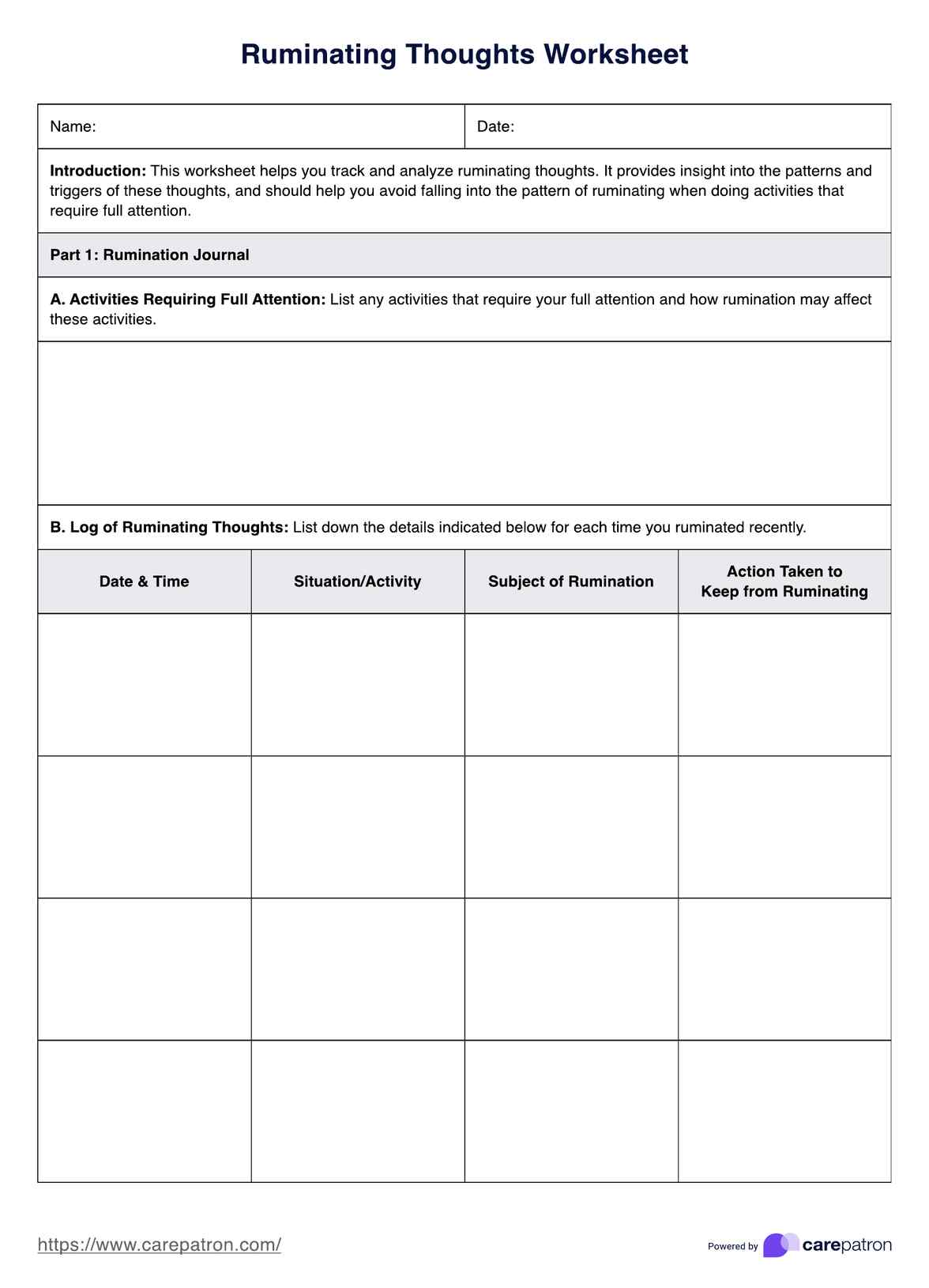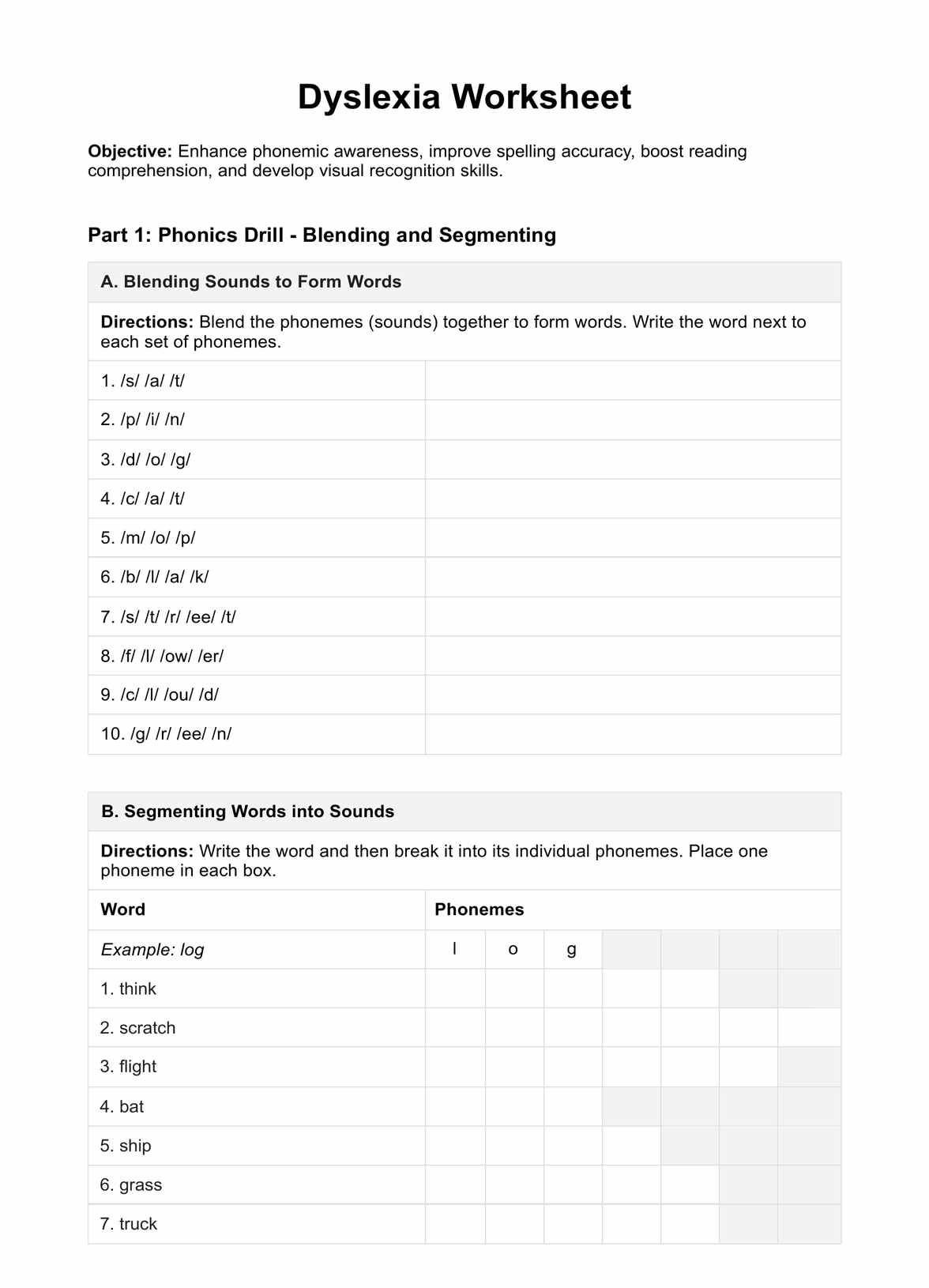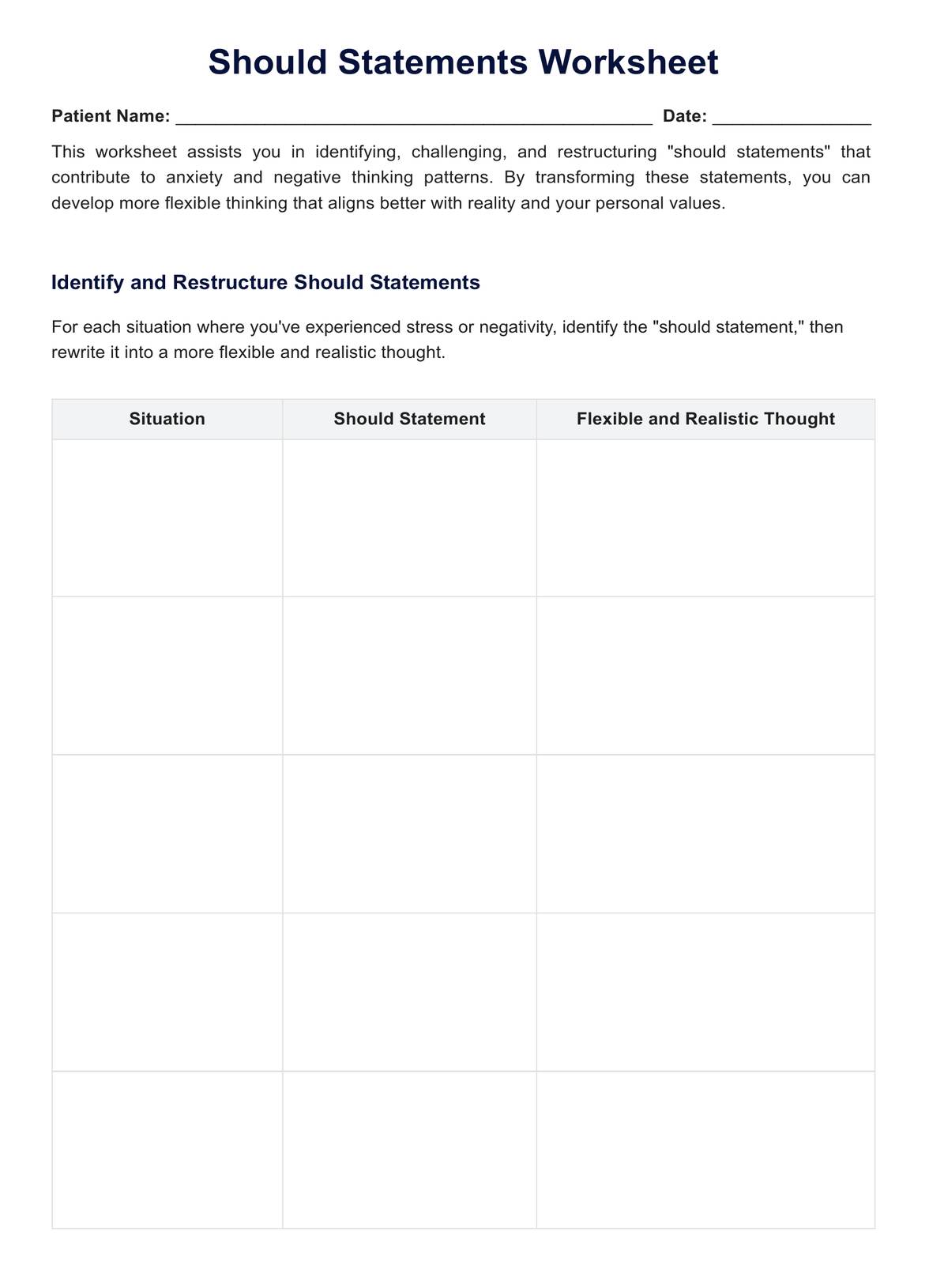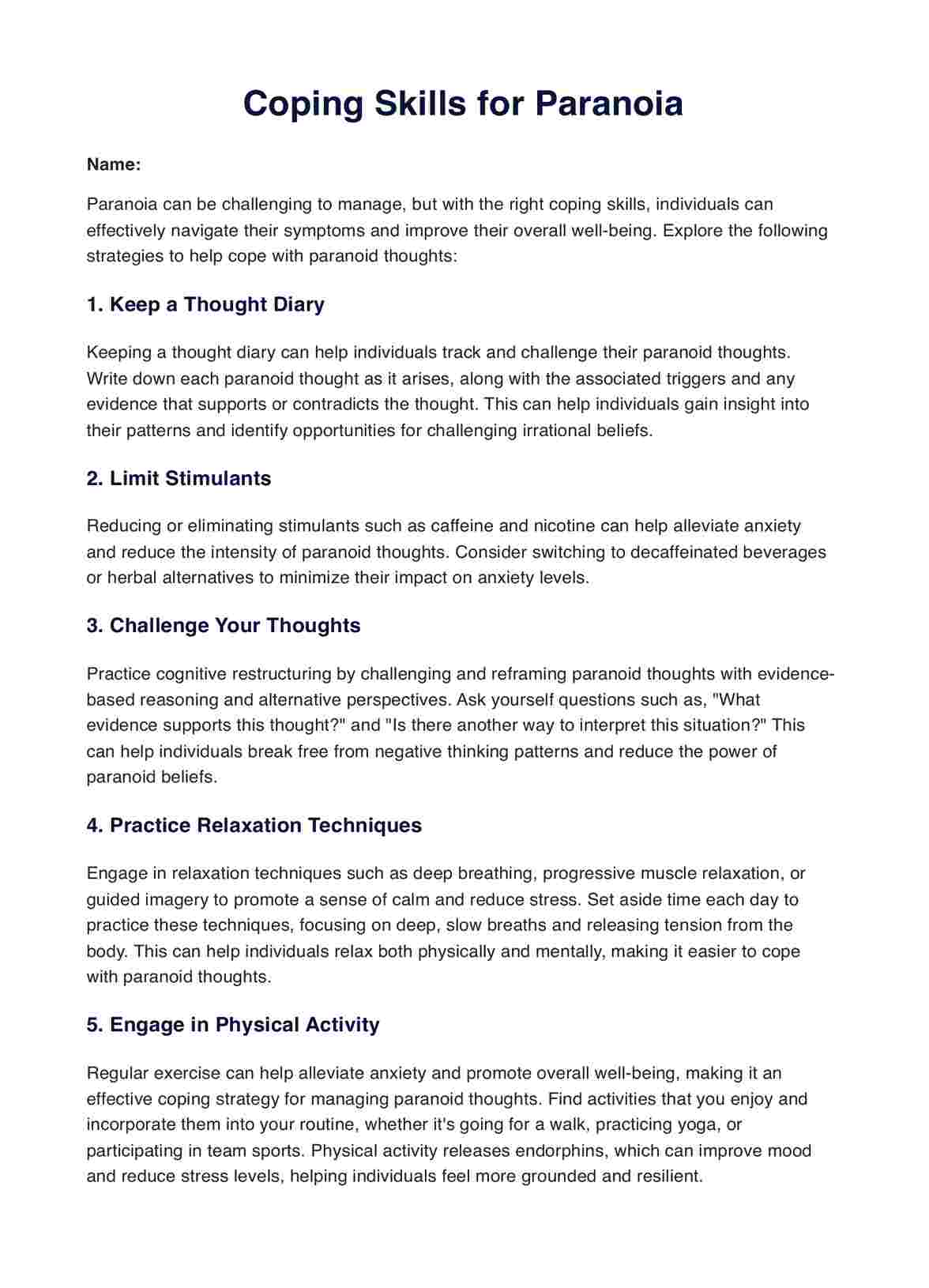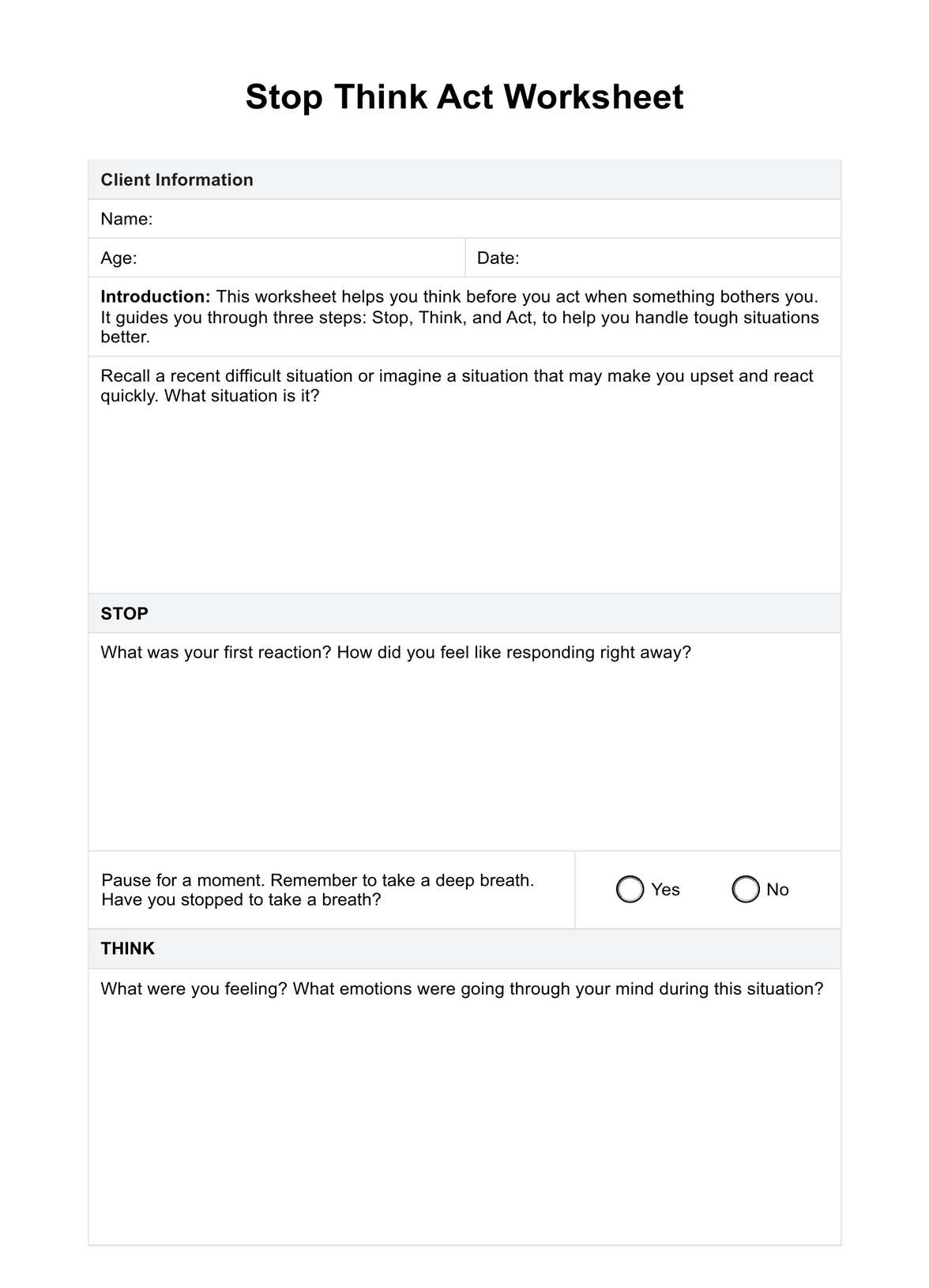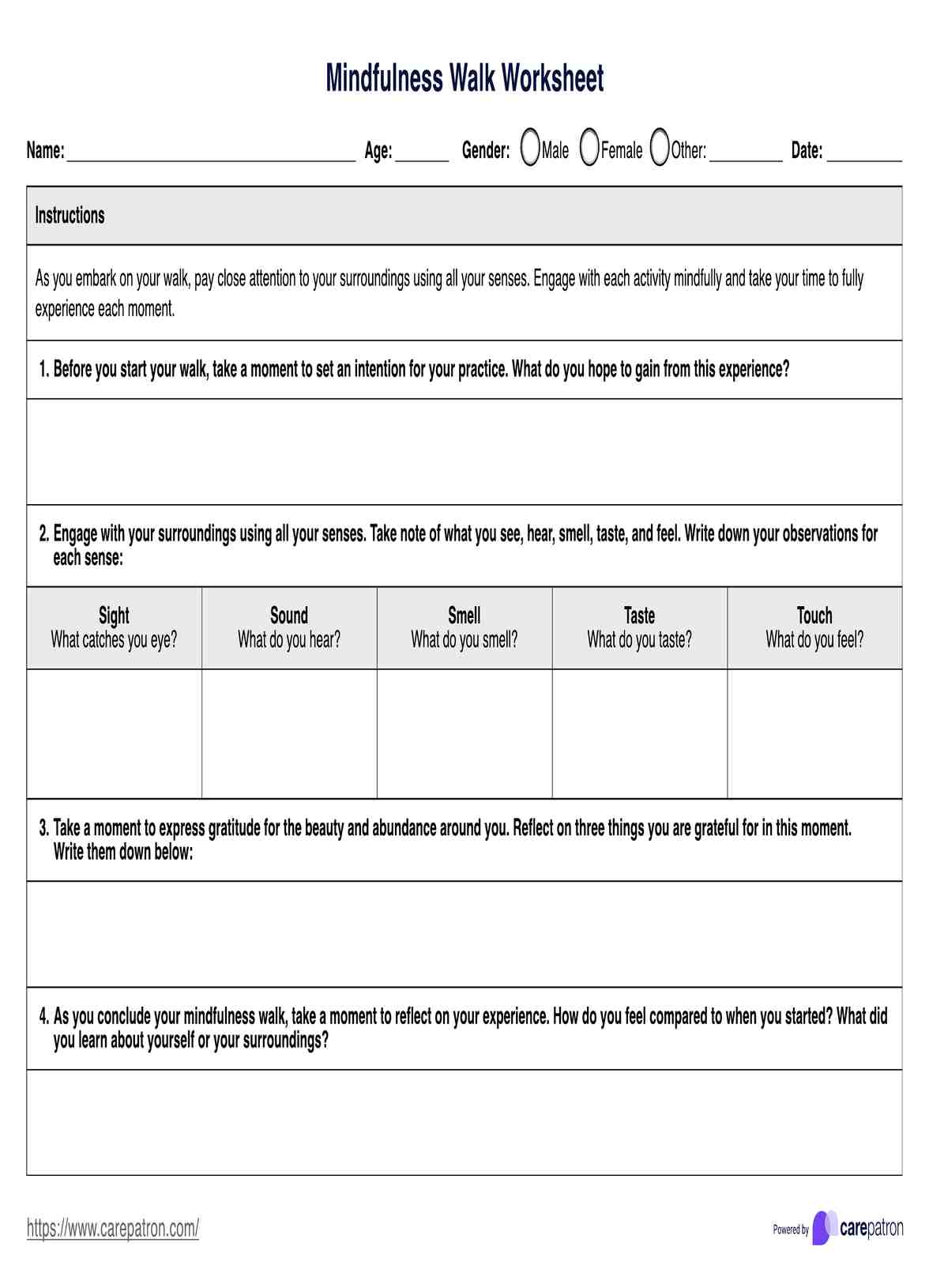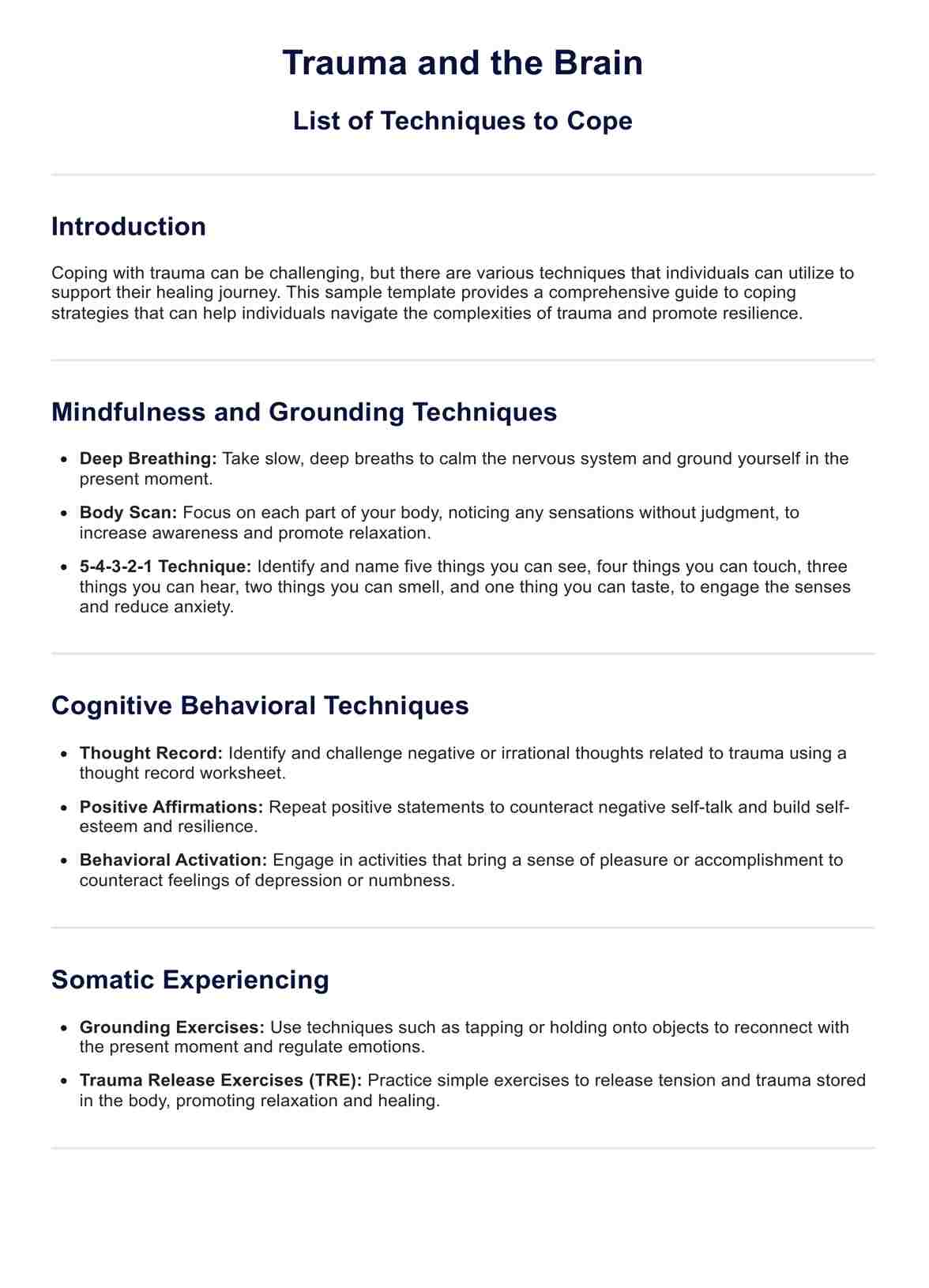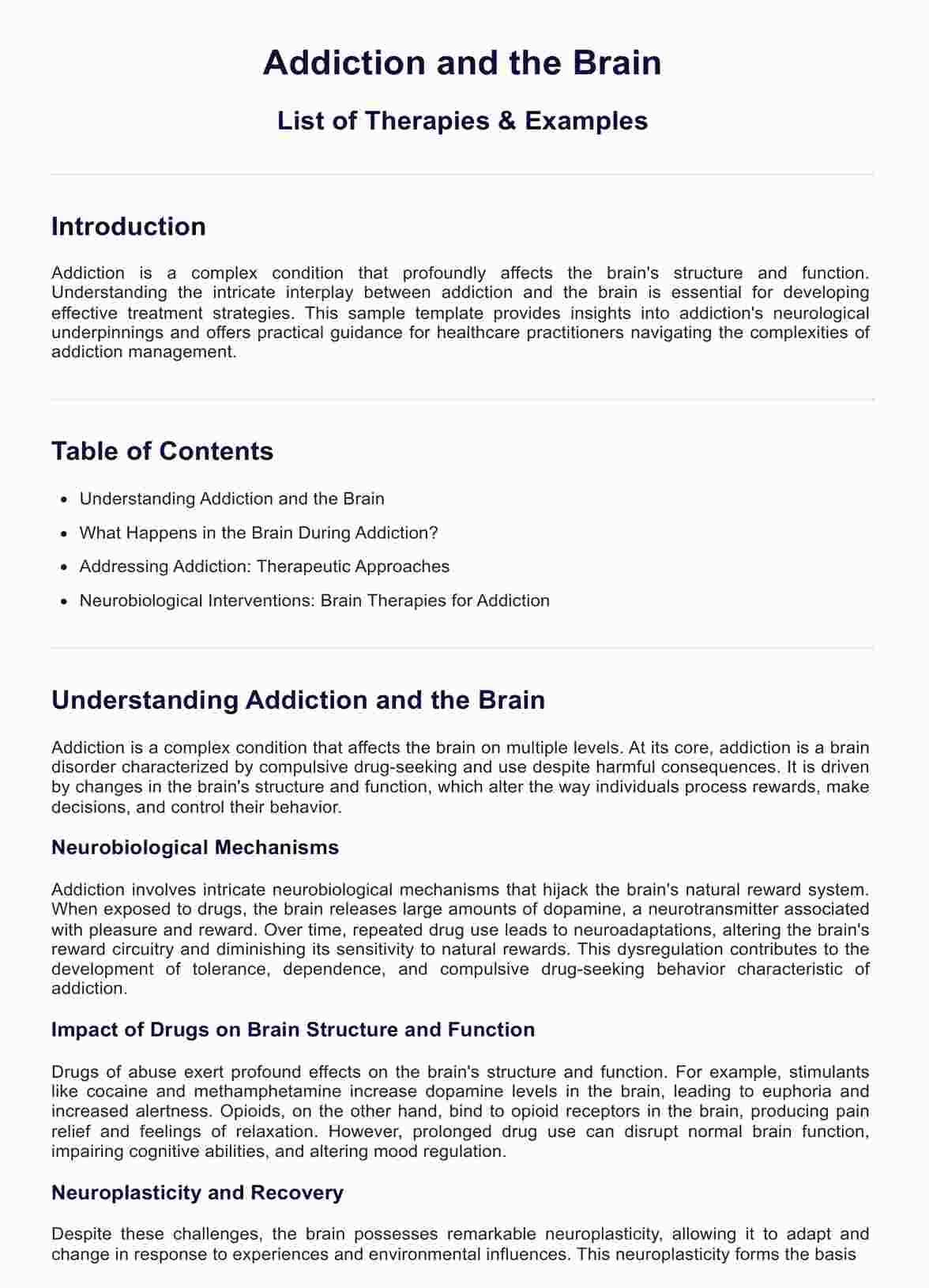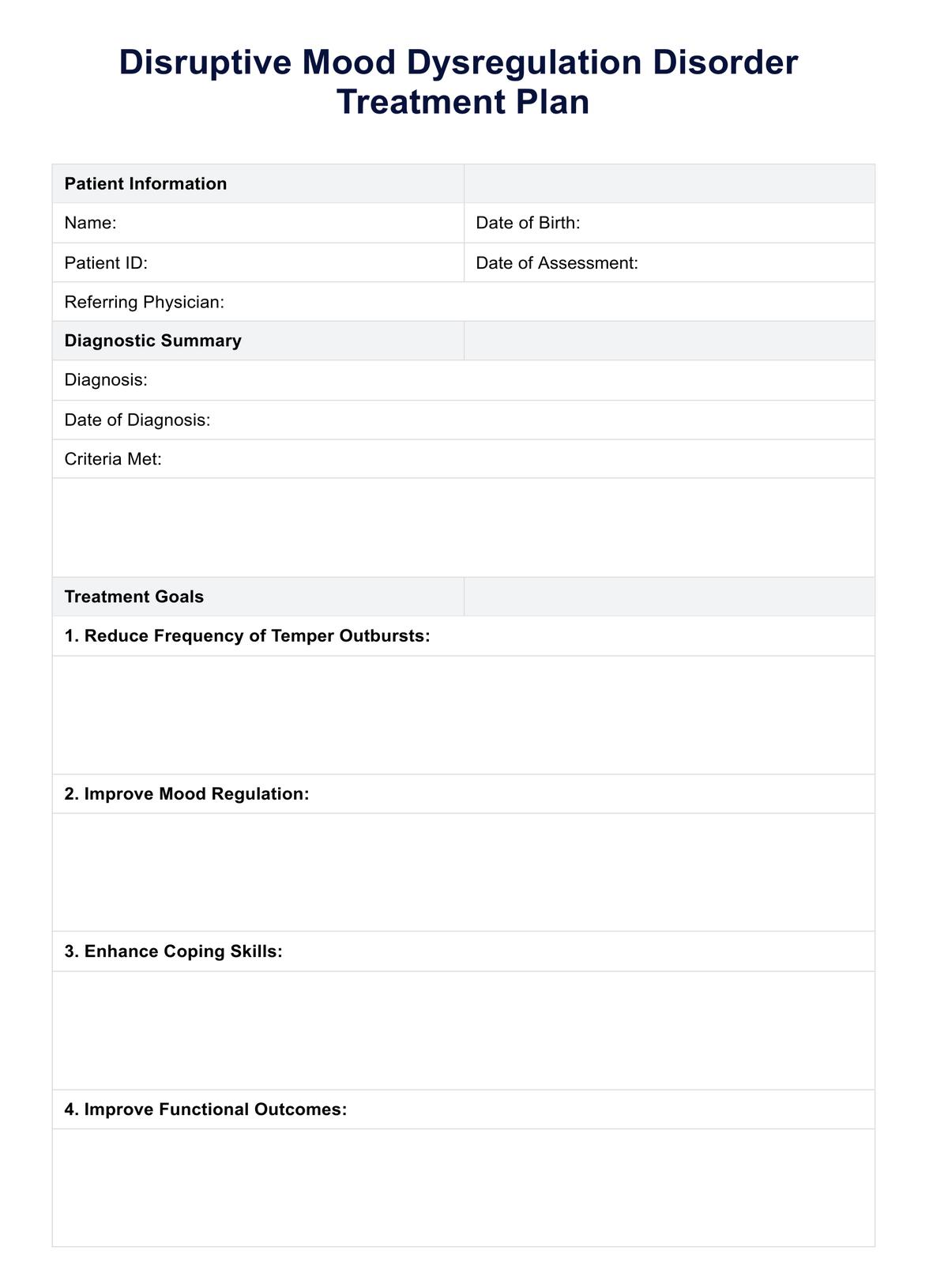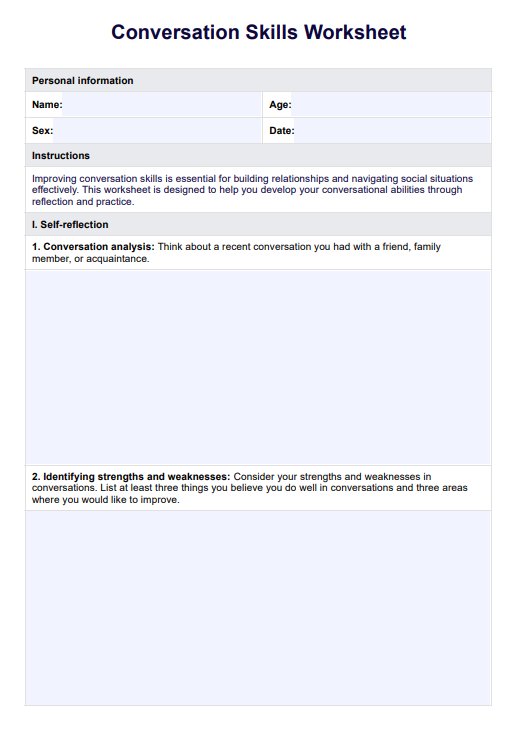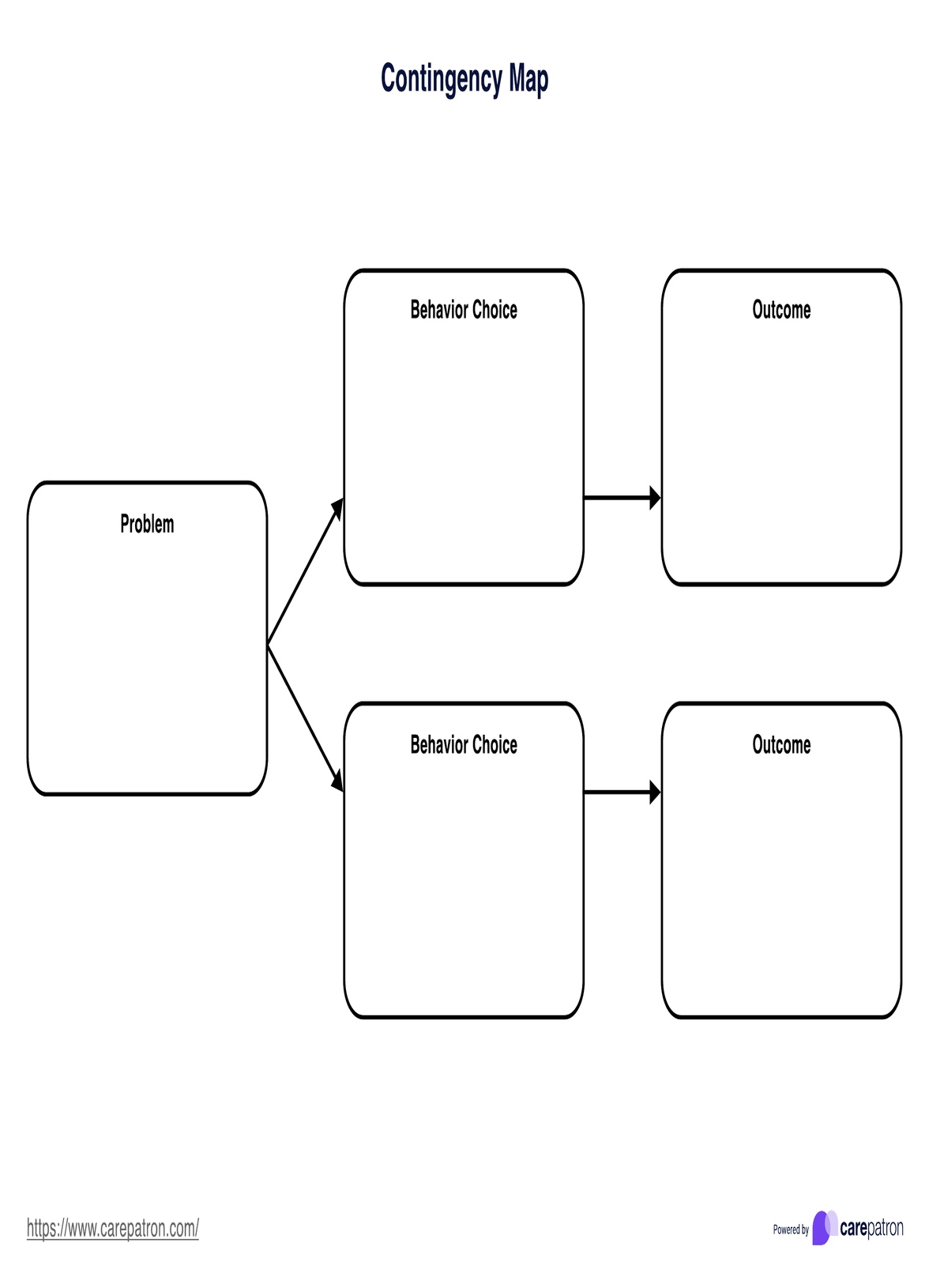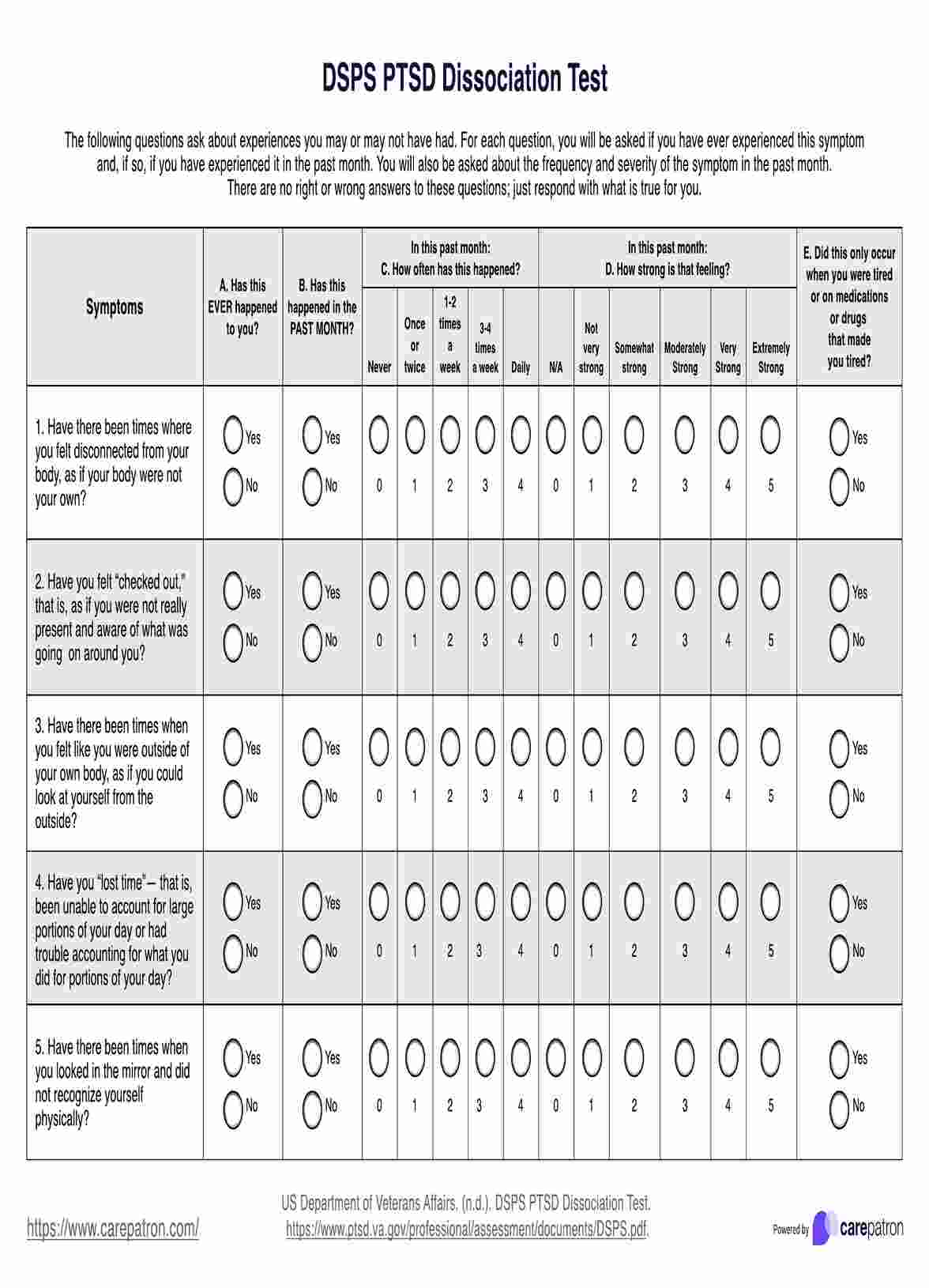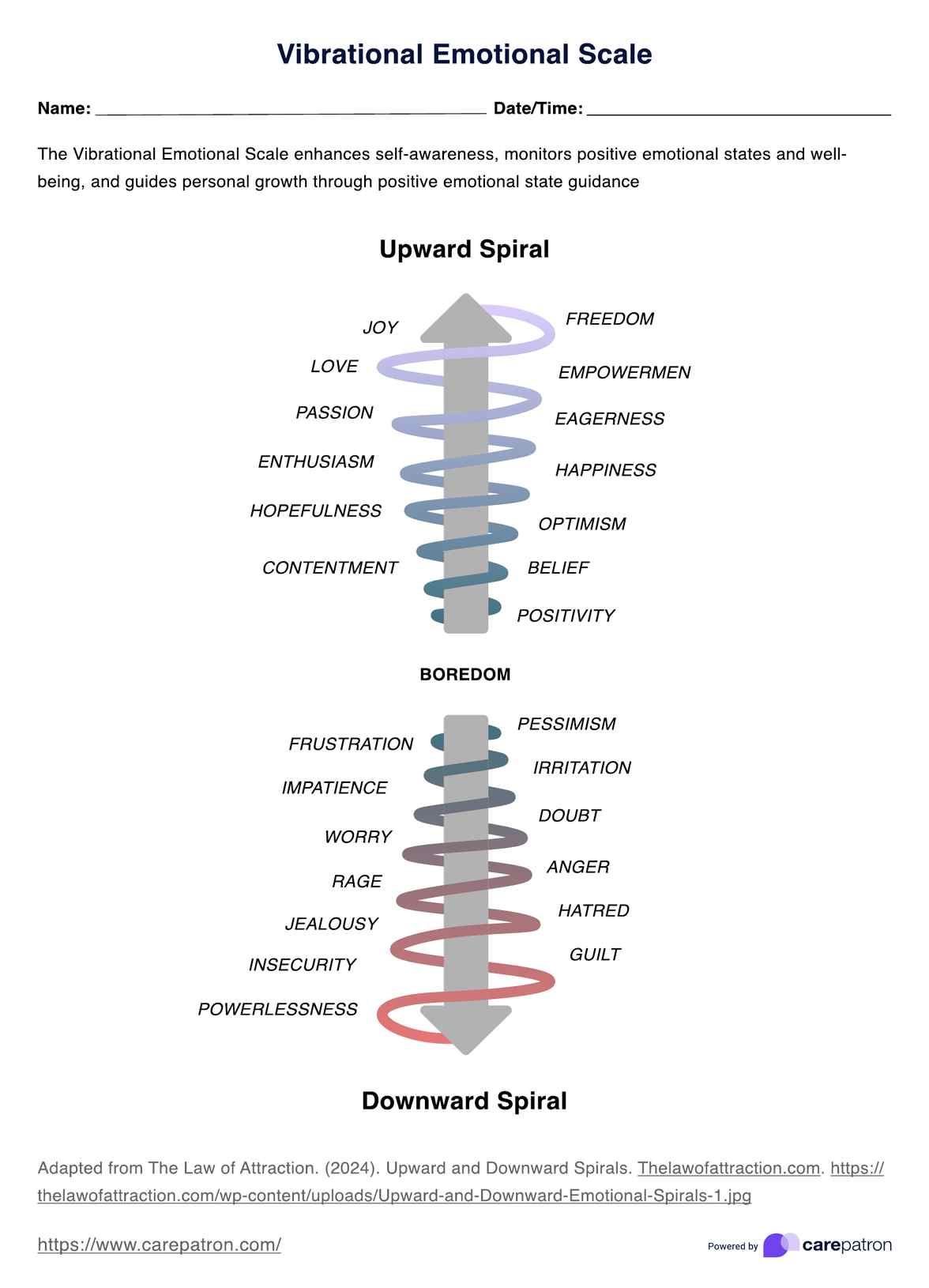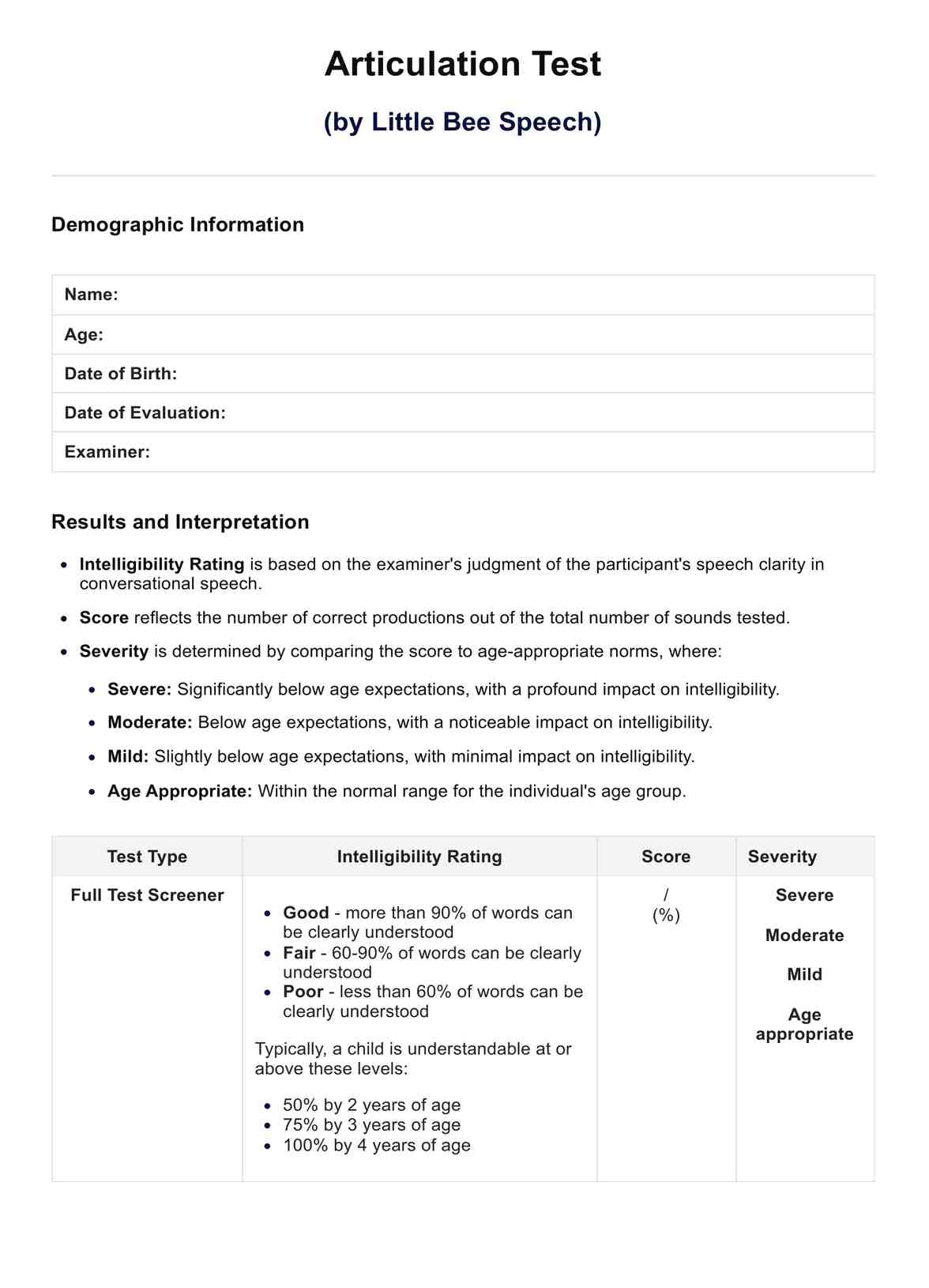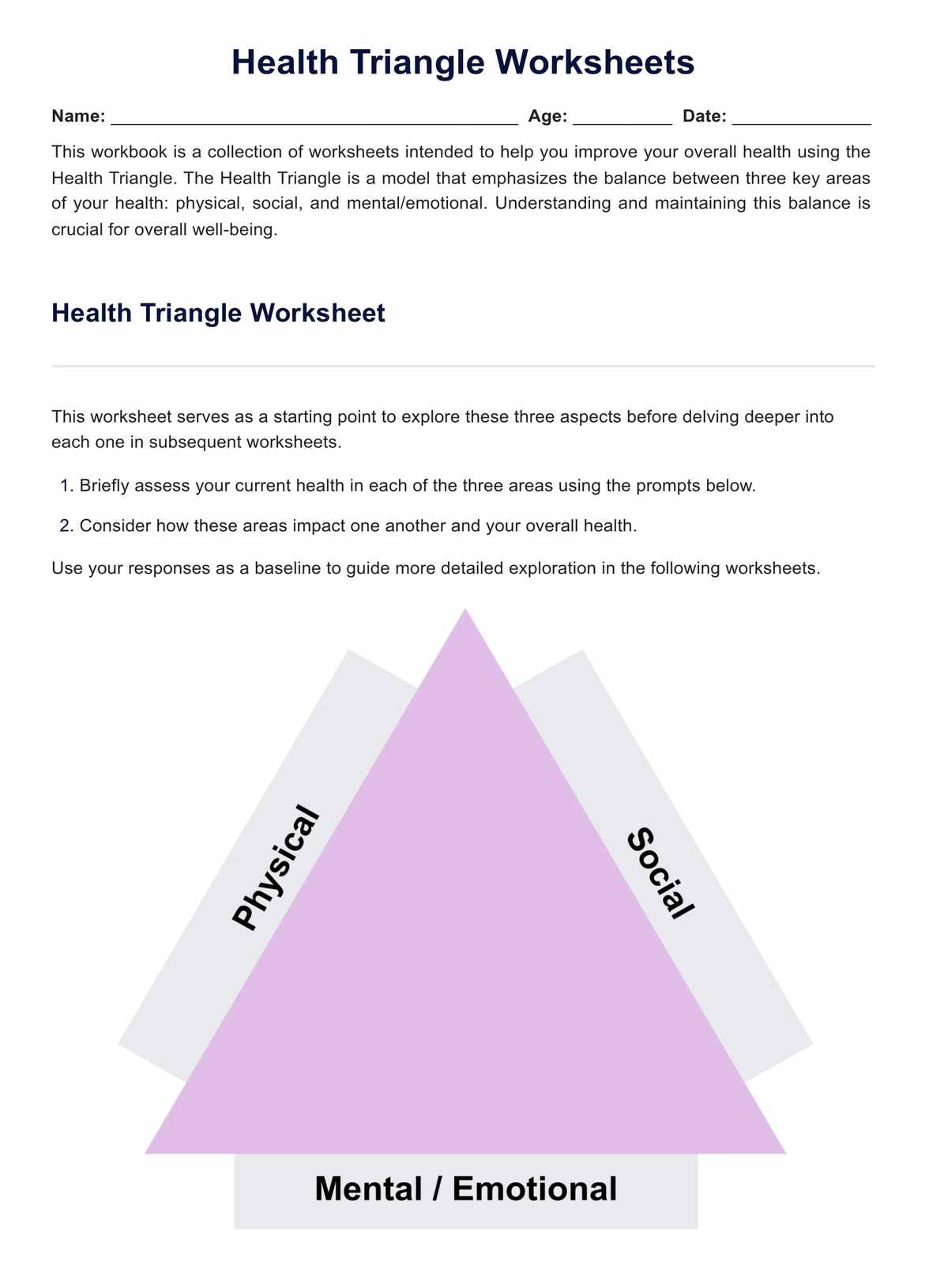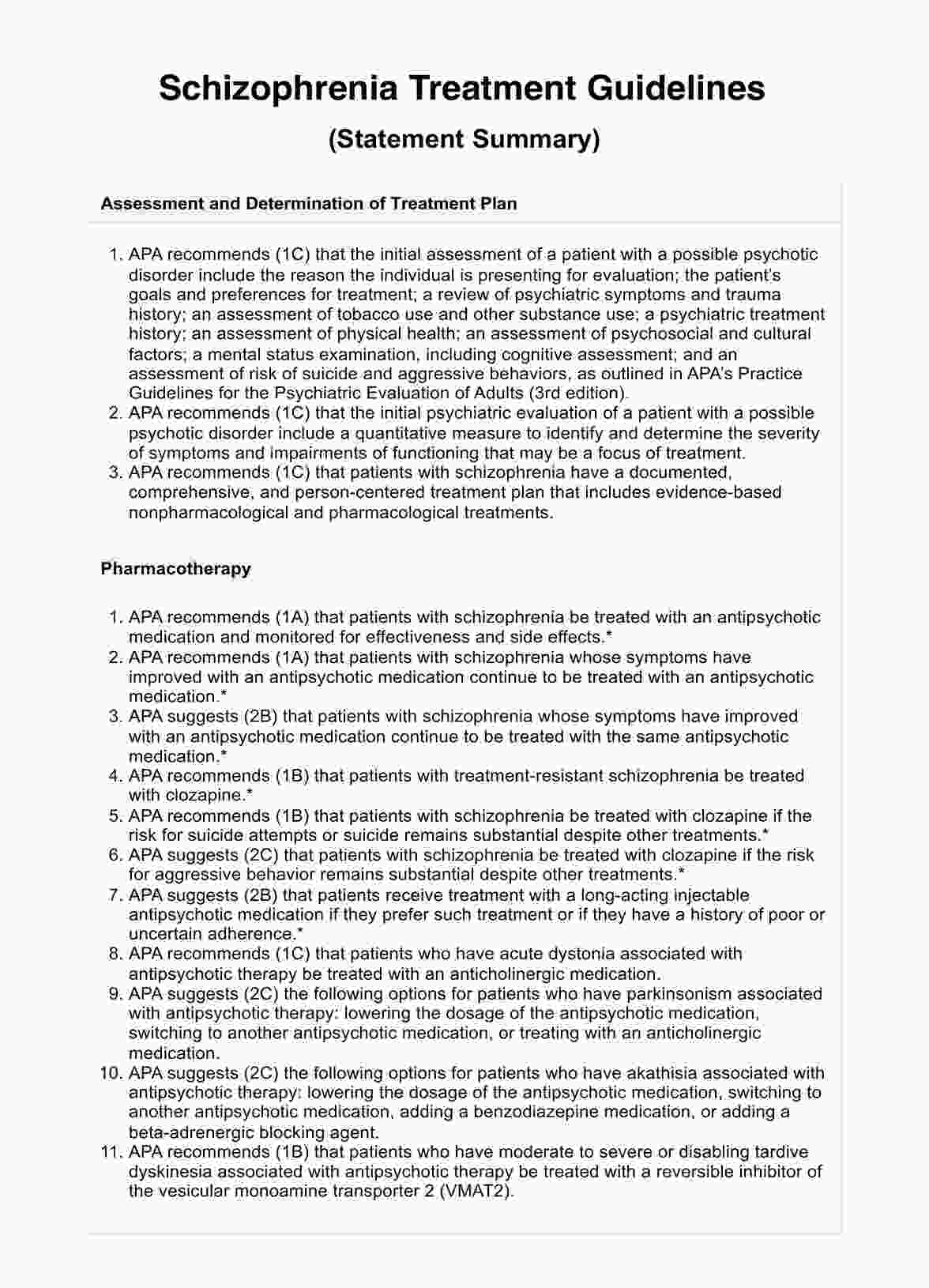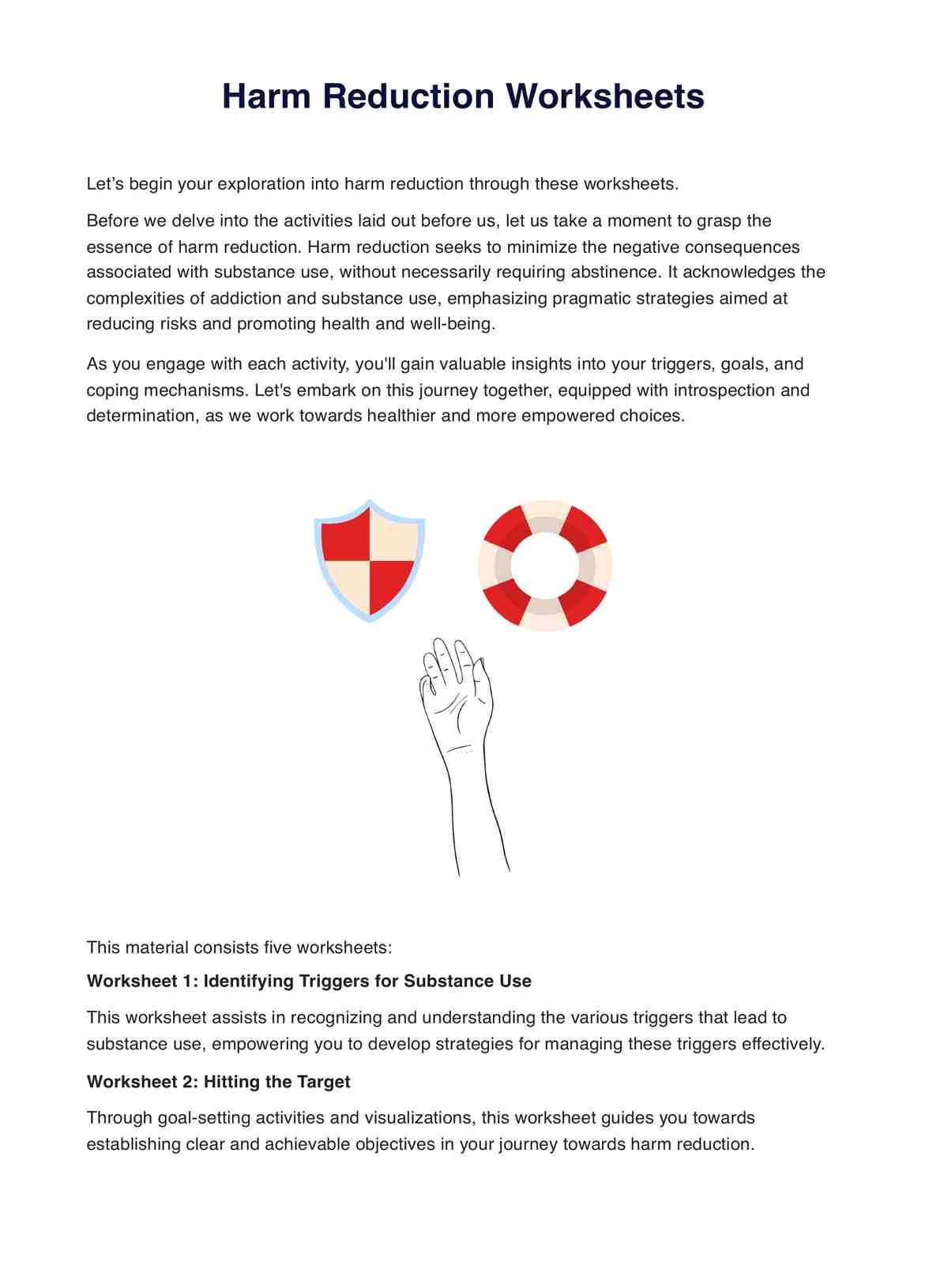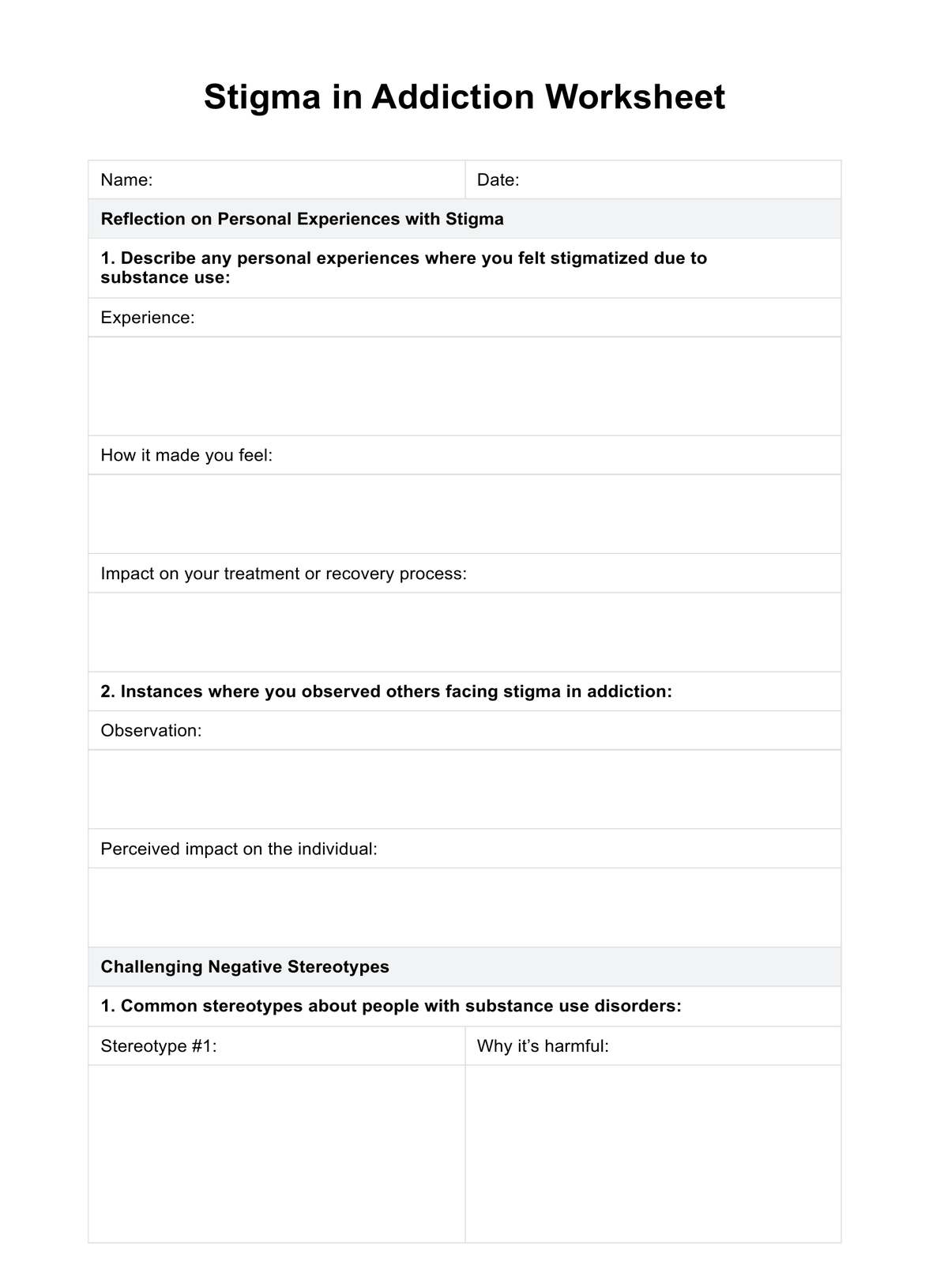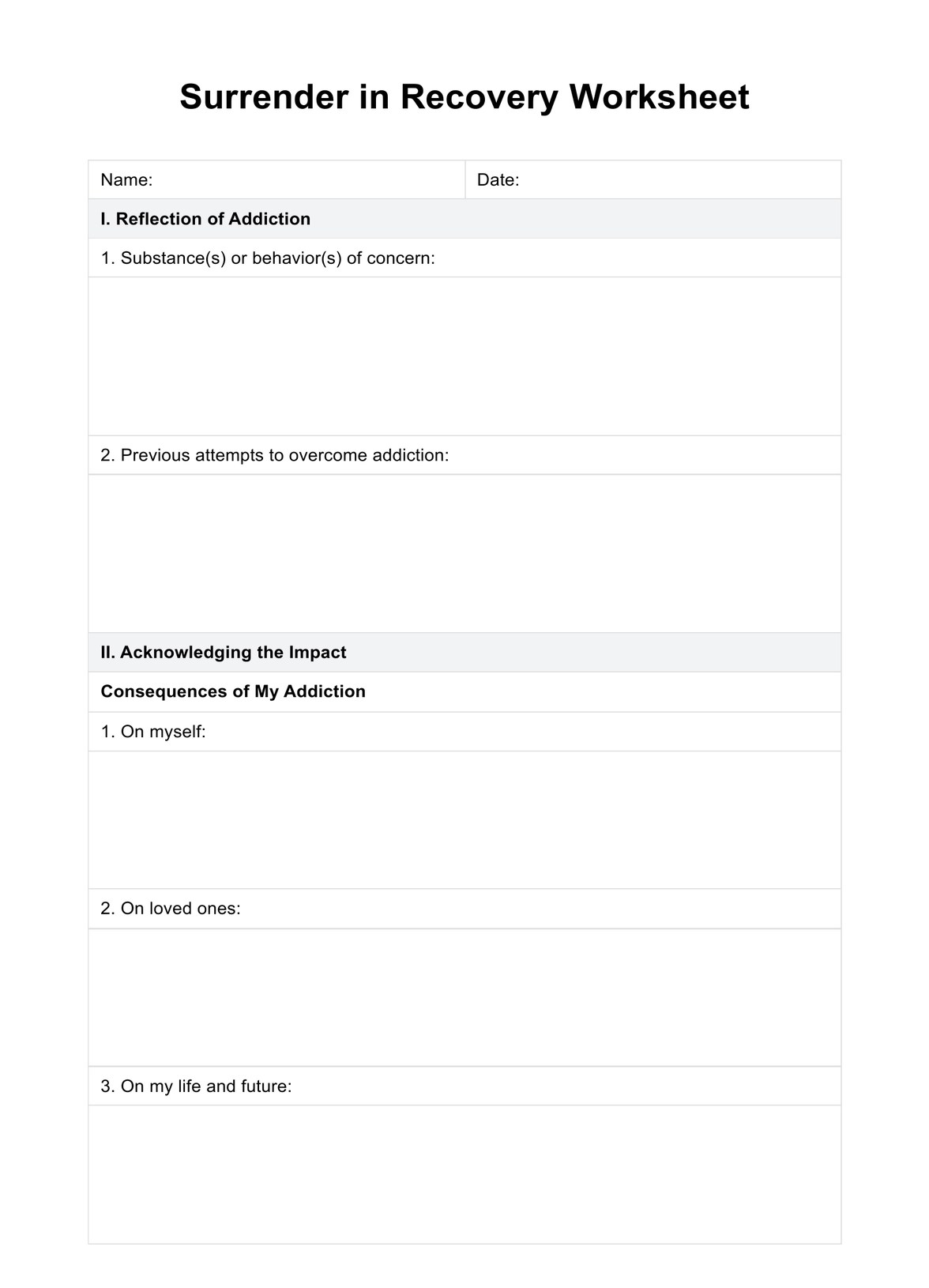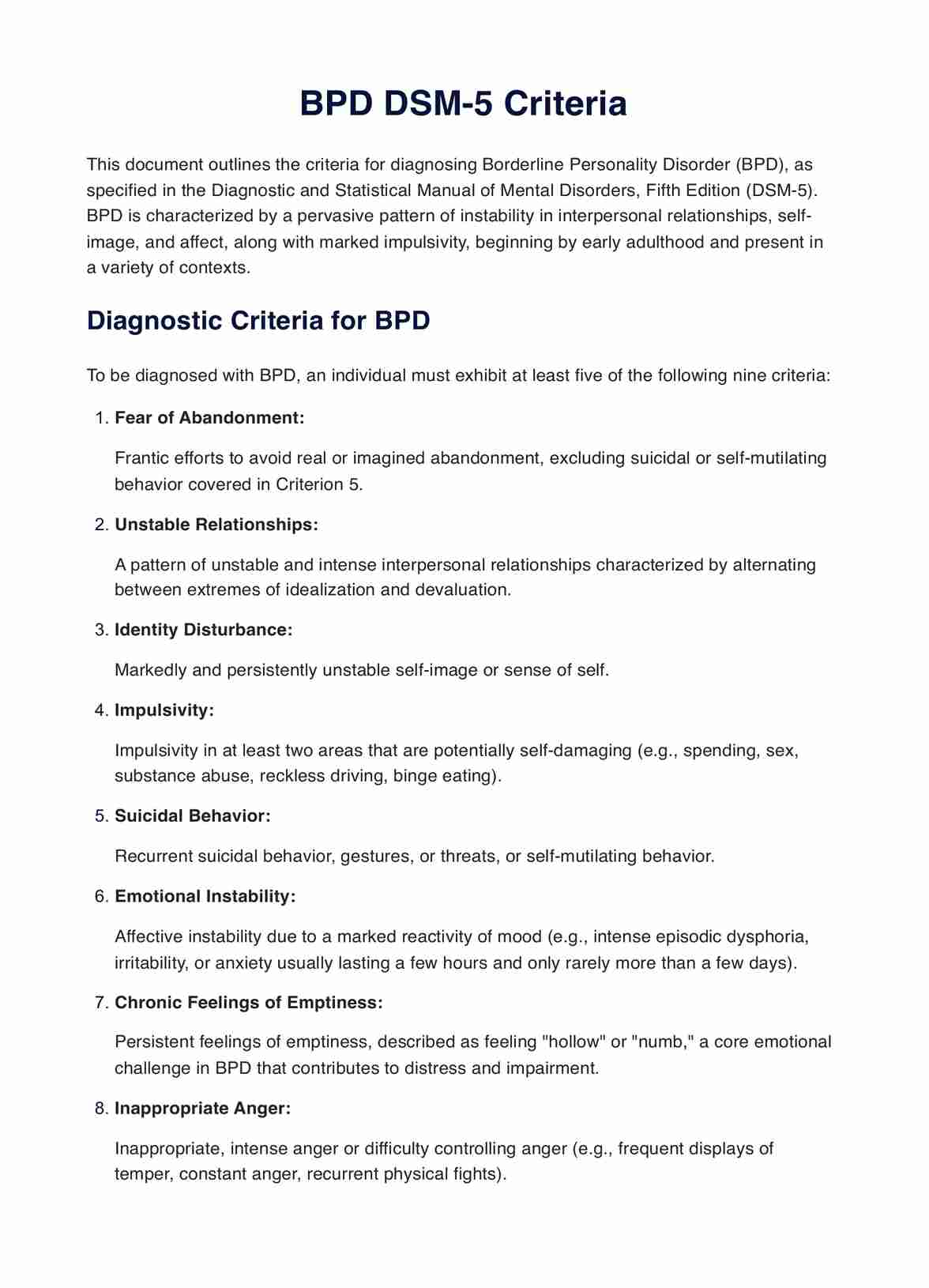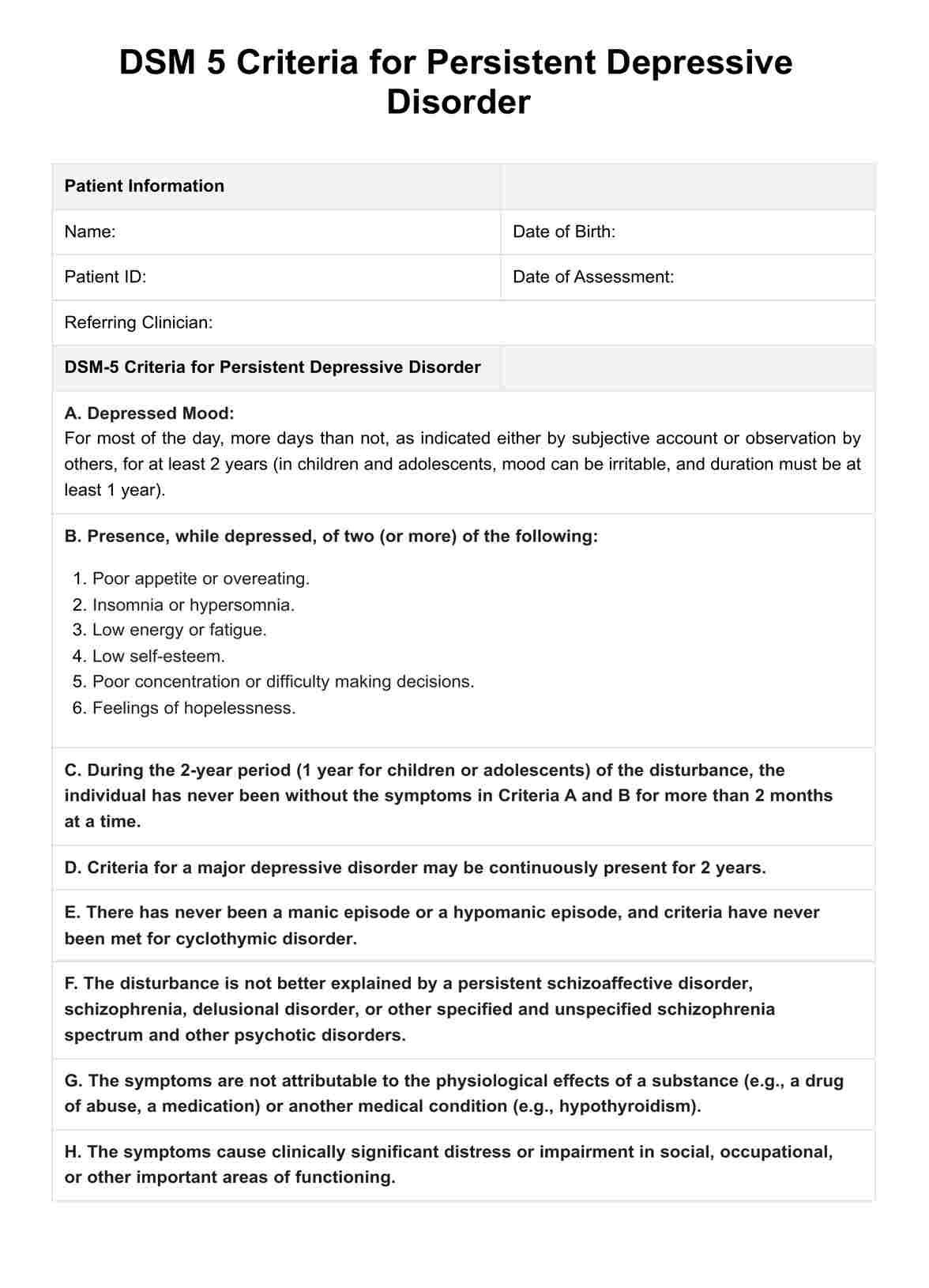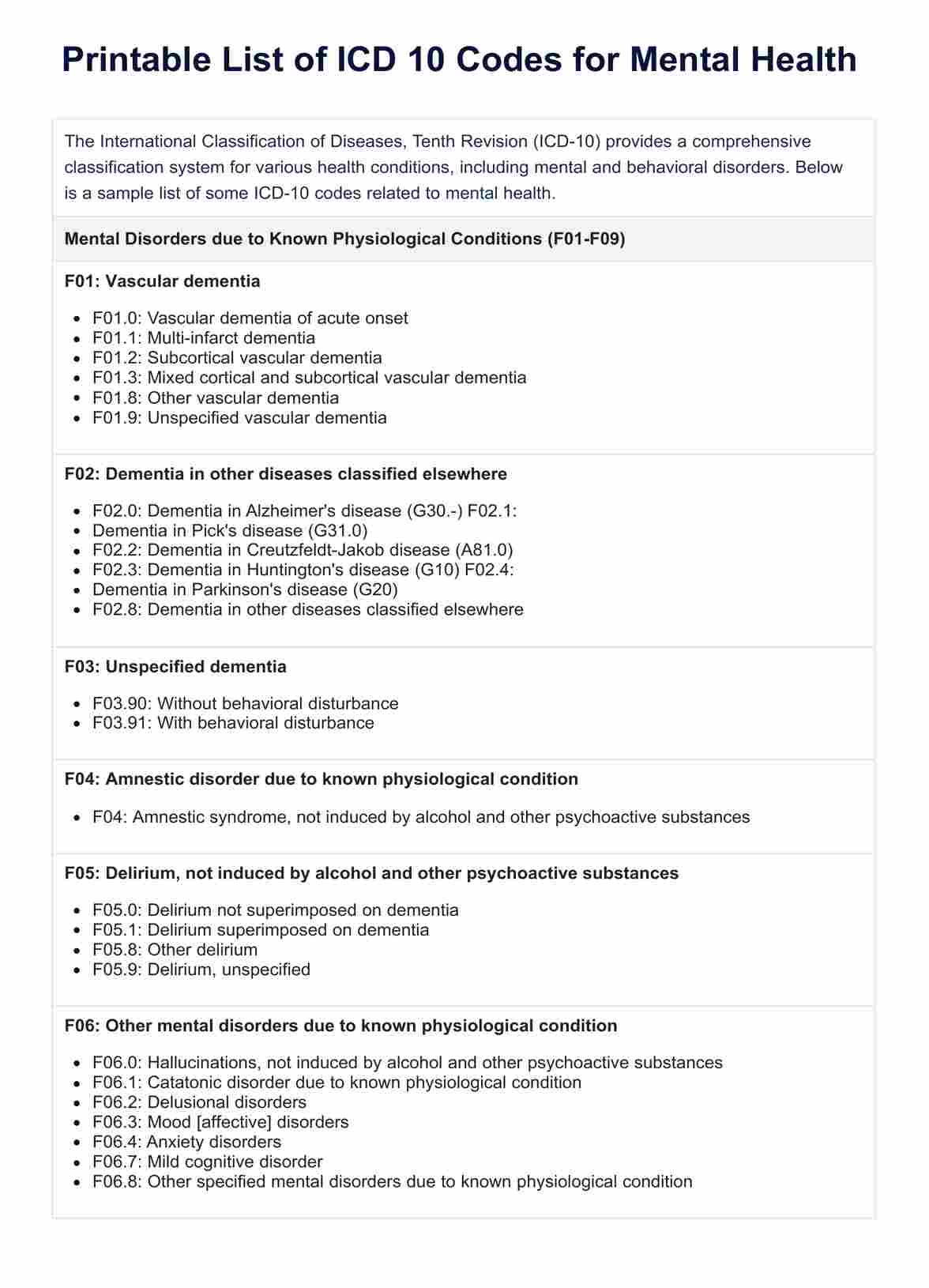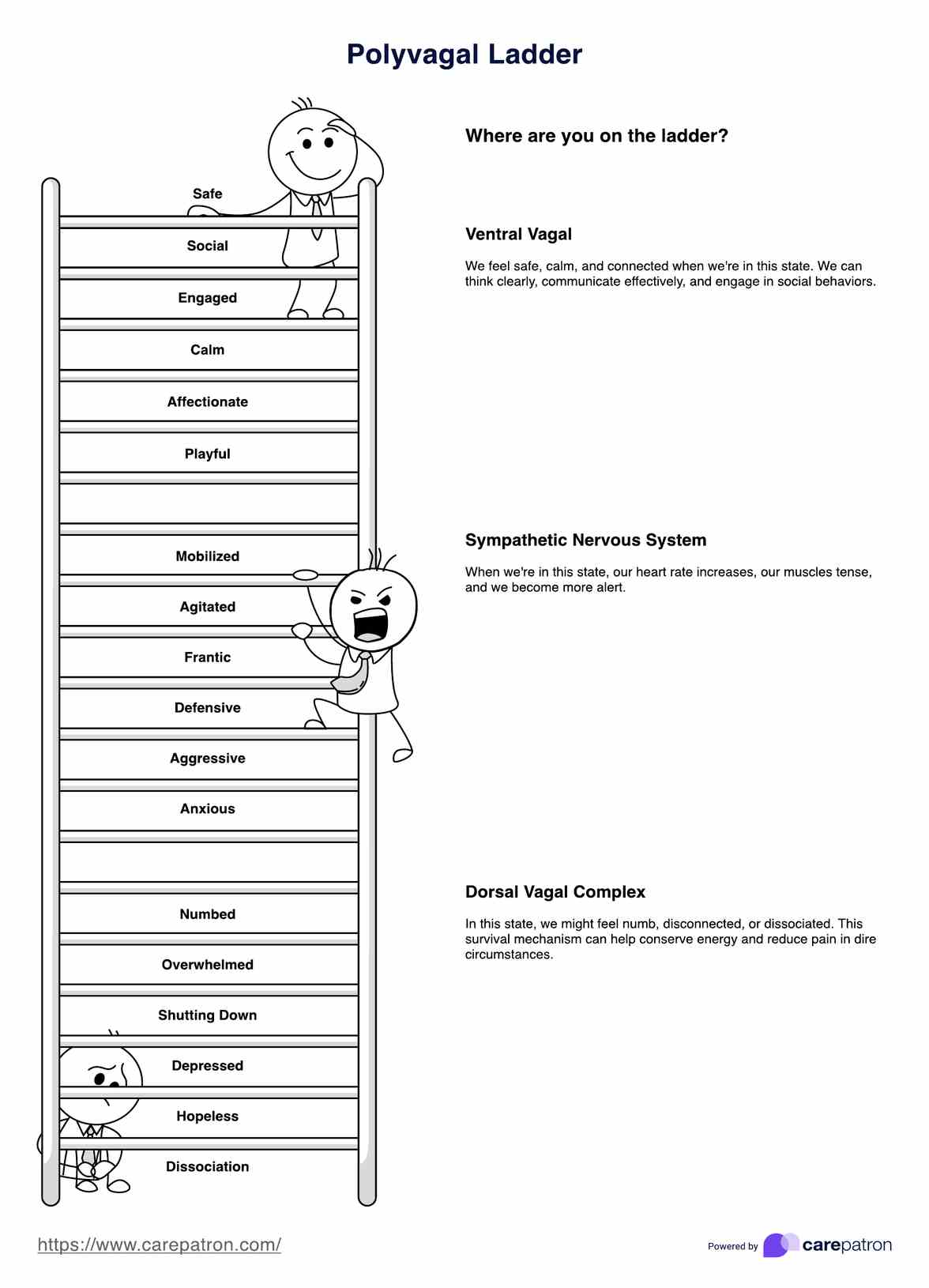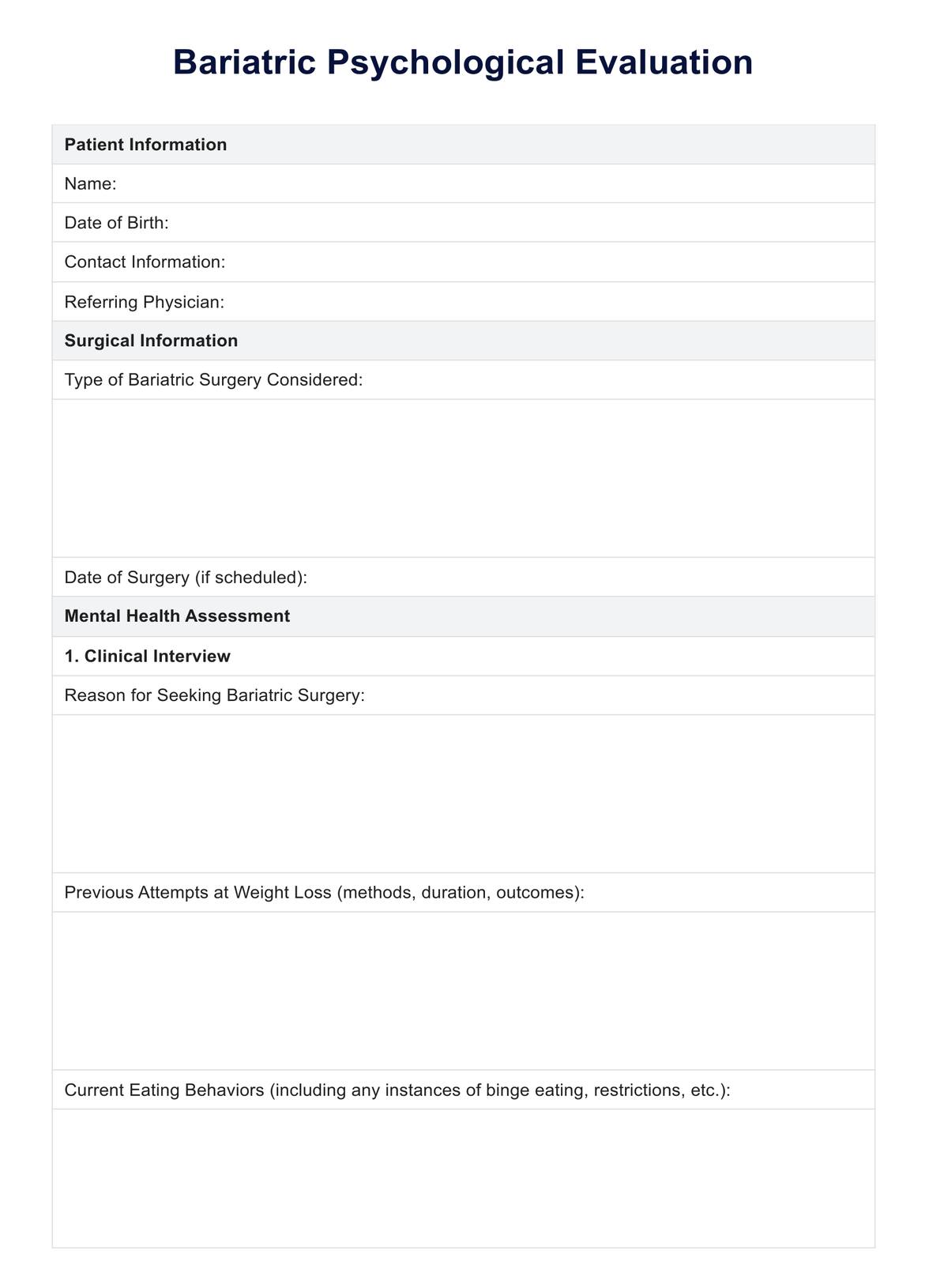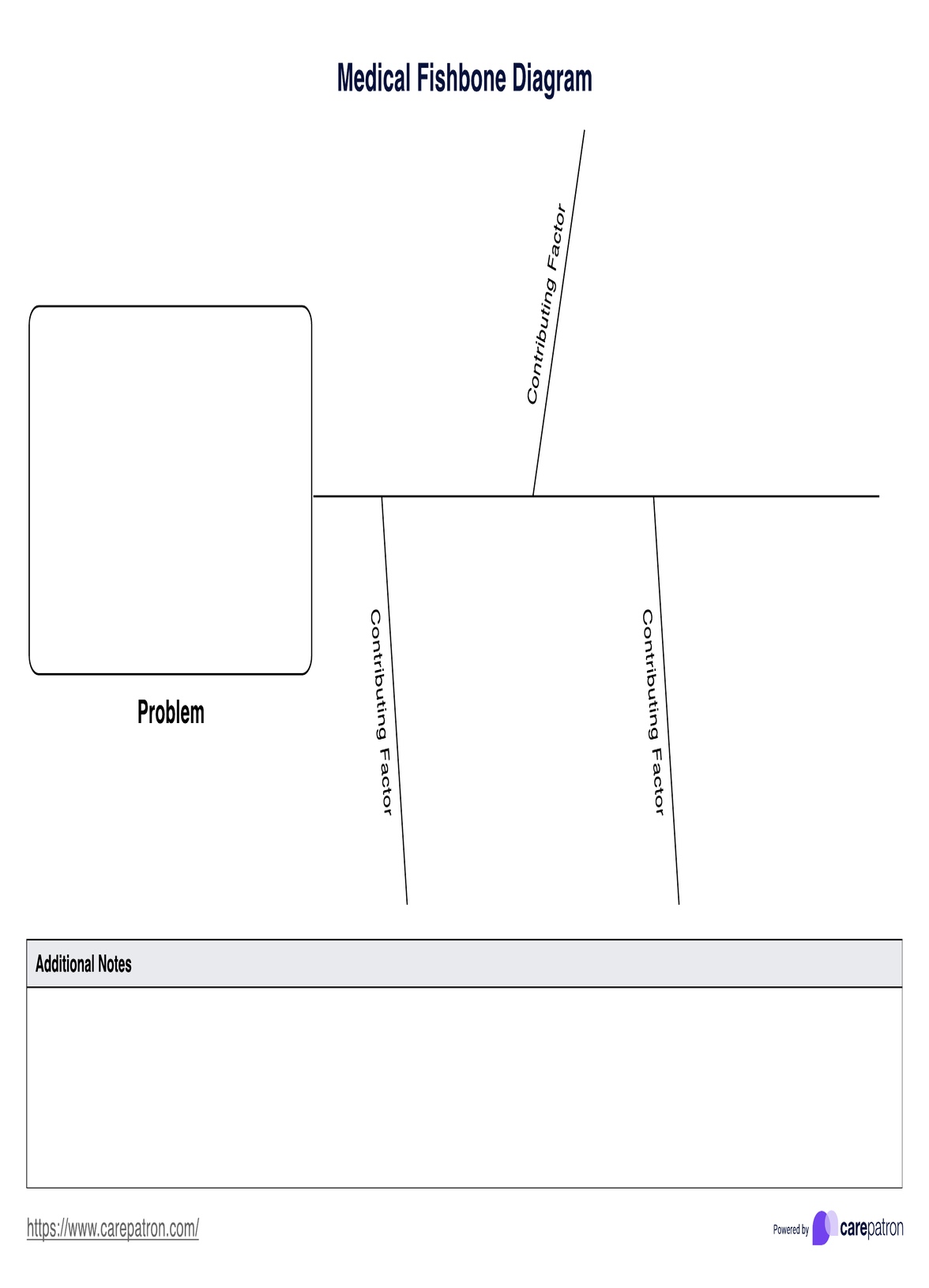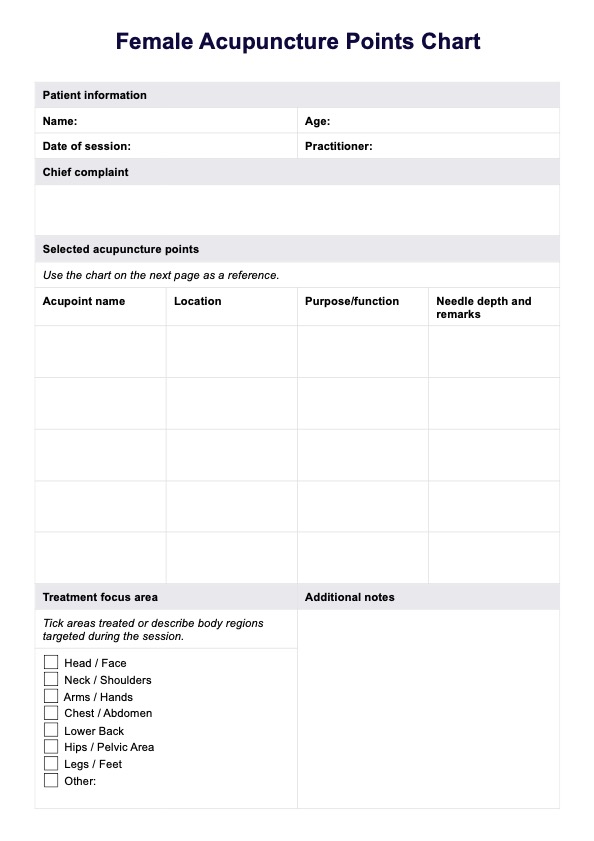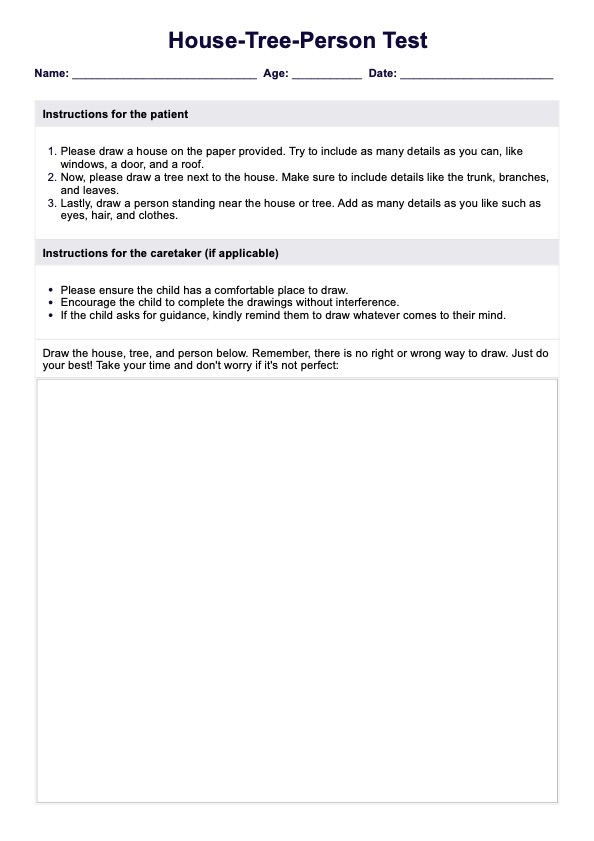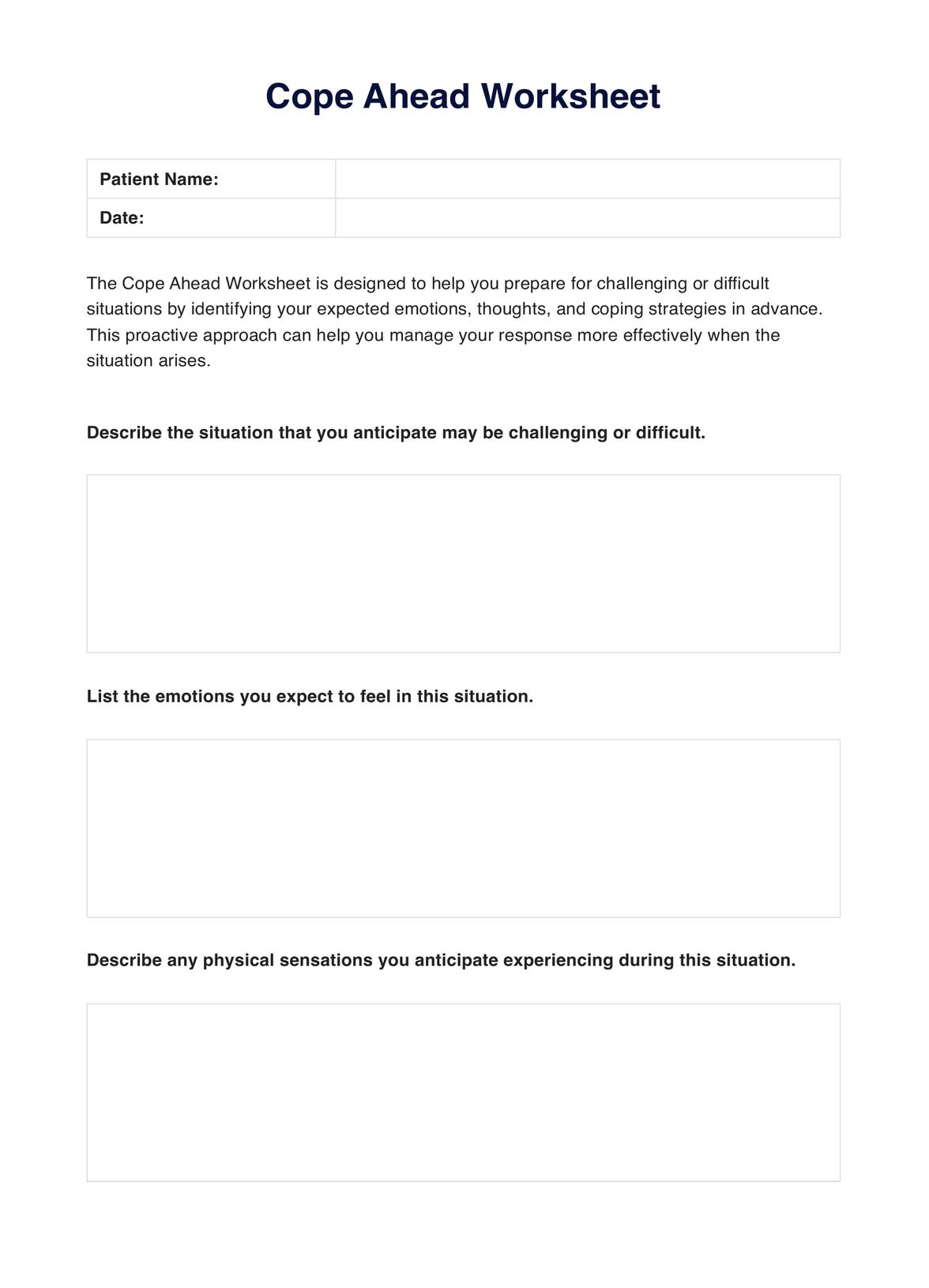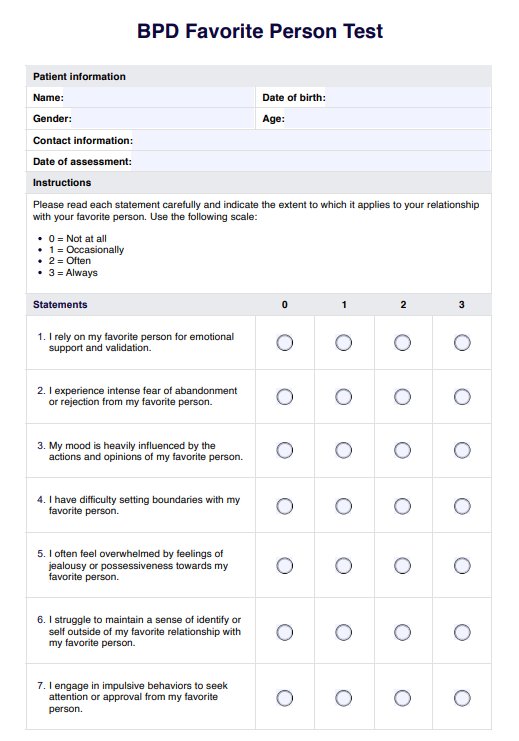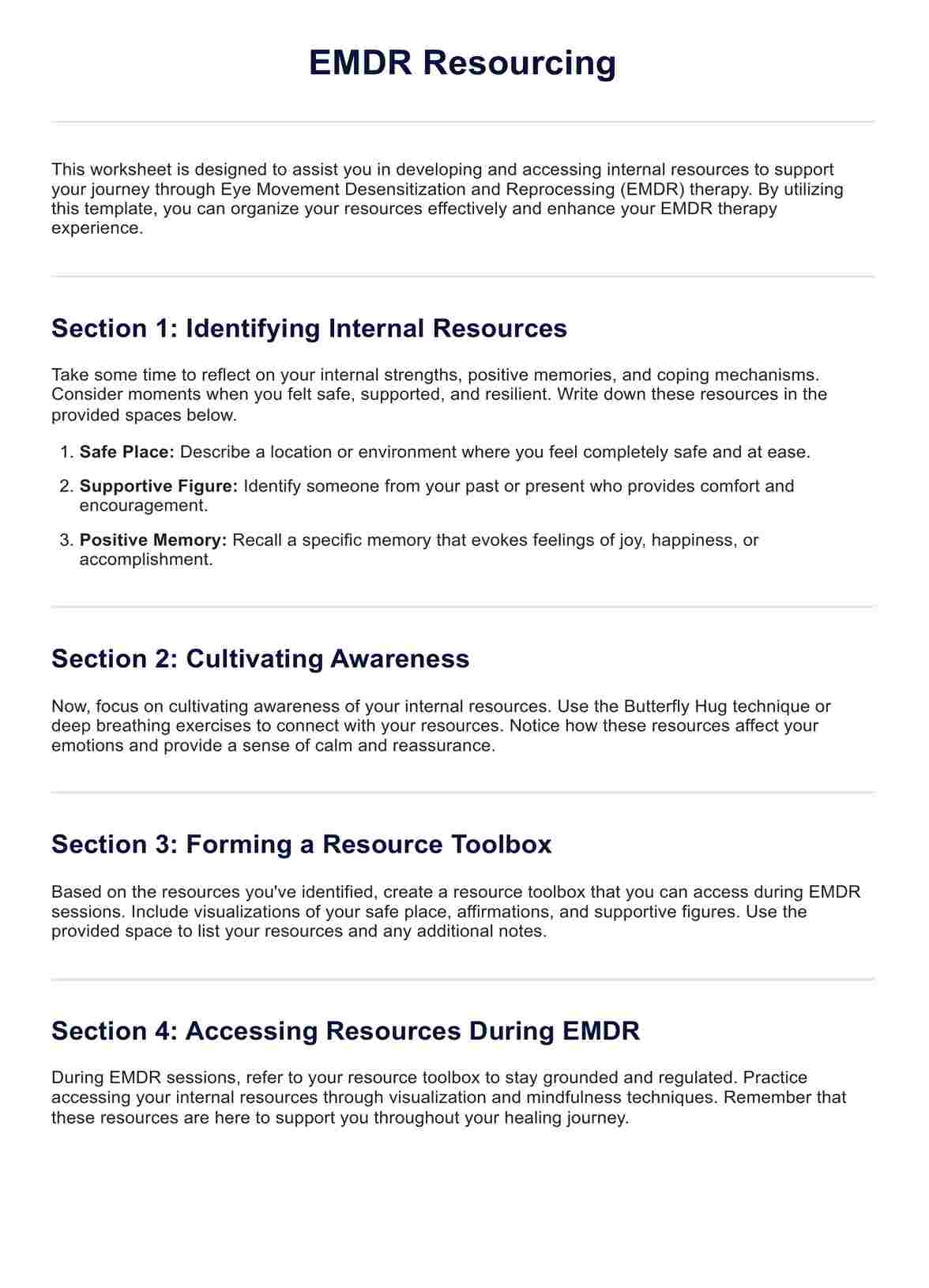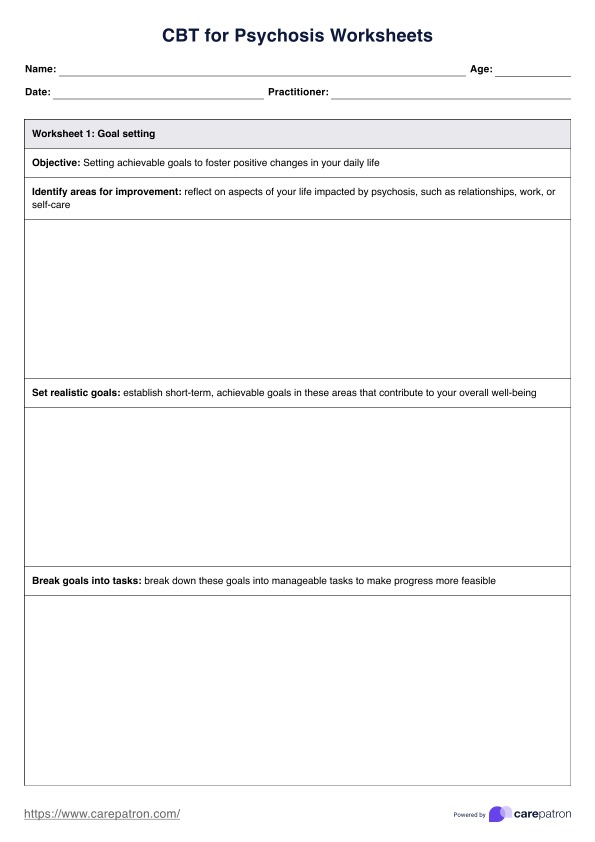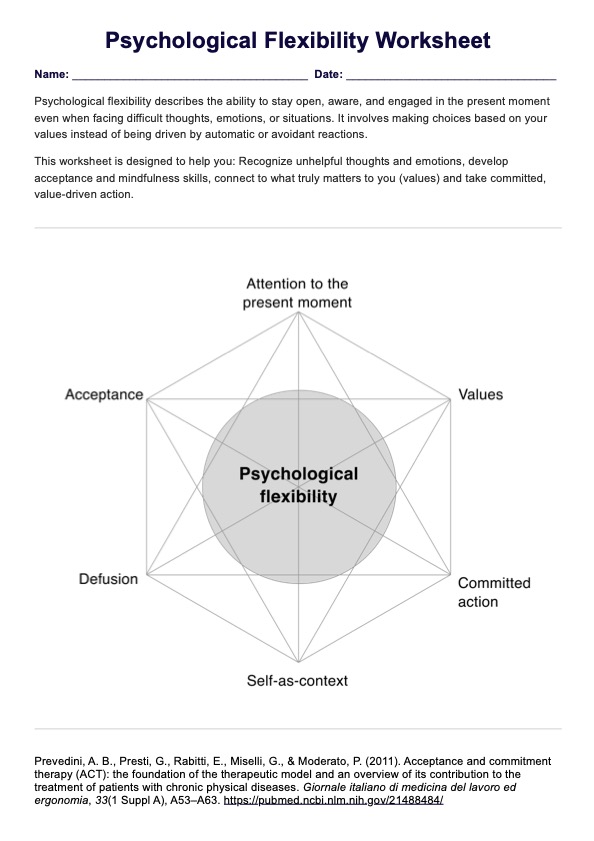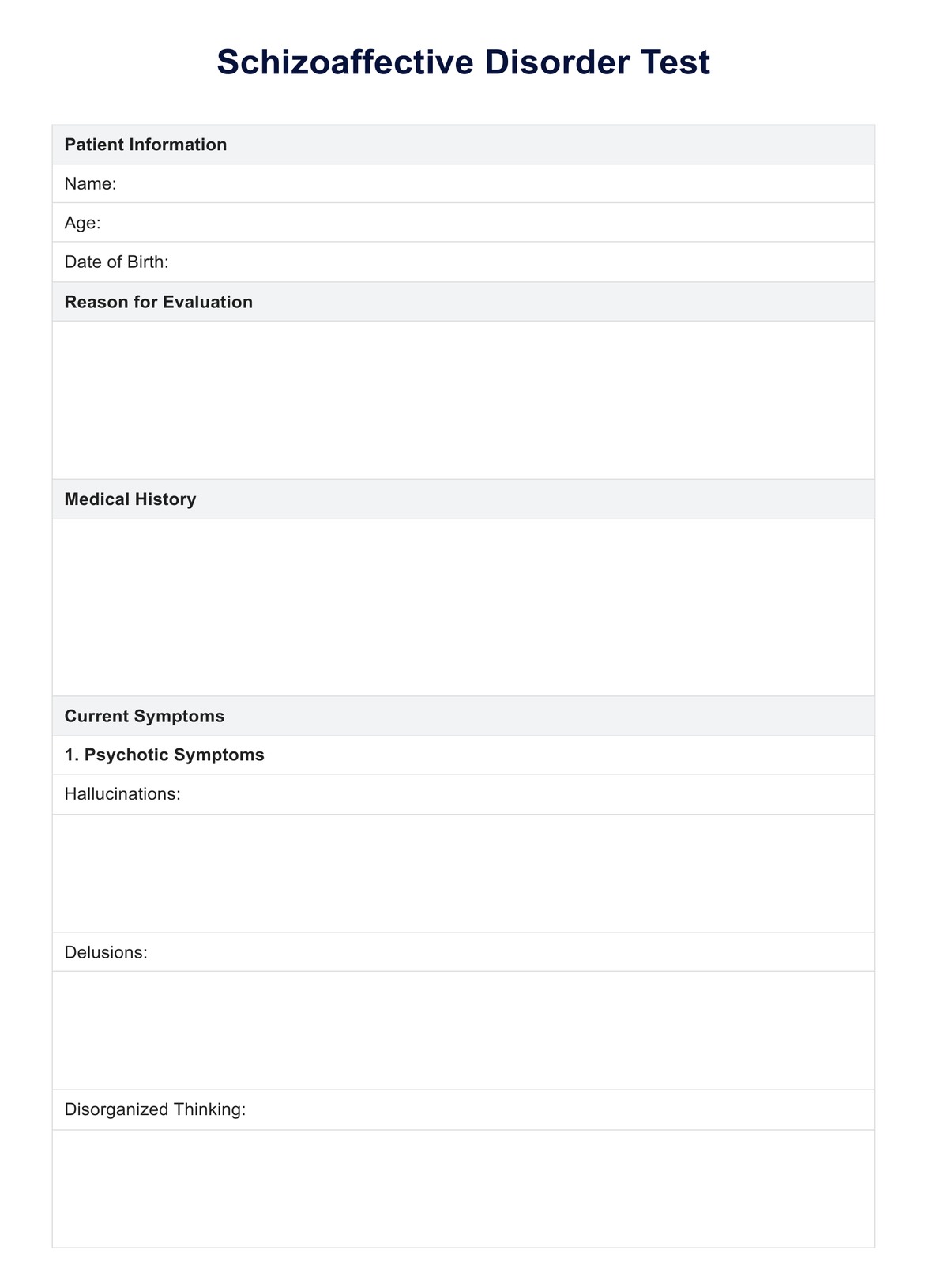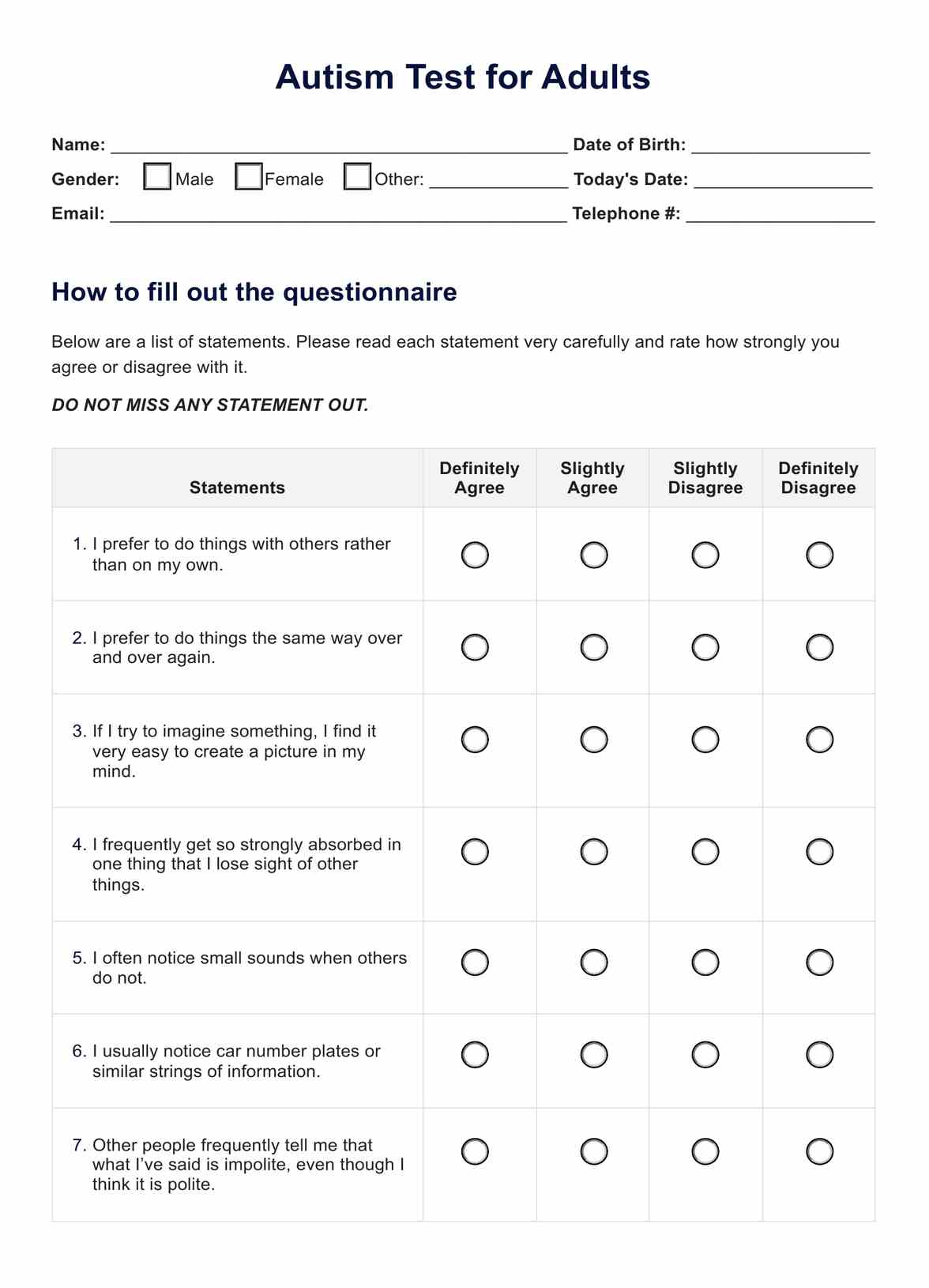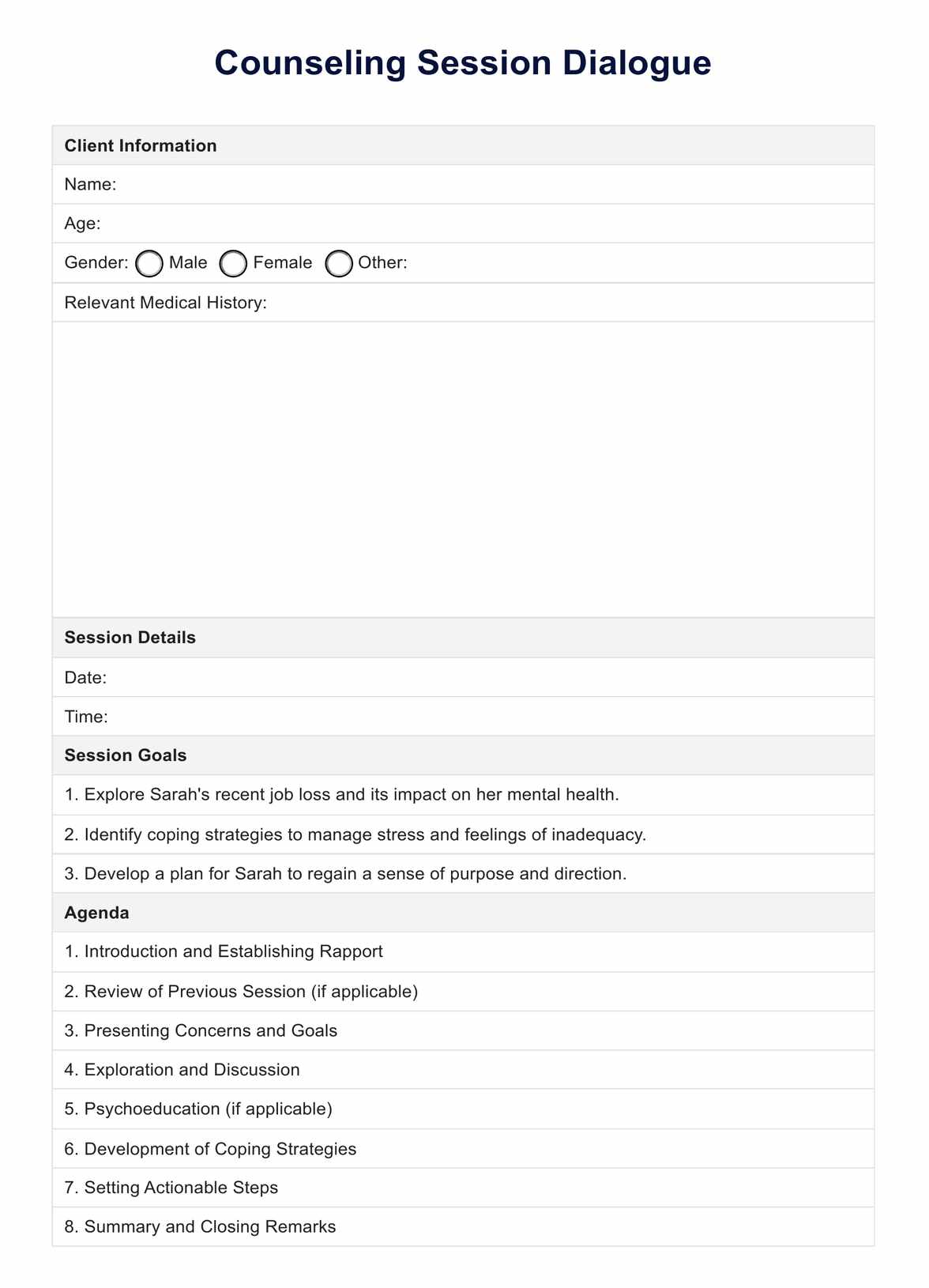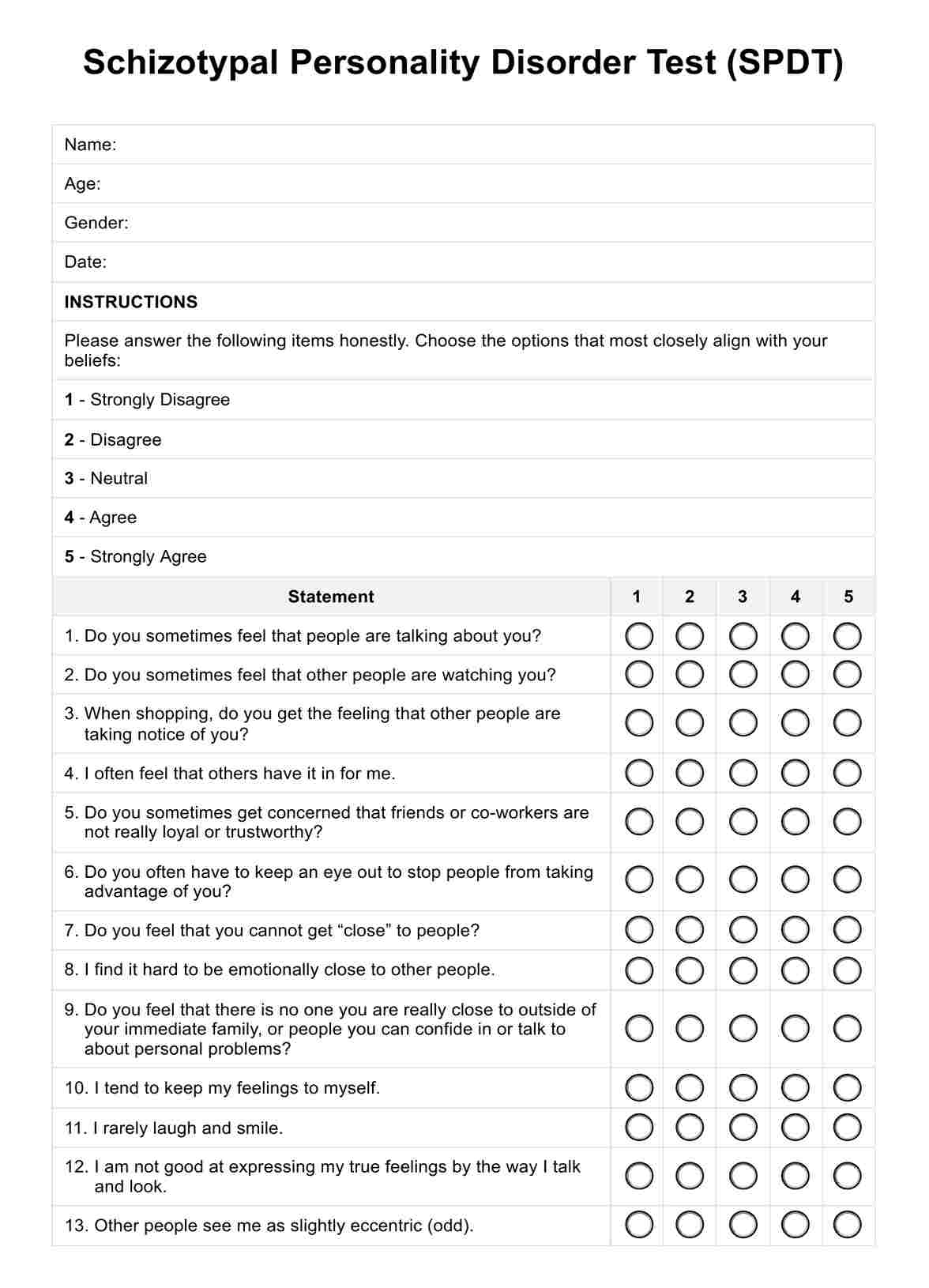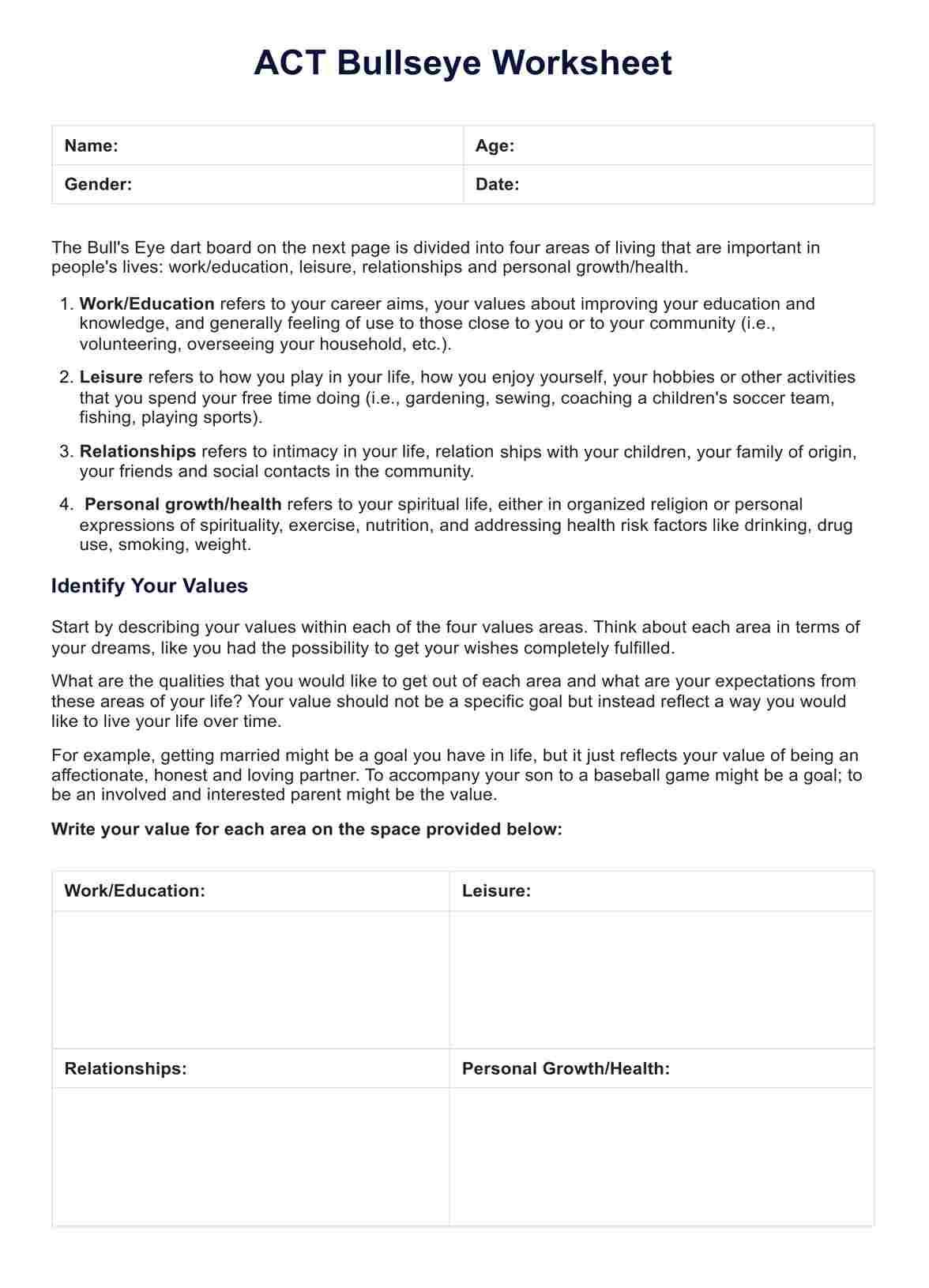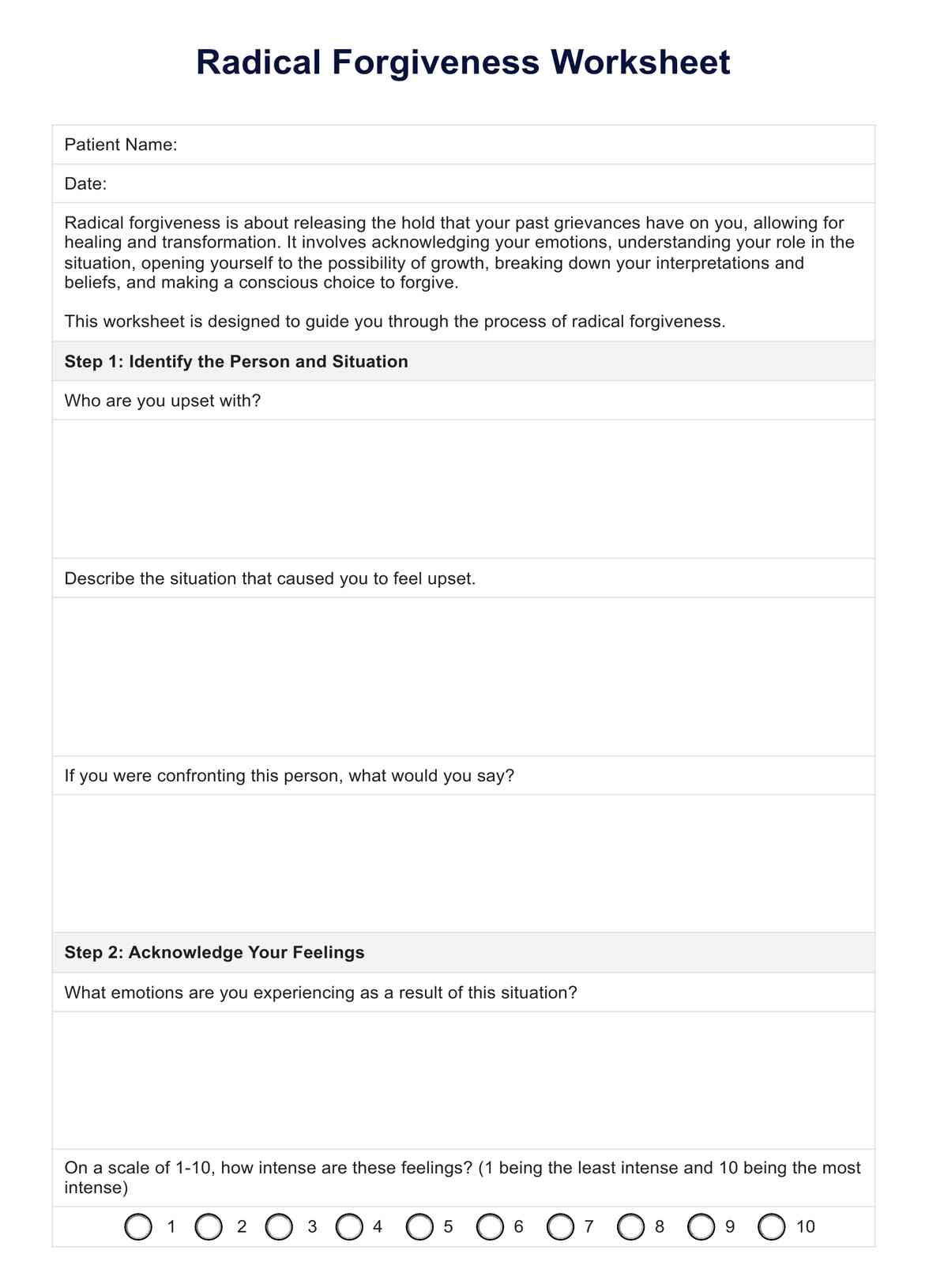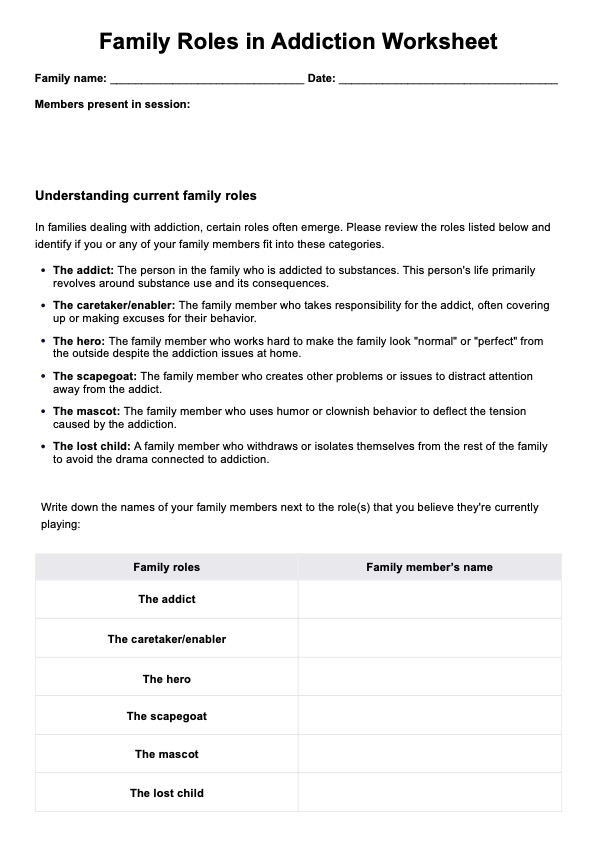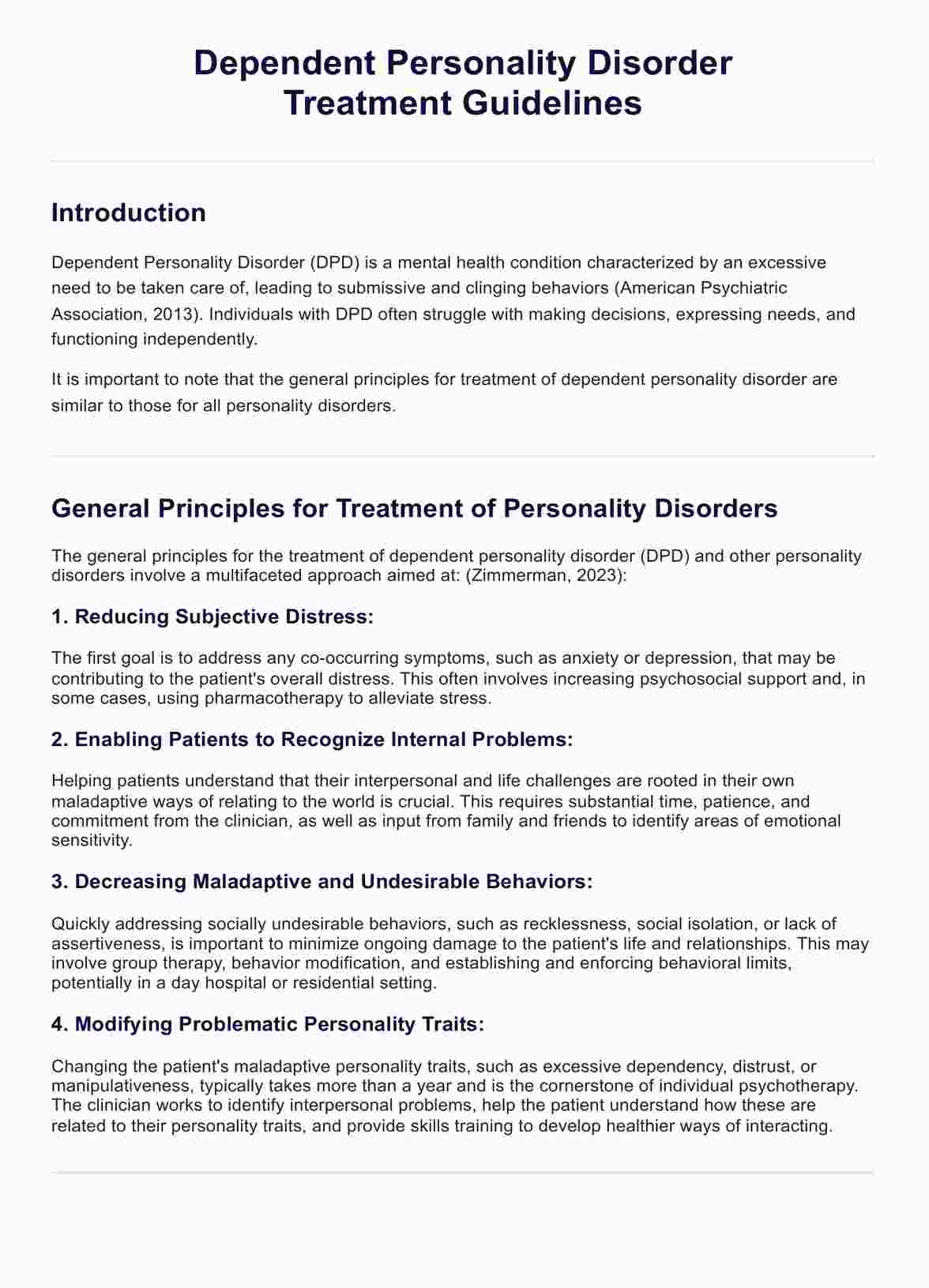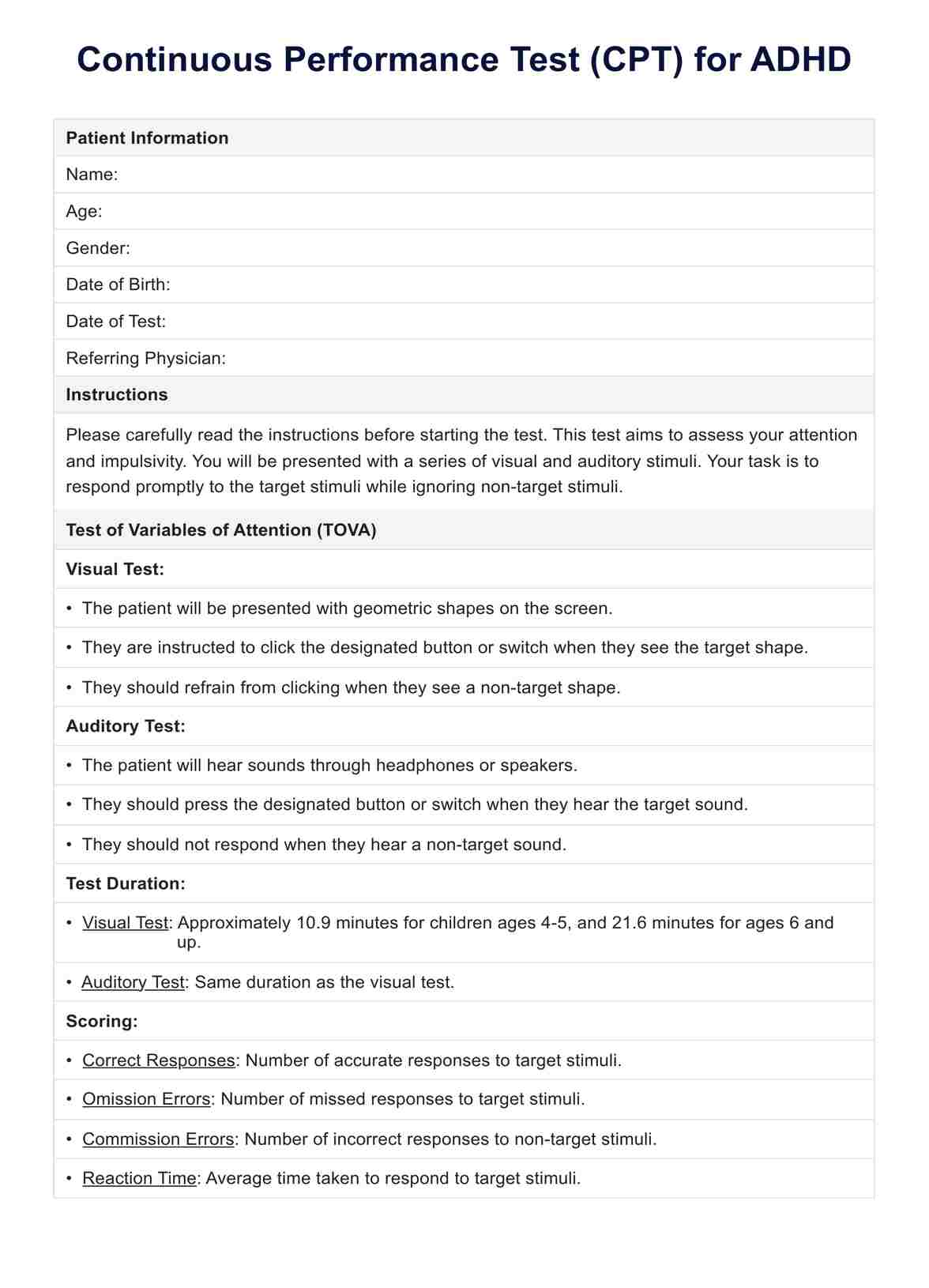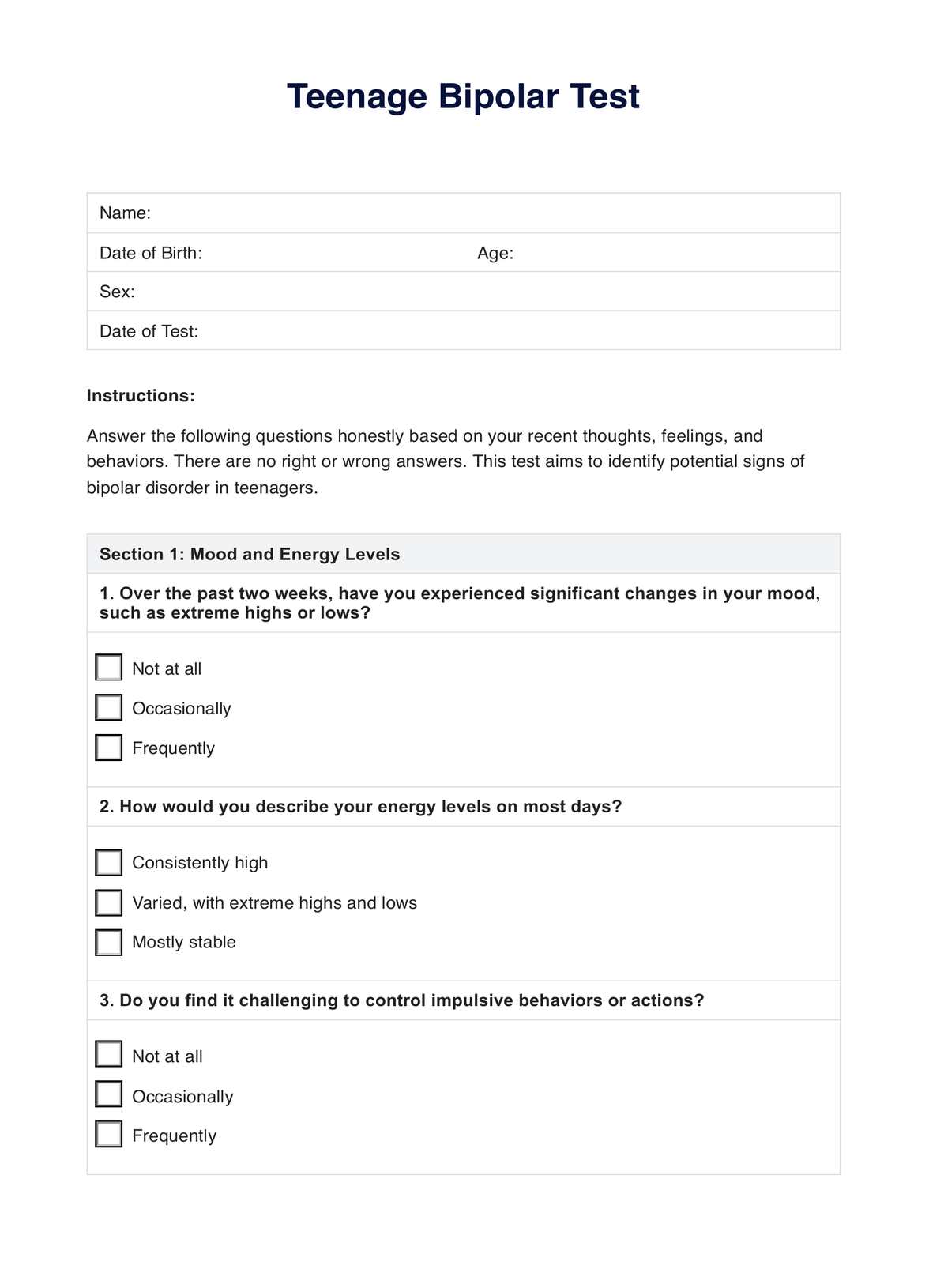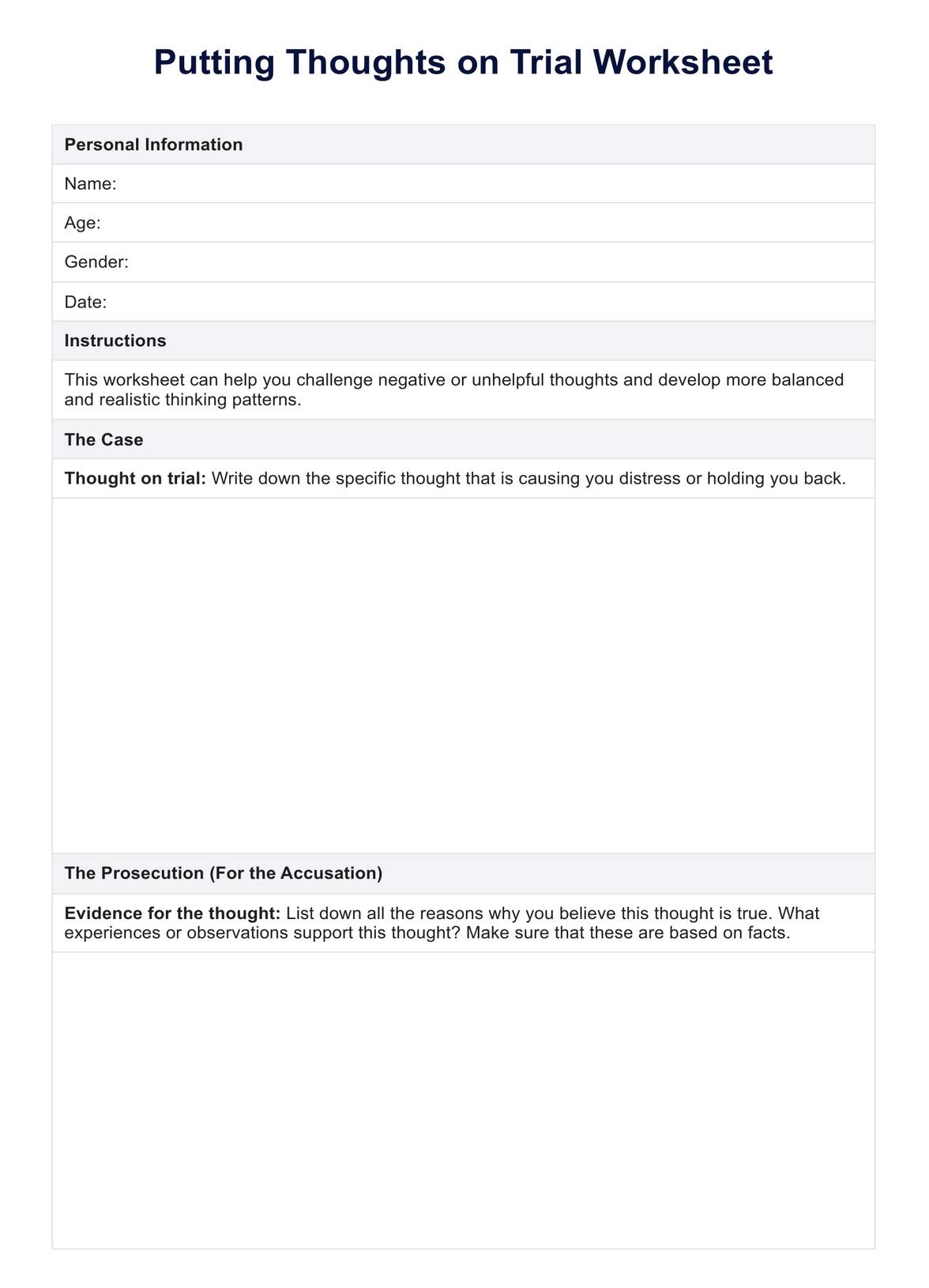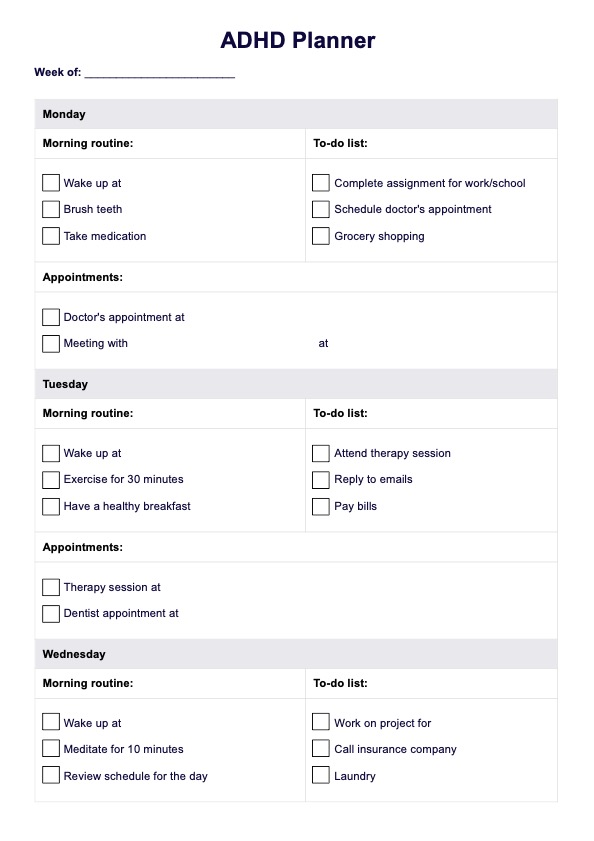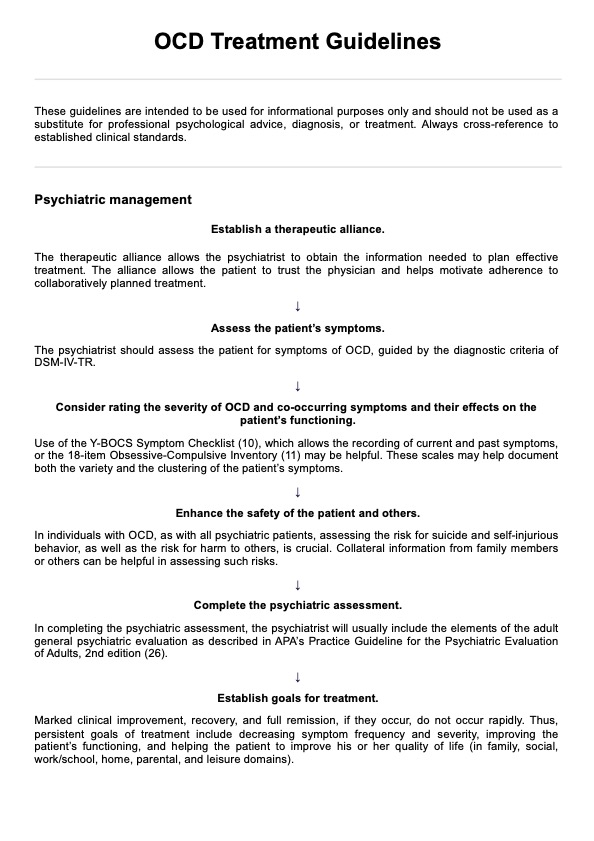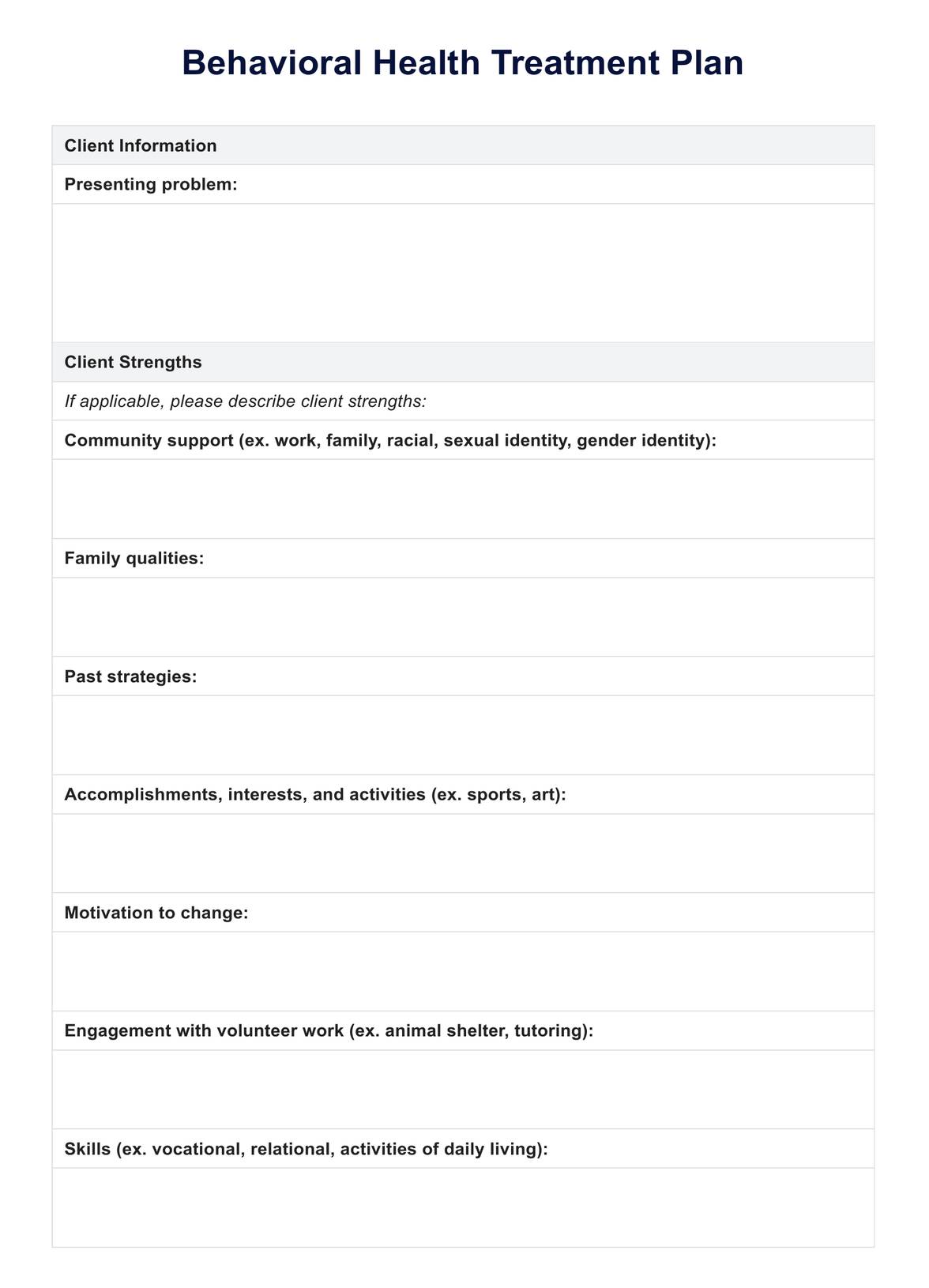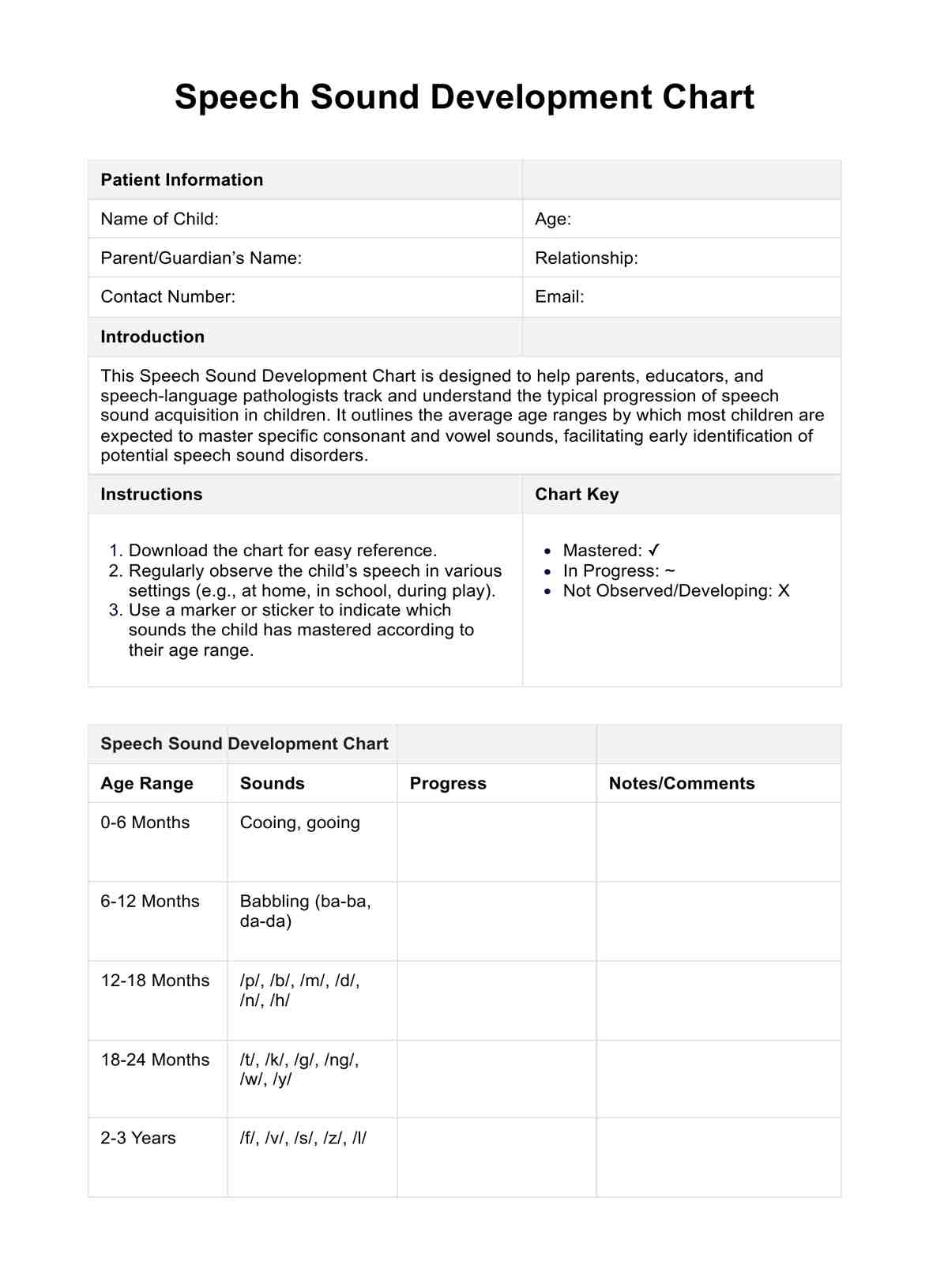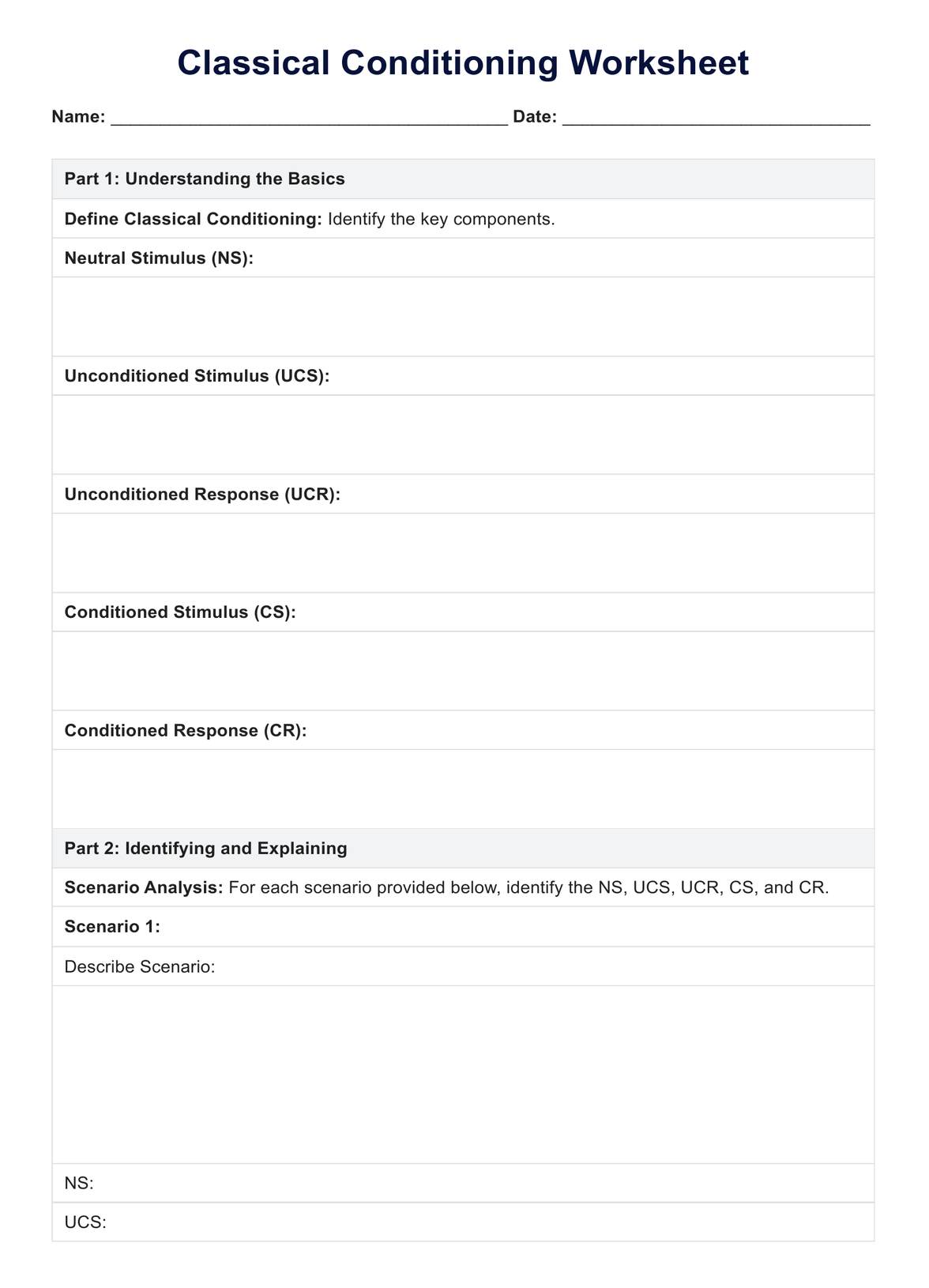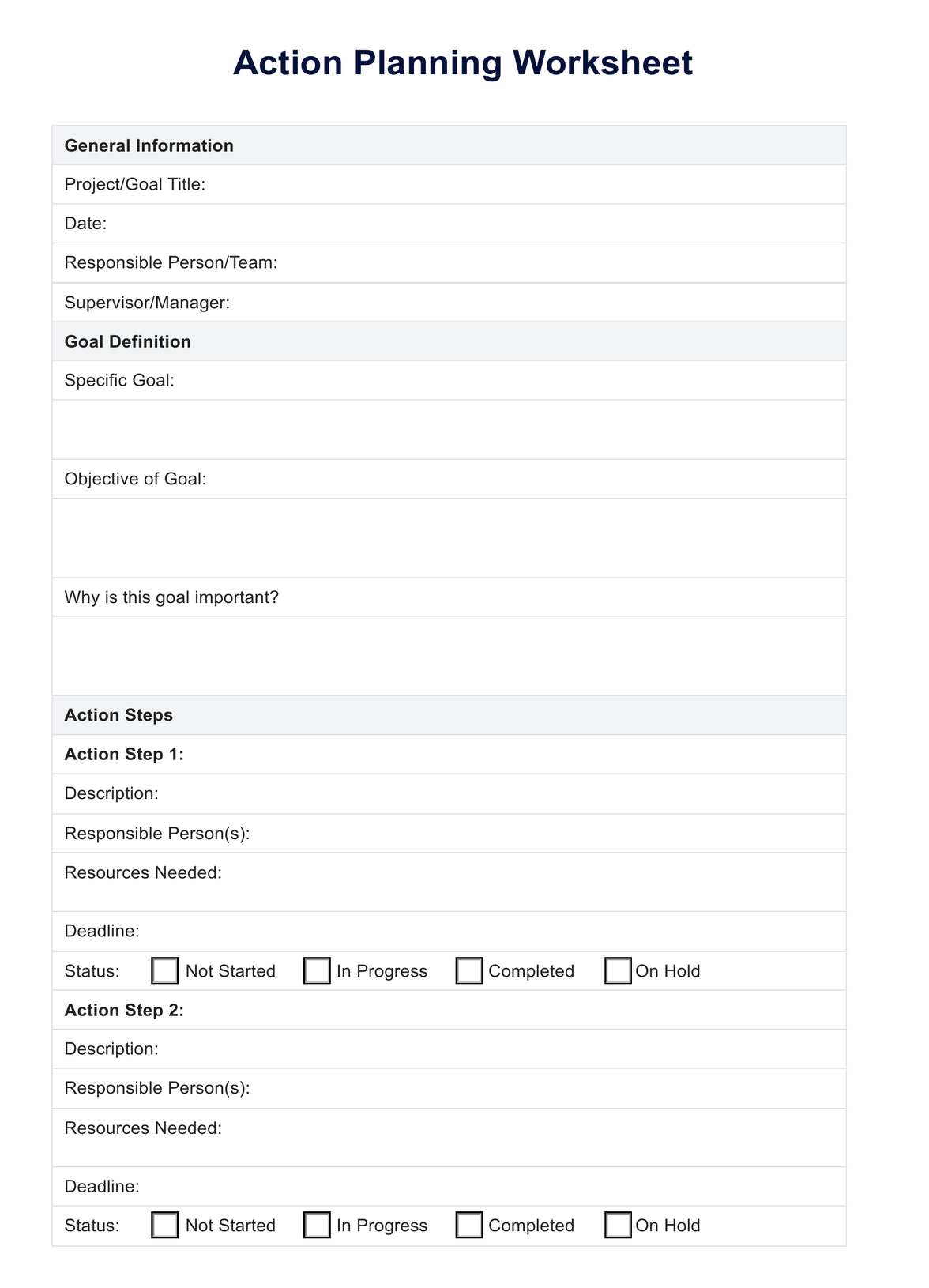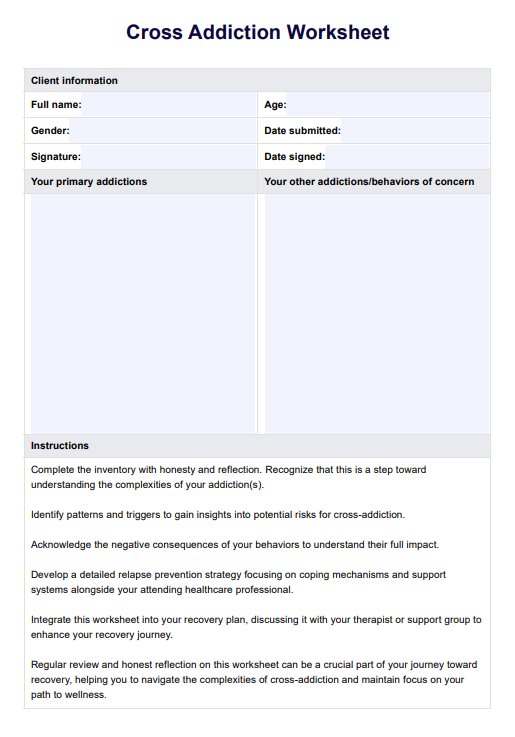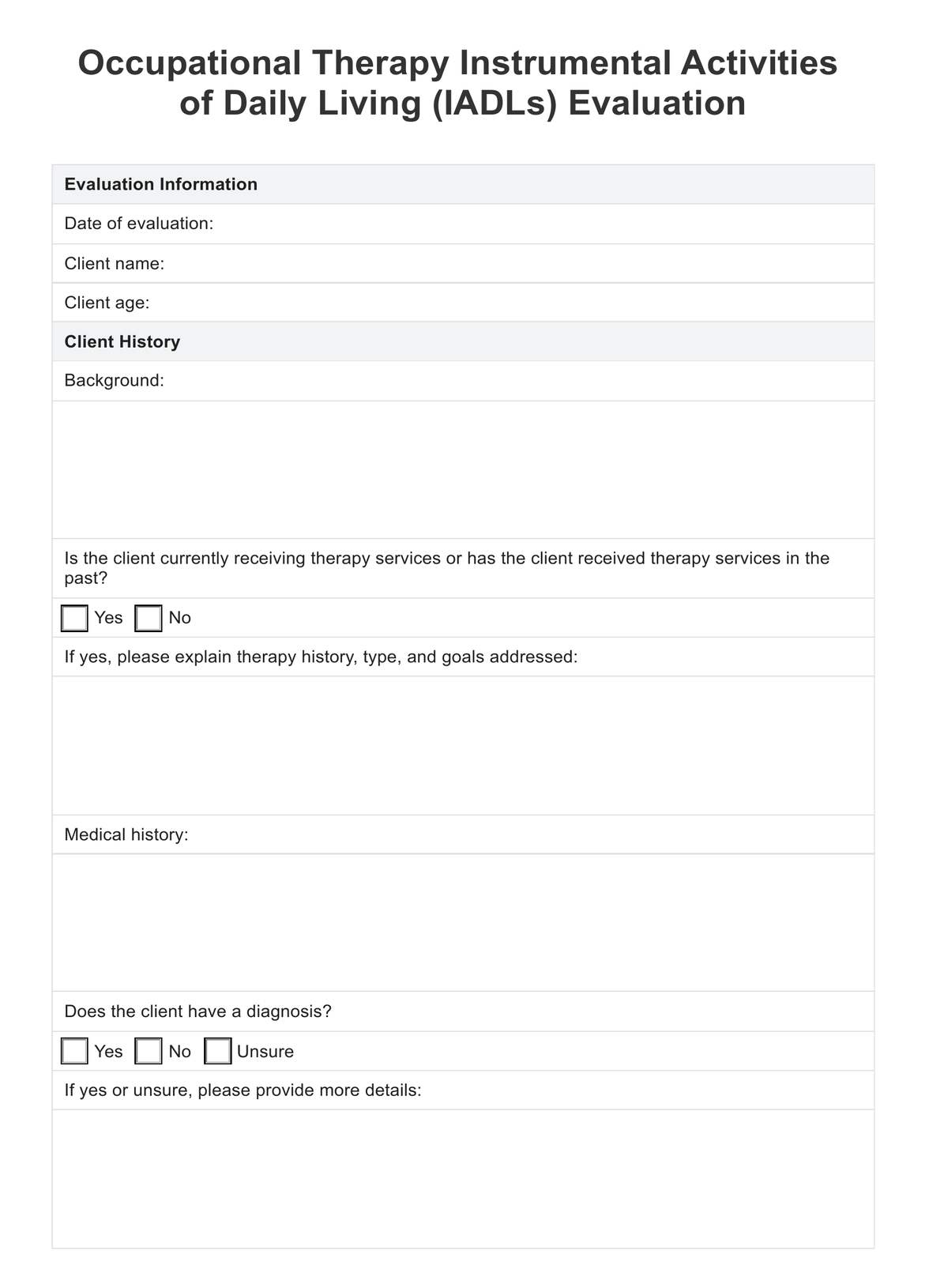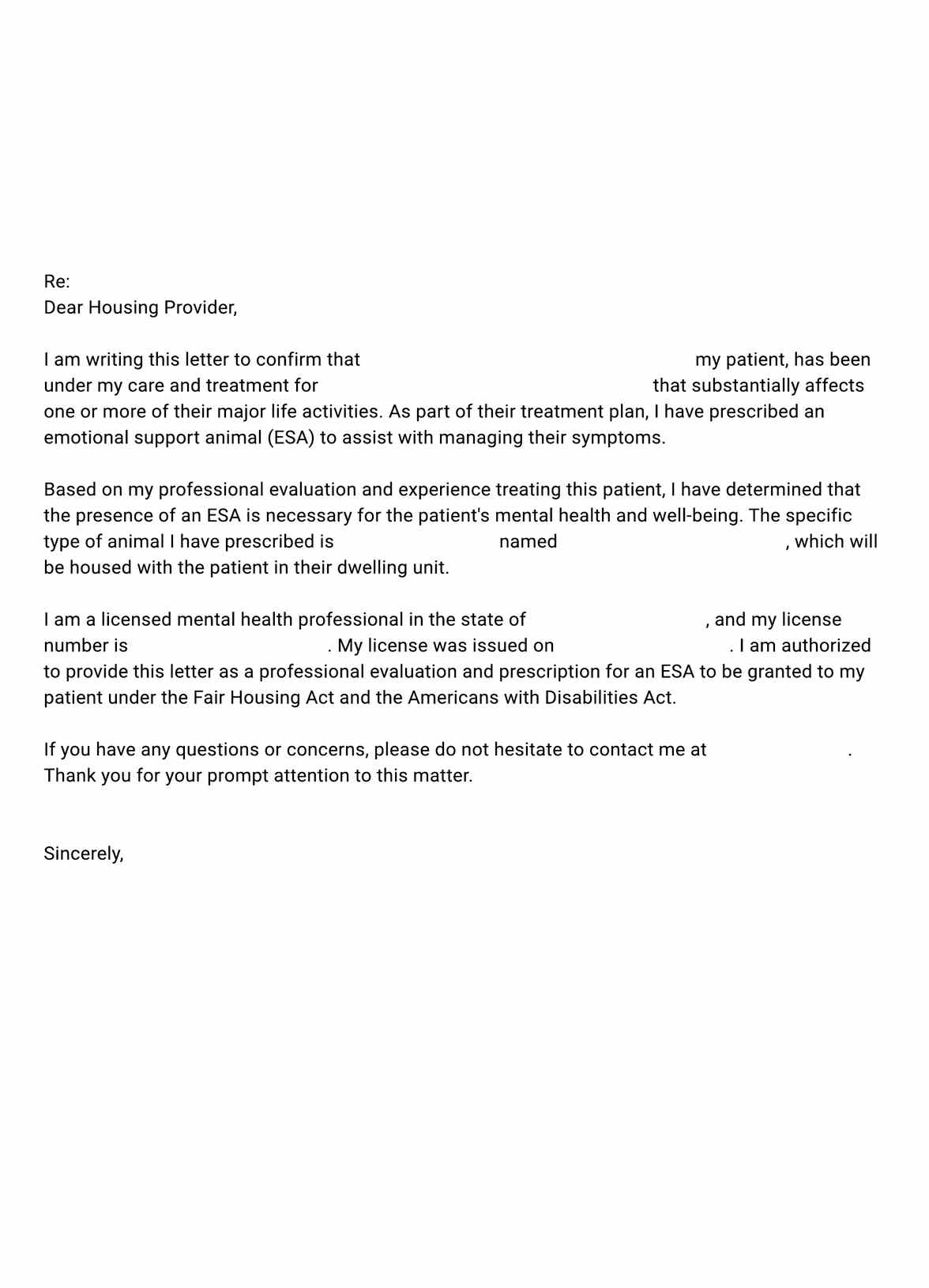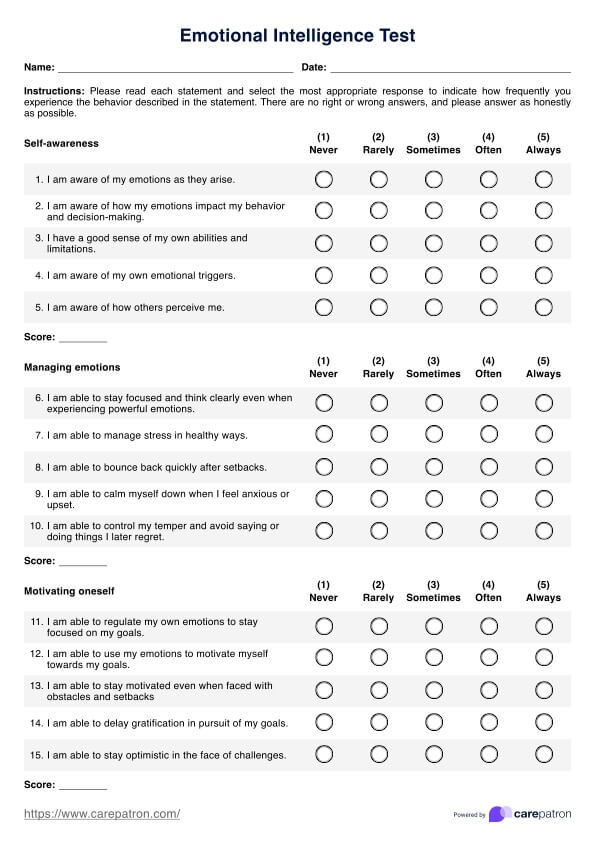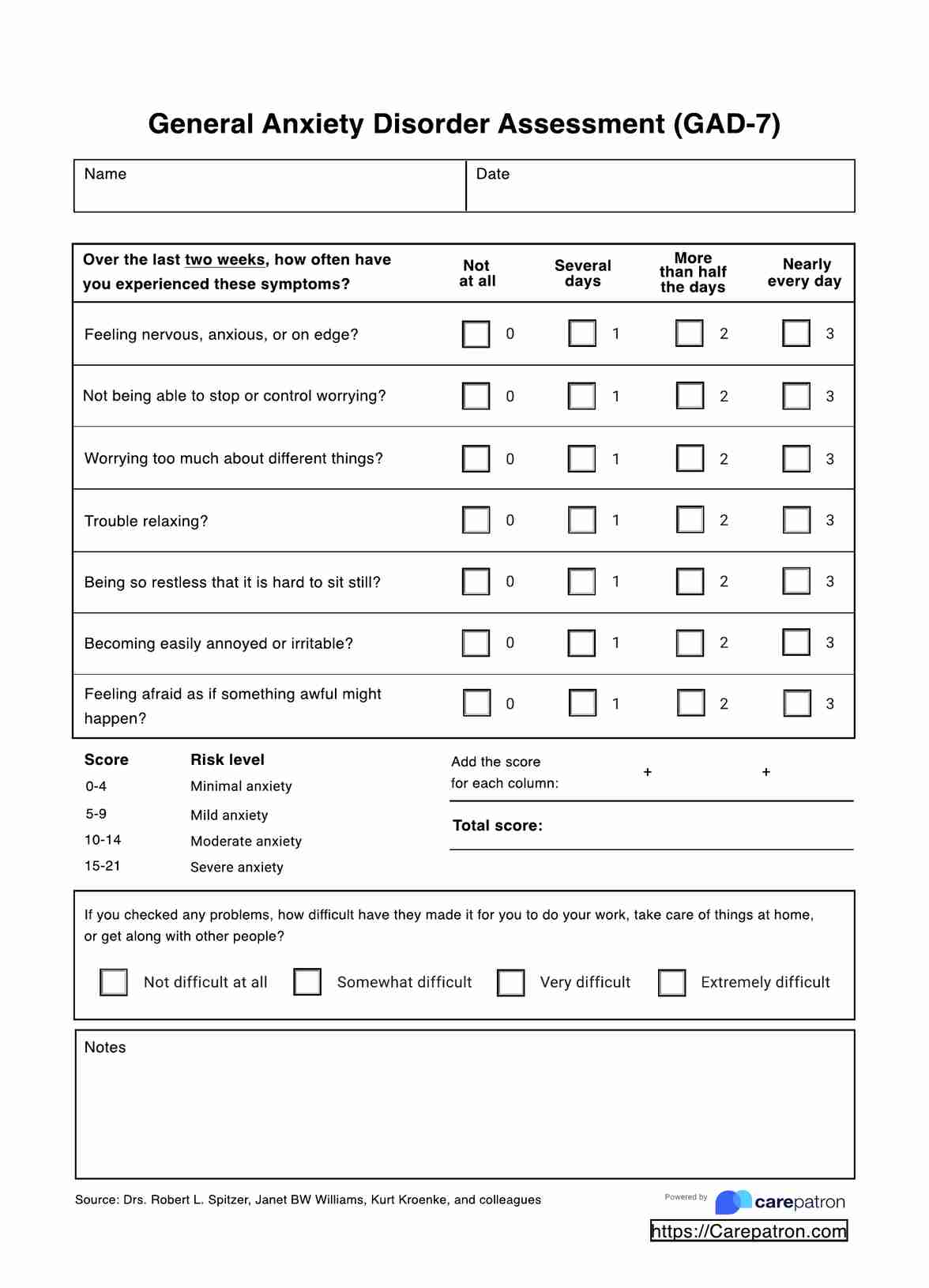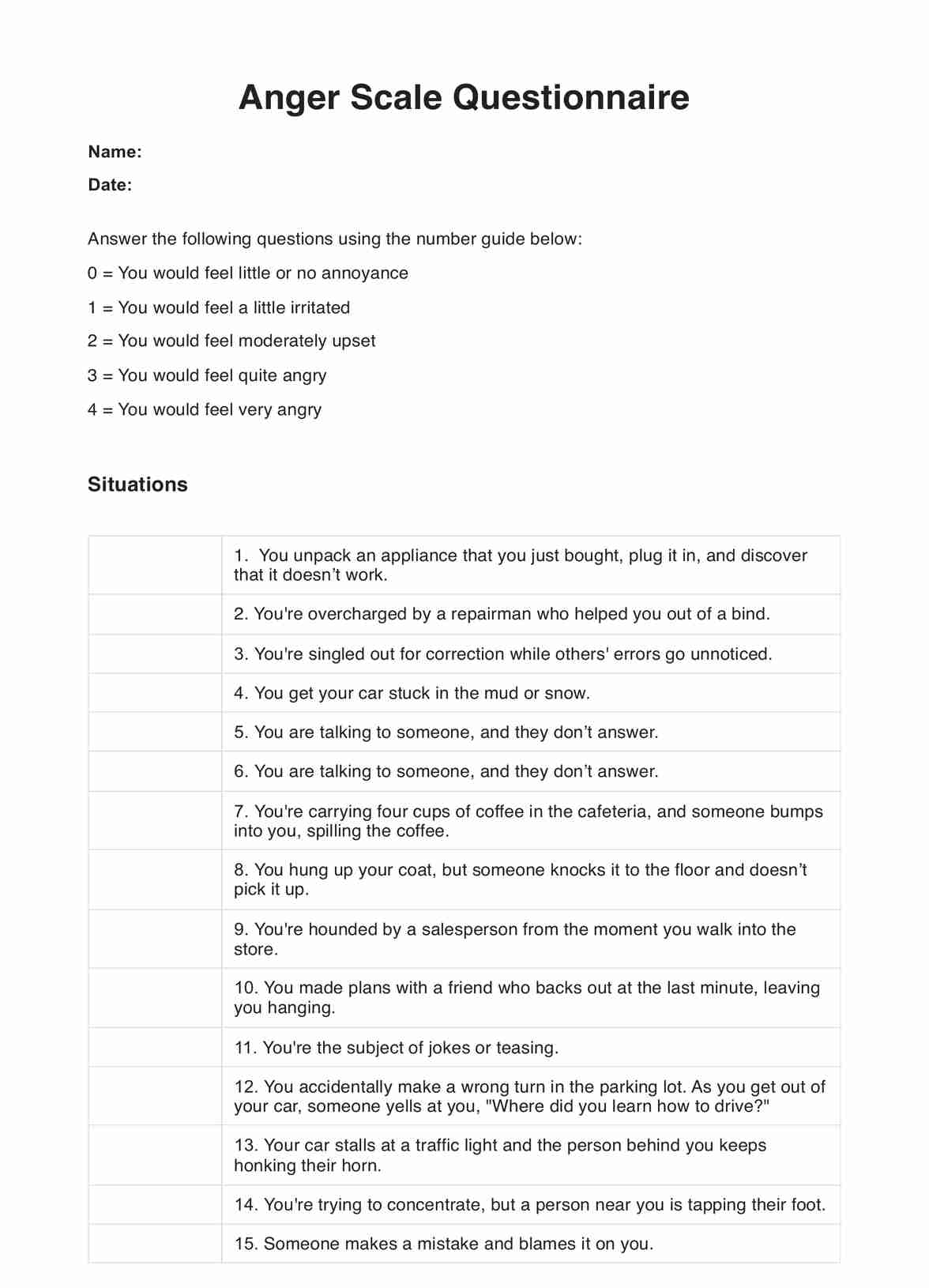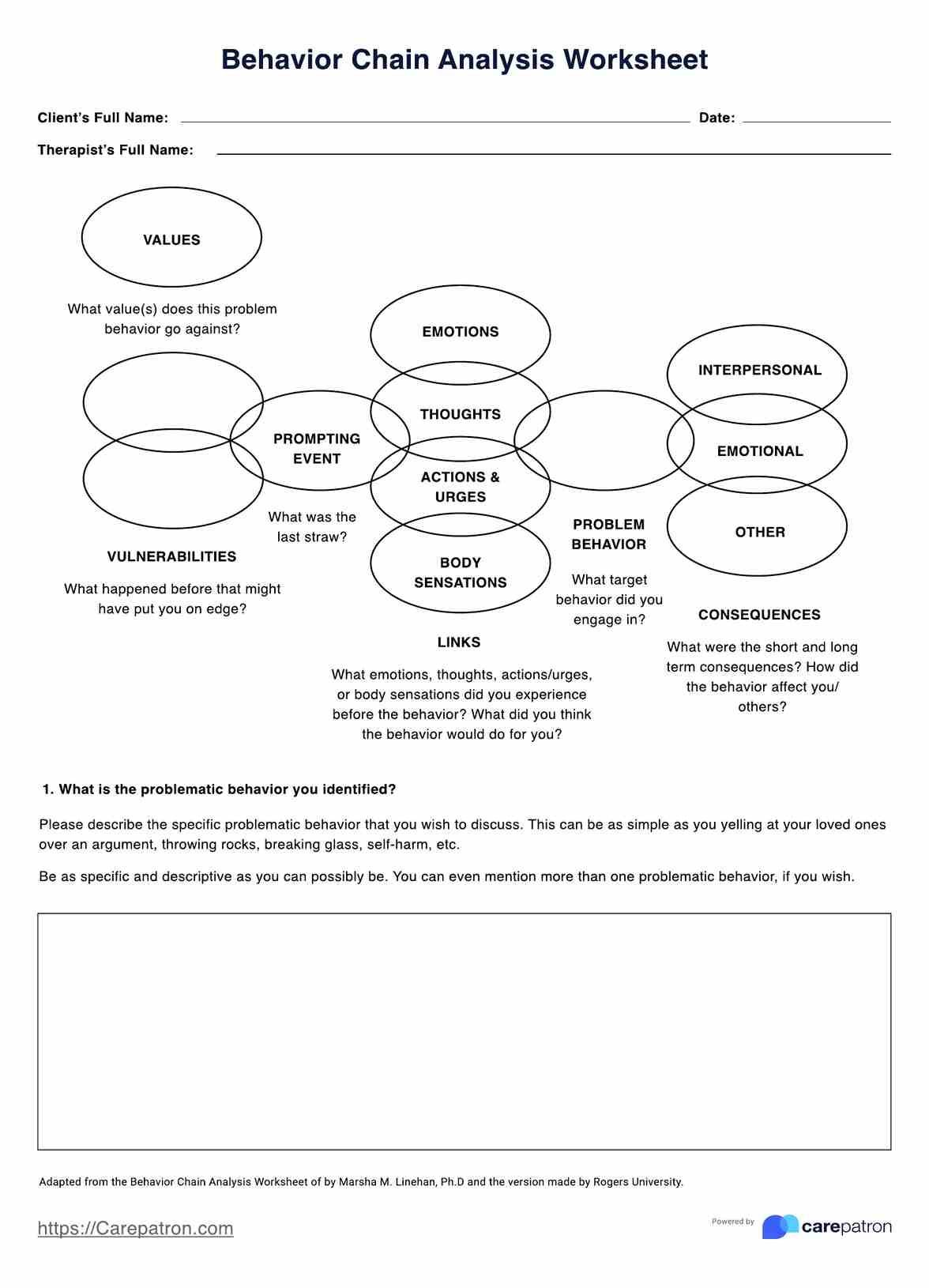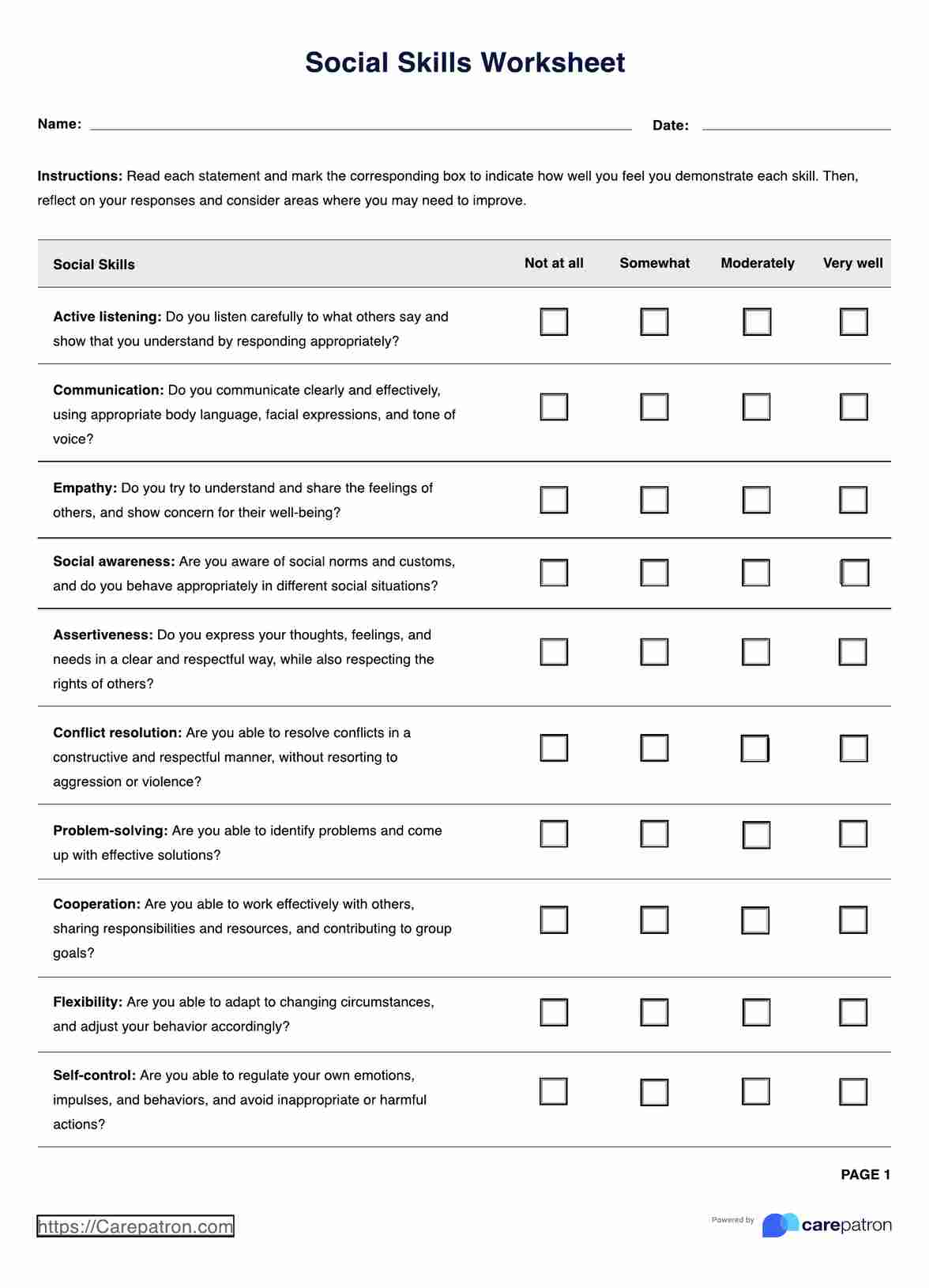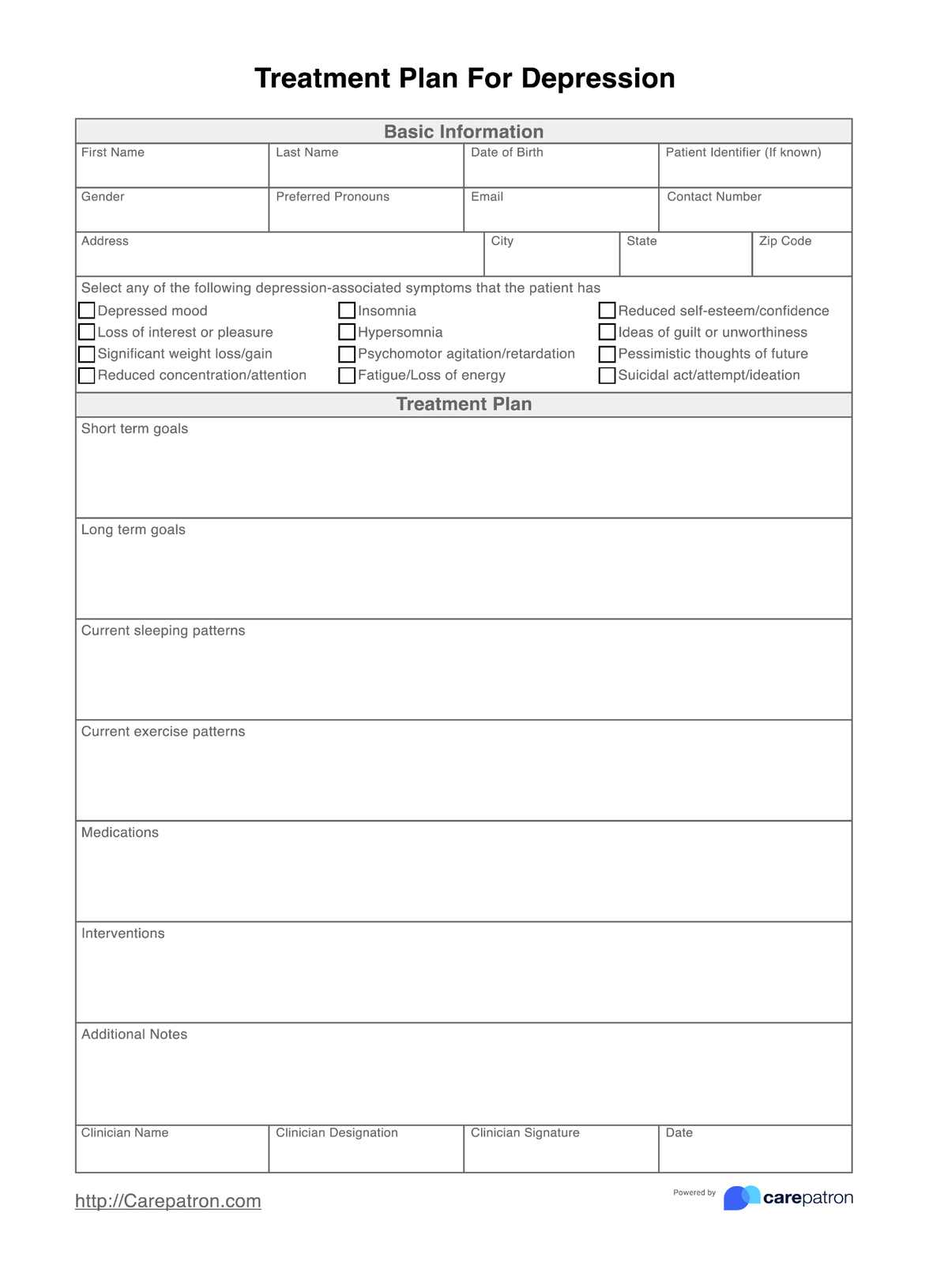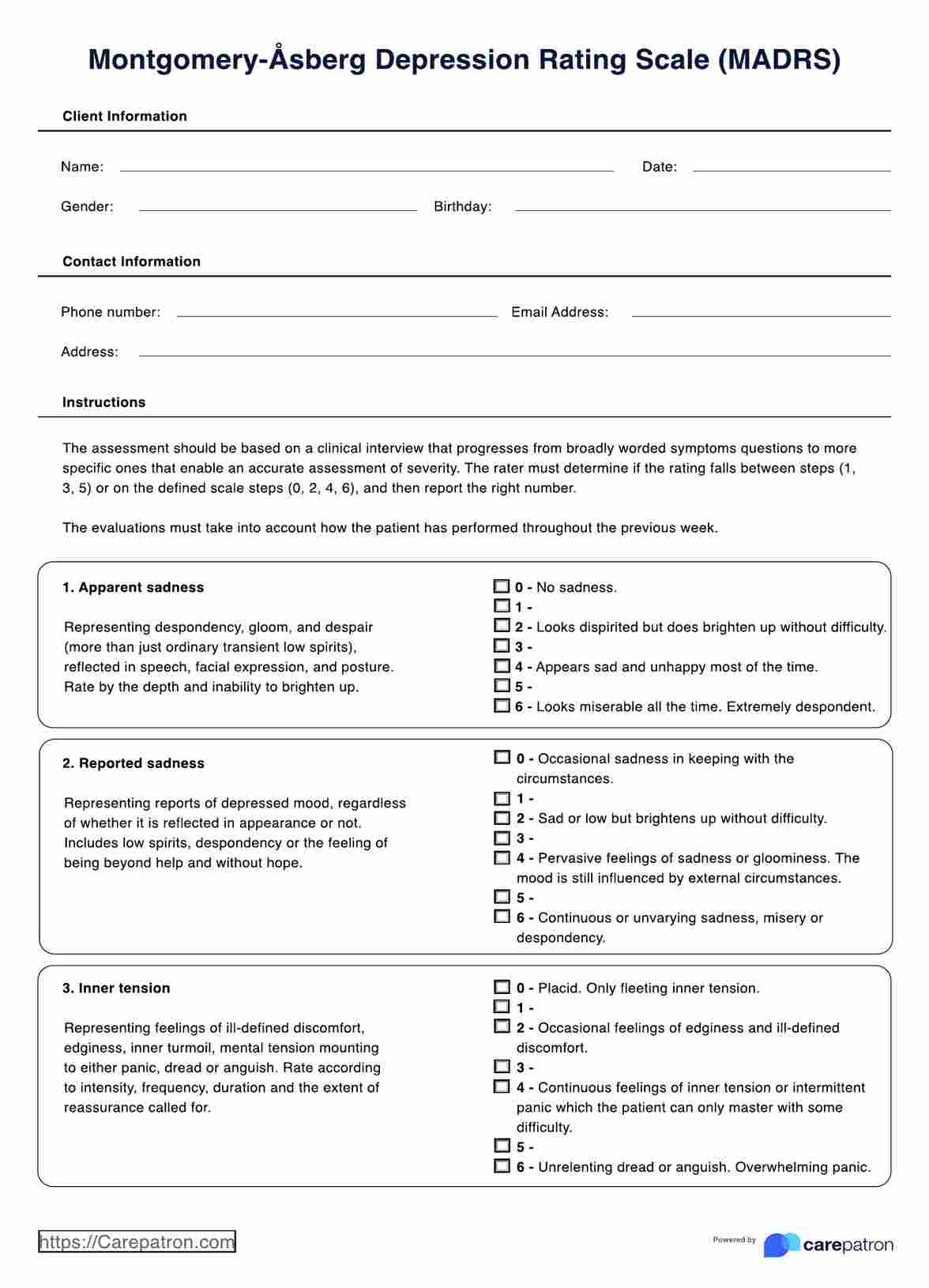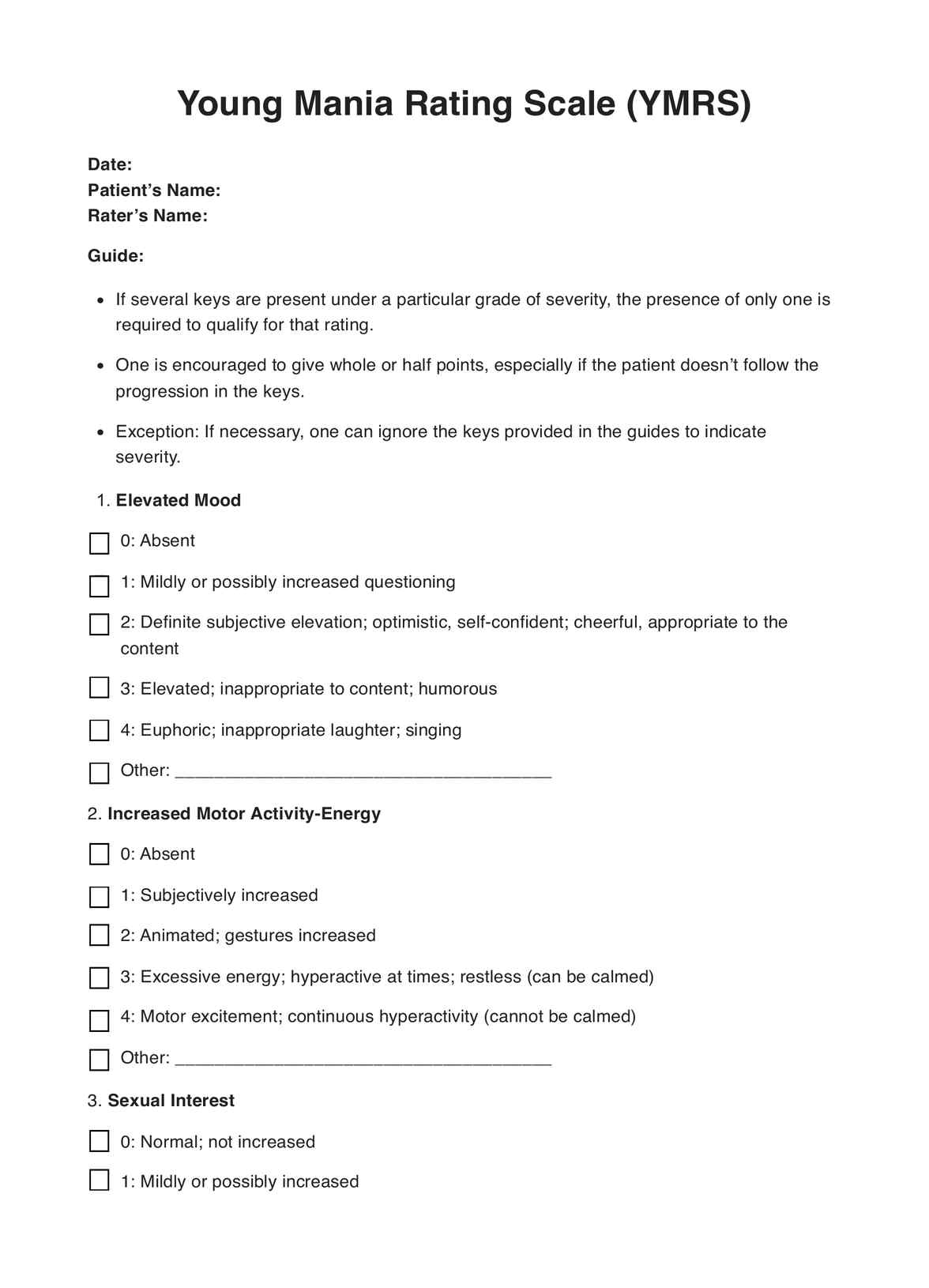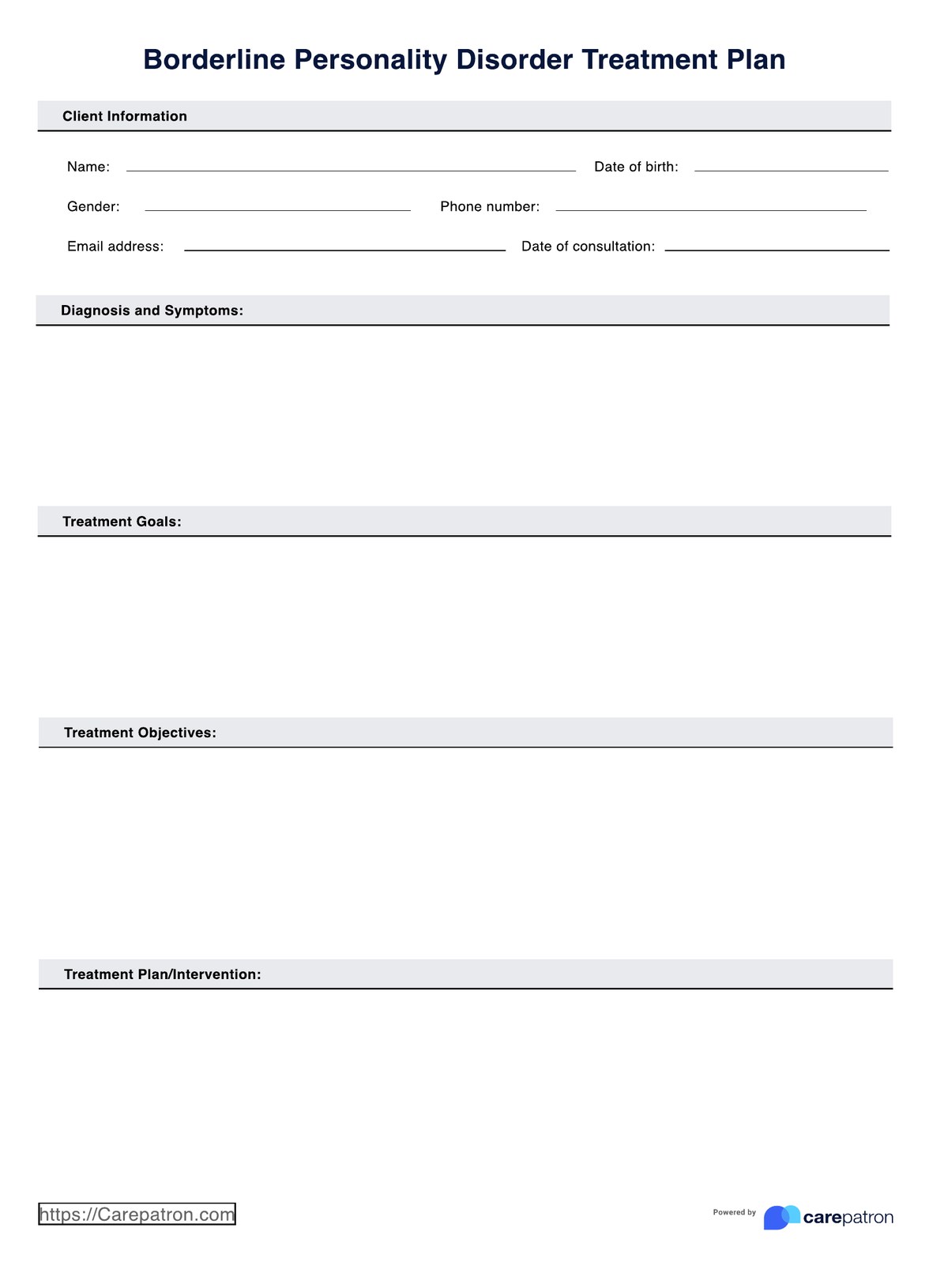Suicidal Thoughts and Behaviors Tracker PTSD Worksheet
Manage your mental health with the Suicidal Thoughts and Behaviors Tracker PTSD Worksheet. Take a proactive step and find support on your journey to recovery.



What is Trauma and PTSD?
Trauma stemming from distressing events can overwhelm an individual's coping abilities. It encompasses experiences like natural disasters, accidents, assaults, or witnessing violence, leaving profound and enduring emotional scars. Post-Traumatic Stress Disorder (PTSD) is a specific mental health condition that often emerges following trauma, marked by symptoms like intrusive thoughts, nightmares, and severe anxiety, significantly affecting daily life.
The association between PTSD and suicidal ideation and behaviors is a pressing concern. Several factors contribute to this link. First, the intense emotional pain accompanying PTSD can lead to thoughts of suicide as a perceived escape. Second, isolation resulting from PTSD can foster feelings of hopelessness. Third, hyperarousal and hypervigilance in PTSD can be mentally exhausting, pushing individuals toward suicidal thoughts.
Furthermore, distressing flashbacks and nightmares can perpetuate suicidal ideation, and substance abuse is often used to self-medicate, exacerbating the risk.
Recognizing signs of suicidal ideation in those with PTSD is crucial, as is providing appropriate support and professional help. Effective therapies like cognitive-behavioral therapy (CBT) and exposure therapy can manage PTSD symptoms and reduce the risk of suicide. Creating a supportive environment and reducing the stigma surrounding mental health issues is essential to help those with PTSD cope and find hope in their recovery.
PDF Template
Download PDF TemplateExample PDF
Download Example PDFPrintable Suicidal Thoughts and Behaviors Tracker PTSD Worksheet
Download this Suicidal Thoughts and Behaviors Tracker PTSD Worksheet to assist clients create a structured approach to monitor their mental health.
How to use the Suicidal Thoughts and Behaviors Tracker PTSD Worksheet:
Here's a step-by-step guide on how to effectively use the Suicidal Thoughts and Behaviors Tracker PTSD Worksheet:
Step 1: Get or Download the Template
Obtain a copy of the Suicidal Thoughts and Behaviors Tracker PTSD Worksheet. You can find it in various mental health resources, therapy programs, or online mental health platforms.
Step 2: Complete Basic Information
Fill in your name and date at the top of the worksheet. This establishes a baseline for tracking your progress over time.
Step 3: Assess Suicidal Thoughts and Behaviors
Answer the initial questions regarding your thoughts of suicide, plans, and actions taken for the day. Be honest and check the appropriate boxes (YES or NO).
Step 4: Self-Assessment
Rate your agreement with statements about your emotional state using a scale of 1 to 5, where one signifies "Strongly Disagree" and five represents "Strongly Agree." This self-assessment helps you gauge your emotional well-being.
Step 5: Tracking Table
Use the table provided to record specific details about your thoughts and behaviors related to suicide. Include the date, triggers, thoughts or feelings, and actions taken. This section lets you identify patterns and triggers contributing to suicidal ideation or behaviors.
Step 6: Reflect and Communicate
Answer the questions at the end of the worksheet to gain insight into your experiences. Consider seeking professional help and confiding in a trusted person about your suicidal thoughts. Remember, seeking help is a sign of strength.
Suicidal Thoughts and Behaviors Tracker PTSD Worksheet Example
The Suicidal Thoughts and Behaviors Tracker PTSD Worksheet PDF offers users a structured approach to monitor their mental health and suicidal thoughts, fostering self-awareness and enabling essential communication with mental health professionals and support networks.
It aids users in assessing their suicide risk, prompting reflection on their thoughts and actions. Users can rate their emotional well-being for self-reflection, gain insights into their mental state, and document triggers, thoughts, and actions in a tracking table to understand their emotional journey. Lastly, it stresses the significance of seeking professional help and confiding in trusted individuals, highlighting that reaching out is an act of bravery.
It helps individuals to take charge of their mental health, promoting understanding and hope in their path to recovery. Download this essential tool today to prioritize well-being and embark on healing.
Download this Suicidal Thoughts and Behaviors Tracker PTSD Worksheet Example:

When would you use this Suicidal Thoughts and Behaviors Tracker PTSD Worksheet?
Individuals with PTSD: Those diagnosed with Post-Traumatic Stress Disorder can use this worksheet to monitor their mental health continuously. It's especially beneficial during increased stress, when intrusive thoughts or suicidal ideation may become more pronounced. Regular use can help individuals recognize patterns, triggers, and worsening symptoms, enabling them to seek timely professional help.
Mental Health Professionals: Therapists, counselors, and psychiatrists can incorporate this worksheet into their treatment plans for clients with PTSD. It provides a structured way to assess and track suicidal thoughts and behaviors, allowing healthcare providers to tailor their interventions effectively and monitor their clients' progress.
Emergency Situations: When immediate intervention is necessary in a crisis, this worksheet can serve as a quick assessment tool for healthcare professionals in emergency departments or crisis hotlines. It aids in evaluating the severity of suicidal thoughts and behaviors and can guide the allocation of appropriate care resources.
Caregivers and Support Networks: Friends and family members of individuals with PTSD can also use this worksheet to understand their loved one's mental health better. It encourages open communication, helps caregivers to provide emotional support, and encourages professional help-seeking when necessary.
What are the benefits of using this Suicidal Thoughts and Behaviors Tracker PTSD Worksheet?
The free Suicidal Thoughts and Behaviors Tracker PTSD Worksheet offers a range of benefits for individuals dealing with Post-Traumatic Stress Disorder (PTSD) and mental health professionals alike.
Enhanced Self-Awareness
One of the primary benefits of using this worksheet is that it encourages individuals to become more self-aware of their thoughts and emotions. By systematically recording their thoughts, triggers, and actions, users can better understand the patterns and factors contributing to their suicidal thoughts and behaviors.
Structured Monitoring
The worksheet provides a structured framework for monitoring one's mental health. It allows individuals to track their symptoms and experiences over time, making it easier to identify changes or trends. This structured approach can be beneficial during therapy.
Facilitates Communication
Another benefit is that this worksheet can facilitate open and honest communication between individuals with PTSD and their mental health professionals or support networks. The data recorded can serve as a starting point for discussions, enabling more targeted and effective interventions.
Encourages Help-Seeking
By emphasizing the importance of seeking professional help and confiding in trusted individuals, the worksheet helps reduce the stigma associated with mental health challenges.
Why use Carepatron as your Cognitive Behavioral Therapy app?
Carepatron is the go-to CBT therapy app for healthcare professionals seeking comprehensive examination and therapy solutions. Its versatility and user-centric design make it the optimal choice for delivering high-quality care across various dimensions.
Firstly, Carepatron excels as a CBT therapy software. It offers many CBT therapy tools and resources, making it an invaluable asset for mental health professionals. The interactive features and evidence-based interventions help therapists to provide effective cognitive behavioral therapy.
It goes beyond mental health EHR; it is an all-inclusive platform for healthcare professionals, aiding general clinical practice. It streamlines patient management, appointment scheduling, and secure communication, enhancing efficiency and patient care.
On top of that, it allows healthcare professionals to conduct thorough assessments, track patient progress, and access data insights. This facilitates accurate diagnosis and supports evidence-based decision-making, ensuring the best care.

Commonly asked questions
The time required to complete the worksheet can vary depending on the individual and the depth of reflection involved. Typically, a thorough assessment and completion may take 15 to 30 minutes.
The worksheet can be completed manually by individuals or with the guidance of a mental health professional. It is a self-assessment tool designed to aid individuals in monitoring and addressing their thoughts and behaviors related to suicide.
It is best used when individuals are experiencing thoughts of suicide, have made specific plans, or have taken steps toward carrying out a plan. It's also valuable for routine mental health monitoring, especially when managing PTSD or related conditions.



